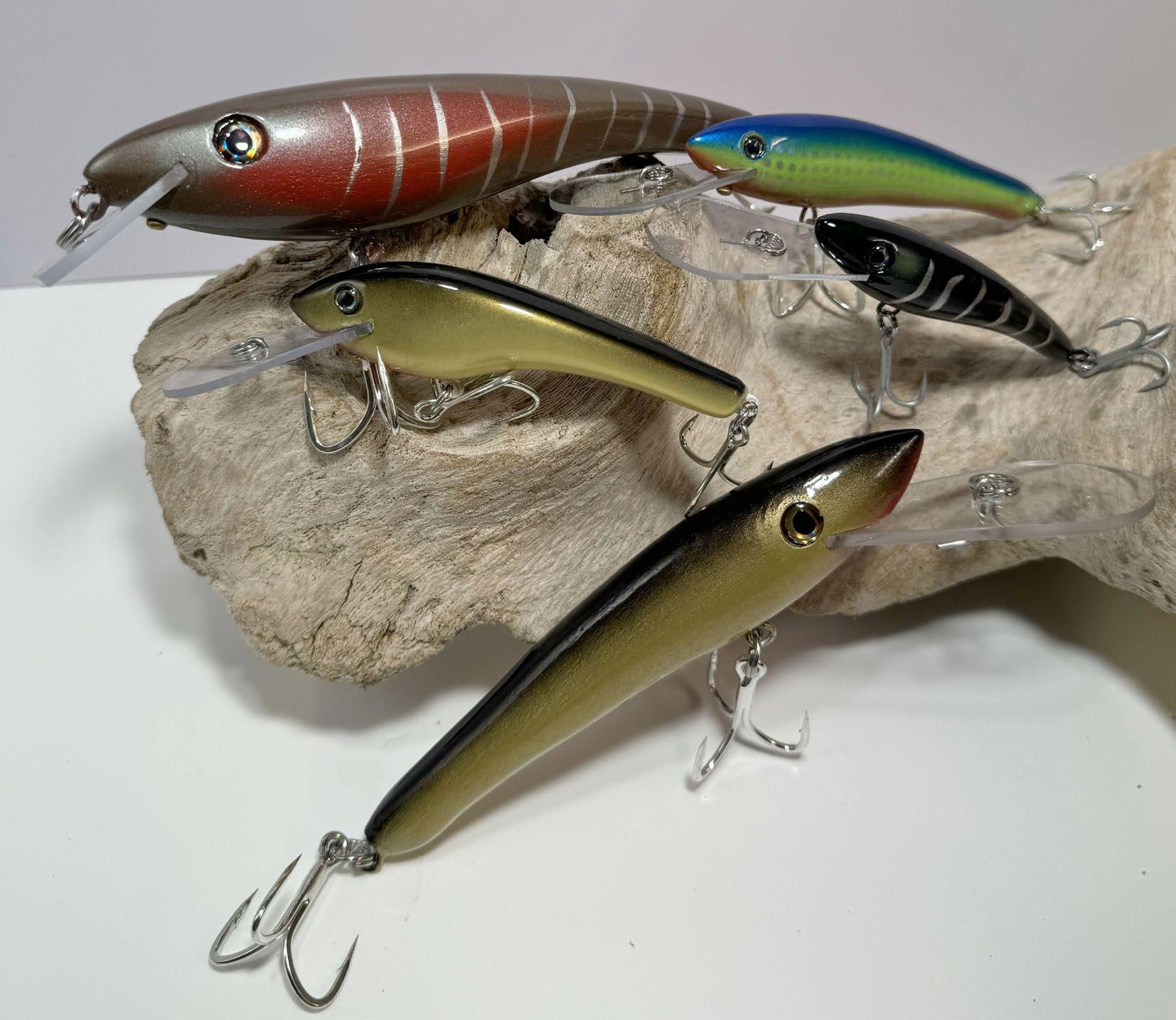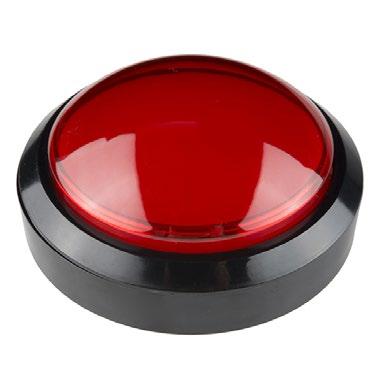






















You don’t have to be a genius to know that nothing will grow if you don’t plant a seed. So it’s encouraging to see so many in the fishing industry, from small clubs to large companies, nurturing those seeds to ensure the growth and sustainability of what we love for generations to come. The fishing industry has progressed from being seen as a “boys’ club” where women were often just bikini-clad eye candy to becoming a sport that the whole family, young and old, can enjoy and be involved in at any level.
In this issue, there are no better examples of this than the article from Jo Starling who introduces us to the Women in Recreational Fishing League and from John “Bear” Willis, who takes a look at the Merimbula Big Game and Lakes Angling Club. We also have the return of “The Lure of it All” as we sit down with Glenn and Natasha Buttler from Walkabout Products. Tangaroa Blue shows us how they got started 20 years ago, the Tuna Champions follow on from last issue to show us some tasty tuna treats and Starlo and Damon are once again full of top hints and tips as they educate us on being successful on the next fishing trip.
This issue sees the start of a regular piece from Tassie gun Damon Sherriff who takes us into his world of fish taxidermy with the new Tasmanian Fish Artistry column. Cheers.
Spooled is dedicated to providing content that is not only entertaining but focused on being current, relevant, informative and educational. All content contain within the magazine remains the property of Spooled must not be copied without permission.
Production Manager - Simon Bryan Editor - Shane Mensforth
Advertising Manager - Rob Maya
Video Editing - Dillon Bryan
Contributors for this issue:
Steve Starling
Damon Sherriff
Tuna Champions
Tangaroa Blue
John Willis
Jo Starling
Don't forget the new Spooled App is available NOW to download for FREE!
Simply tap here


Congratulations to: Matt Deemo from ACT who was last issues winner of the polarised sunglasses from our good friends at TONIC.








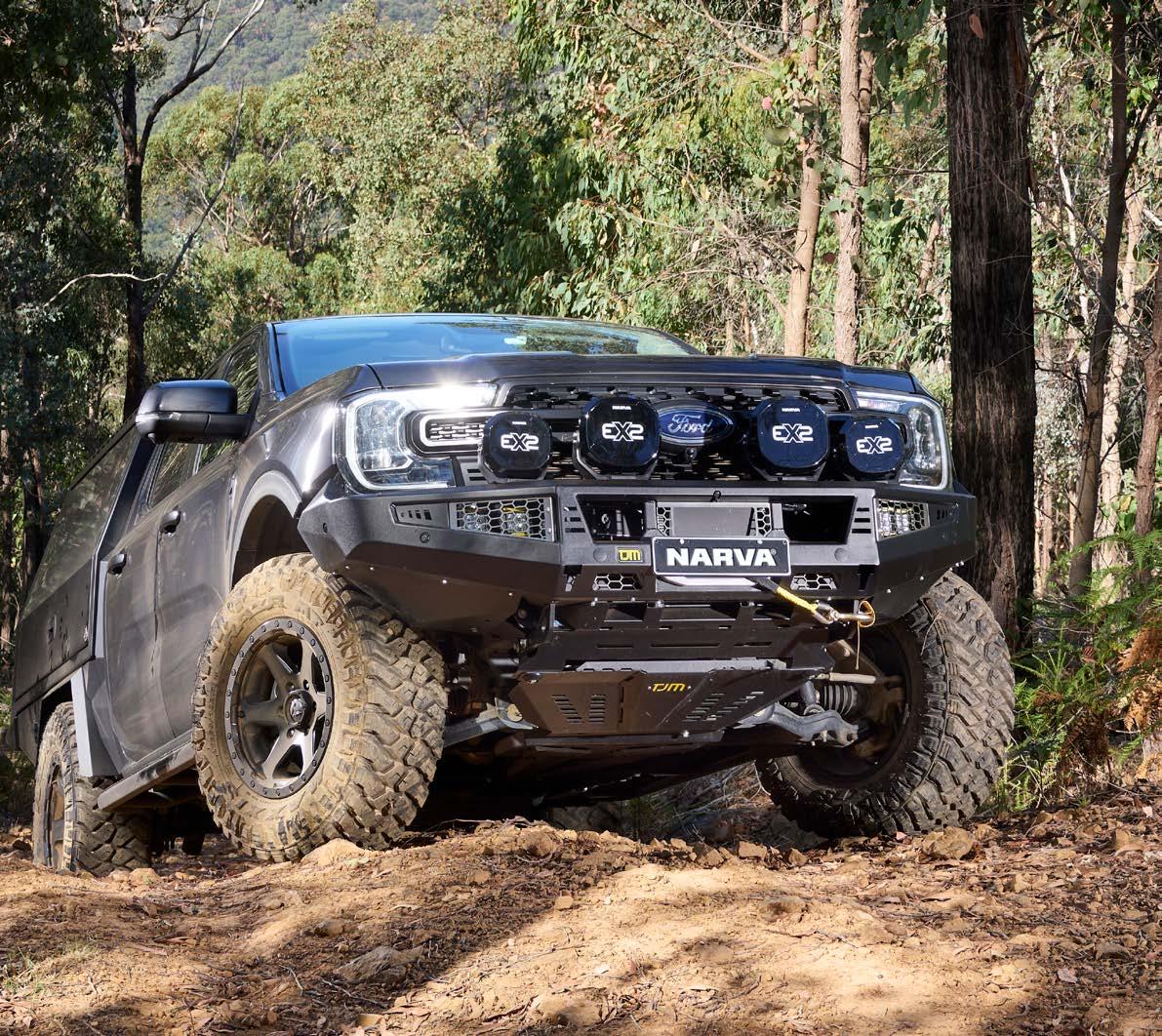
Narva's new EX2 range offers unrivalled expression with over 20 models, interchangeable colour trims and RGB enabled position lights (EX2R) so you can tailor them to your vehicle or your mood with our phone app.
EX2’s hybrid beam provides outstanding width and distance, ensuring exceptional clarity in the dark and Narva’s revolutionary patent-pending harness-free technology makes installation easy. Plus get added confidence with Narva's ‘no-fault’ 7-year warranty.^


JO STARLING — WRFL, FOUNDER AND NATIONAL PRESIDENT, EXPLAINS HOW ONE SPORTING LEAGUE IS GIVING FISHING A MUCH-NEEDED FACELIFT.
The typical Australian recreational fisher has long been envisioned as the rugged, sun-kissed individual in a wide-brimmed hat, casting lines from the break of dawn. This image is as enduring as it is exclusive, often evoking a masculine archetype that overlooks the diversity among fishing enthusiasts. Indeed, this perception has anchored itself deeply within the Australian cultural psyche, woven into stories passed down through generations, celebrated in advertisements, and reinforced by media portrayals.
However, as Australia’s demographics and societal attitudes evolve, so too does the need for a more inclusive representation of who can and does enjoy fishing. The rise of female sportfishers is not just a nod to gender equality but a critical movement for the sport’s future—breathing new life into an age-old pastime and ensuring its continued relevance and acceptance in modern society.
Increasing the participation and profile of women in recreational fishing does more than simply balance the scales; it has the potential to transform the public perception of the sport. Women bring new perspectives, techniques, and a nurturing respect for the conservation and sustainability of aquatic ecosystems. Their increased visibility sends a powerful message: fishing is a universal pursuit, a sport of patience, strategy, and finesse that transcends gender.
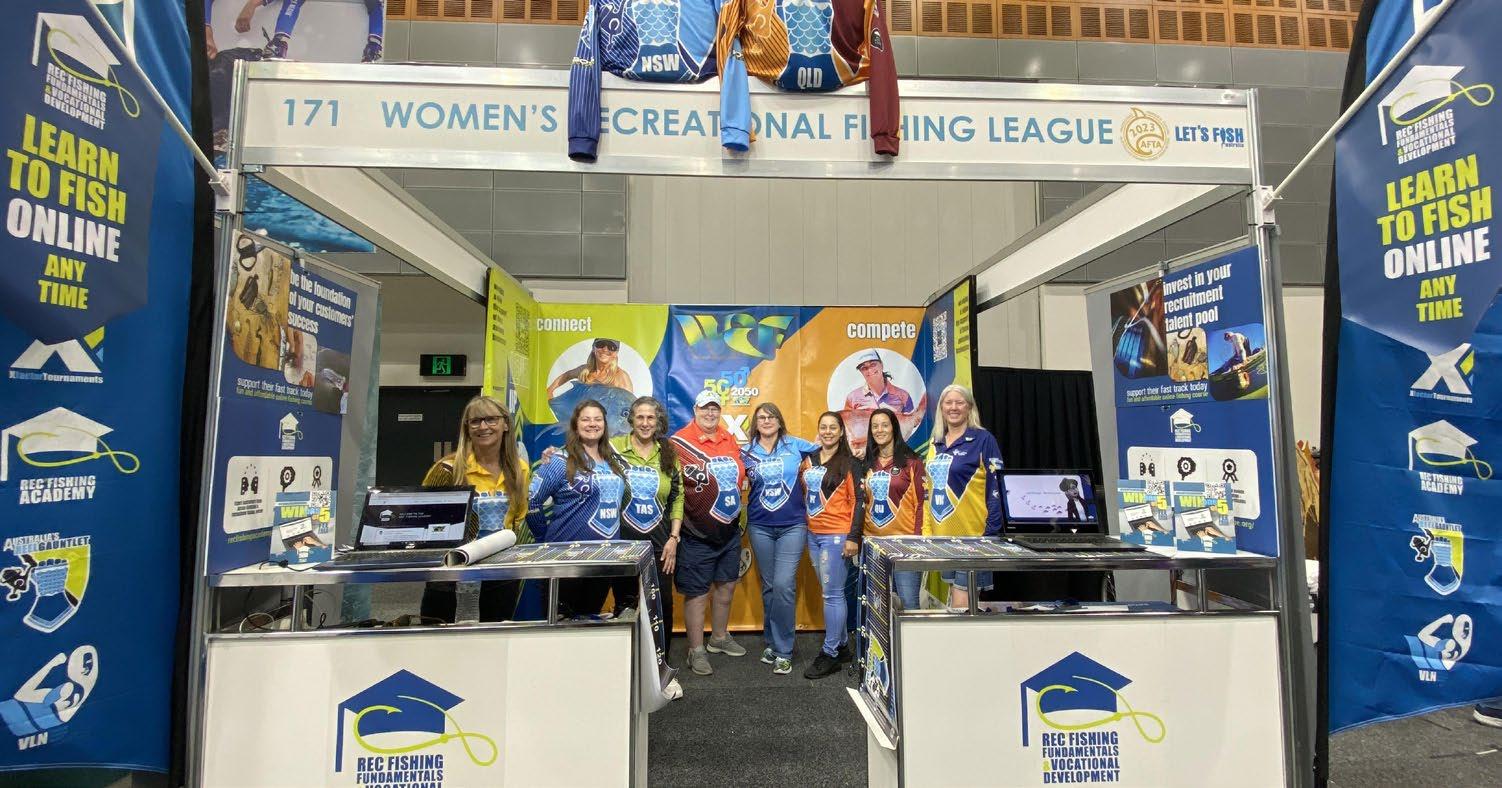
WRF Leaders from across the country (from left: Nikki Hunt, WA; Kendl Cramer, NSW; Anna Bellette, TAS; Laurie Anderson, NSW; Jo Starling, NSW; Crystalla Sackley, NT; Kym Adams, QLD; and Nikki Bryant, VIC) came together at the 2023 AFTA (Australian Fishing Trades Assoc.) Tackle Show on the Gold Coast to launch the League and it’s many initiatives nationally.
By raising the stature of female sportfishers, the industry not only secures its social licence but expands it. It dispels outdated notions that fishing is merely a man’s escape and instead presents it as a pastime of environmental stewardship and community. A balanced representation in the sport leads to a healthier dialogue around the role of fishing in conservation efforts and a shared responsibility for the marine environment.
In reshaping this identity and diversifying its participants, the sport can earn broader societal support and safeguard its legacy. With women standing shoulder to shoulder with men along riverbanks and on boats, the Australian recreational fishing sector casts a wider net, capturing the hearts of a more varied demographic and ensuring the longevity of its social licence for generations to come.
This is a vital mission. We need only flip the news archives back to February 2024 to find how this dyed-in-the-wool marauding archetype can be wielded against us like a flamethrower. You may remember (or even still be pushing back against) the decision of the NSW Fisheries Minister to ban all recreational fishing for blue groper in her state. The press release asserted they were like the “Labradors of the sea”. We may not have heard the nuance in that language through the sound of our collective jaws hitting the floor, but I have no doubt that an anti-fishing ignorati with a much grander game plan than one curious blue fish fed those words to her.
Taking the power out of that flamethrower is a strategic move we, as a community, must accelerate. And to do that, we need to elevate the profile of women in recreational fishing and amplify their voices. To do this, we need more women singing in the choir!
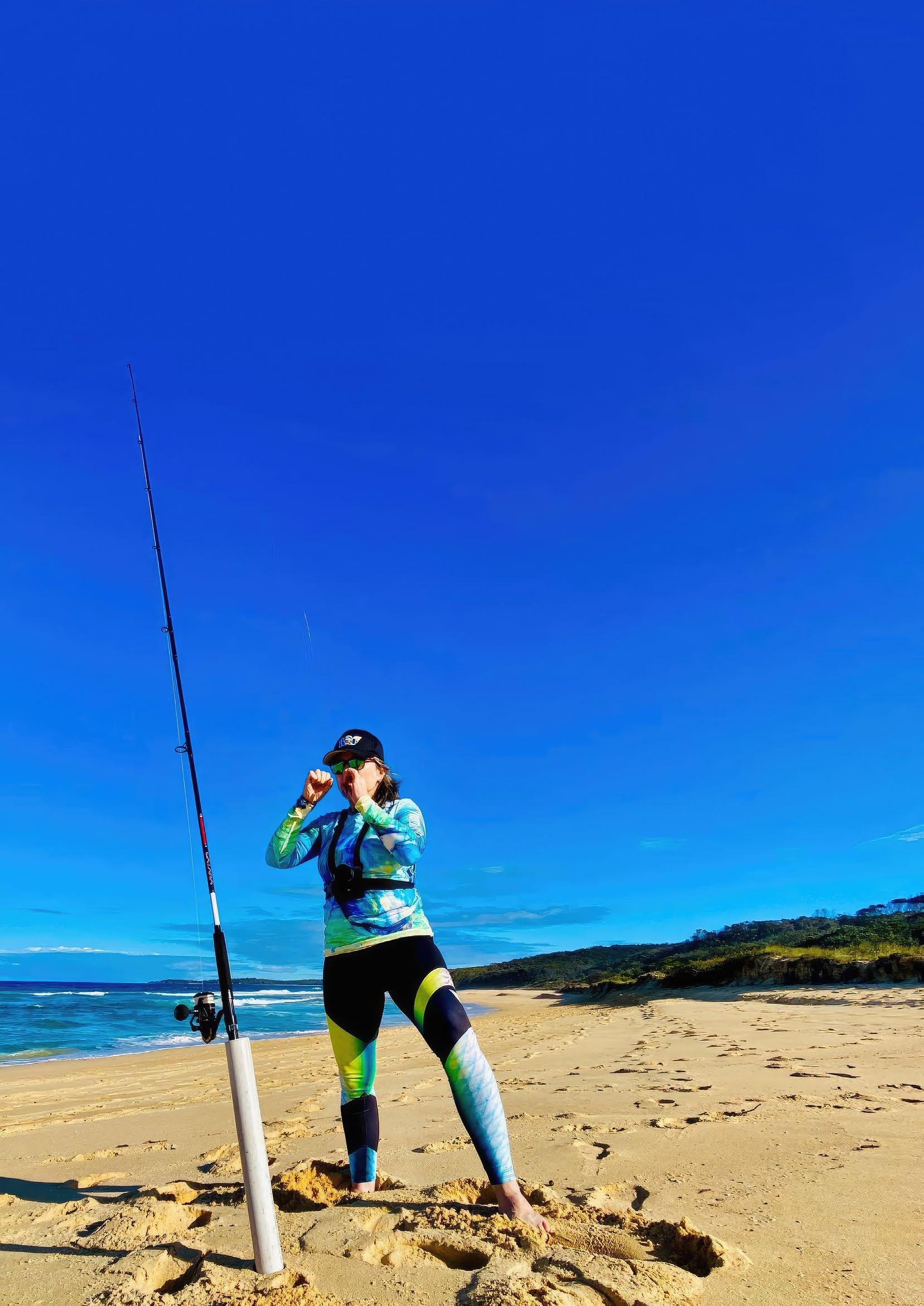
Jo Starling prepares for a food gathering session on her local beach. “Never underestimate the impact self-reliance in rec’ fishing will have on the self-confidence of a woman. Food security is a cornerstone of self-efficacy,” she says.

A picture tells a thousand words. In this case, the feminine take on a small fish goes a long way to dispelling the non-fisher belief that our sport is all about kill and pillage.
So, if you’ve found yourself wondering why we need an organisation like the Women’s Recreational Fishing League (or WRFL to its supporters), I hope you’re starting to see the bigger picture.
You’ll get to know the League in all its fabulous glory in the pages of this inspirational magazine in this and subsequent issues, thanks to a new collaboration that fosters professional development opportunities for WRFL members. Through their outlets, Spooled Magazine will be nurturing talent and passing on skills to help us amplify those sweet soprano tunes to ensure the untold stories of feminine fishing balance out the baritones of our blokes.
XFactor woMENTORnaments pair mentoring boaters with mentee nonboaters to chase a single species under tournament conditions. The experience invariably fast-tracks learning for both women in each boat.



WRFL clinics are based on the learnings gleaned across ten years of “The Barra’Prentice” initiative, which was run by Vicki Lear (pictured left with saratoga) and Jo Starling. The last “Barra’Prentice” was Amy Starling, pictured here with Vicki.
But for this issue, I’d like to provide some background on how Australia came to have a women’s sporting association for recreational fishing.
It wasn’t us who recognised that women needed help to break into the sport. We are building on the pioneering efforts of events like the SWB Barra Challenge and the Reel Women’s Fishing Competition in the Northern Territory. These initiatives evolved in Darwin in the early 2000s and quickly demonstrated the female hunger to fish. As a beneficiary and participant in these competitions in the early days, I can attest to the inspirational intention and the indomitable spirit of the girls who broke the mould. The Women’s Recreational Fishing League builds upon this Top End tradition and strives to push the tide across the entire country.
Pauline Biffin (Vic-based WRFL member) was one of the first “Barra’Yak” Live XP cohort in 2023, and landed the first barra of the trip with this handy 60-odd cm model.

Since its official launch in 2021, the WRFL has carved out a bold mission: to elevate the participation of women in recreational fishing to match that of men. There is a collection of like-minded organisations working in this space, recognising the profound benefits that our sport holds for women, and vice versa. Whilst we all pull in the same direction, we each have our own unique focus.
The WRFL is a sporting organising, with a distinct mandate to grow recreational fishing as a female sport and combining the athlete mindset with underlying benefits and inherent practical skills of fishing to empower women in all aspects of their lives. Whilst we enthusiastically welcome newcomers, our programs introduce those coming into fishing to the concept and skills of competitive fishing from the start. That is our unique point of difference. We like to say we covert “danglers” to anglers.
Our National VP, Karen Van Bael, articulates the power of this as one of our hallmark successes as she grew from a novice to a highly competitive angler in two short years under the guidance of the WRFL. Karen’s journey is a testament to the WRFL’s ethos of empowering women through skill development, mentorship, and community support.
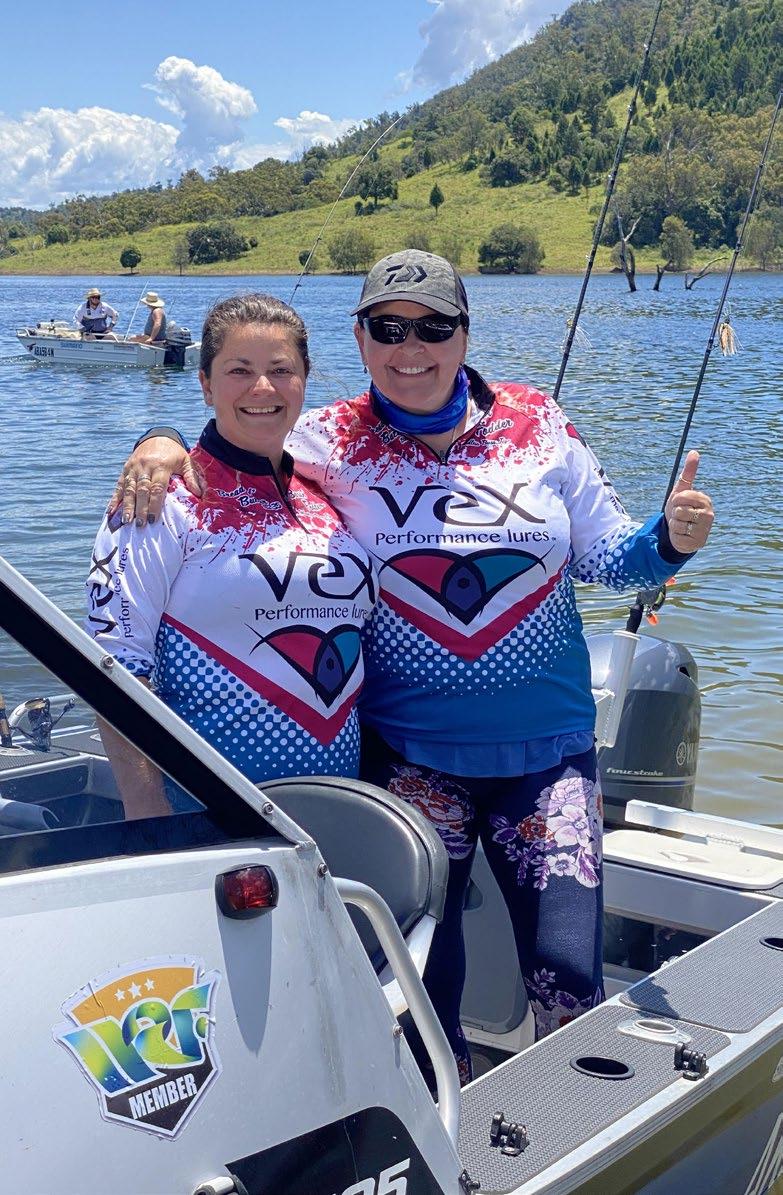
Kendl Cramer (National Secretary) was one of Karen Van Bael’s mentors during the pilot XFactor, BassX in November 2022. Karen was so inspired that she committed to becoming a mentor at the next, which meant she had to get a boat license.
The most inspiring detail in KVB’s story is her pathological phobia of touching fish! When Karen joined the League, she had started fishing with her new husband and was enjoying it, but could not hold a fish without developing uncontrollable tremors and a sense of dread. Through the League’s online network and supportive community, she’s now worked through her fears to now being able to unhook her fish, hold them up for her trophy shots, and even mentor others to do the same.
As true testimony to her independence, she’s also attained her boat licence and skippers for other women in tournaments, including as a mentor in our signature XFactor Series!

XFactor woMENTORnaments, our flagship initiative, combine intensive hands-on clinics for beginners to intermediate anglers with competitive tournaments... but we have many more programs that effectively nurture the angling aspirations of women at all skill levels. These include monthly virtual get-togethers connecting women from all over the country and featuring inspirational guest speakers, prizes, and quiz rounds; Live XP adventures, online leadership development, and a soon-to-be-public online fishing course. We truly have every angler in every hidden part of the country catered for, regardless of where they are on their learning journey, or where they want that journey to take them.
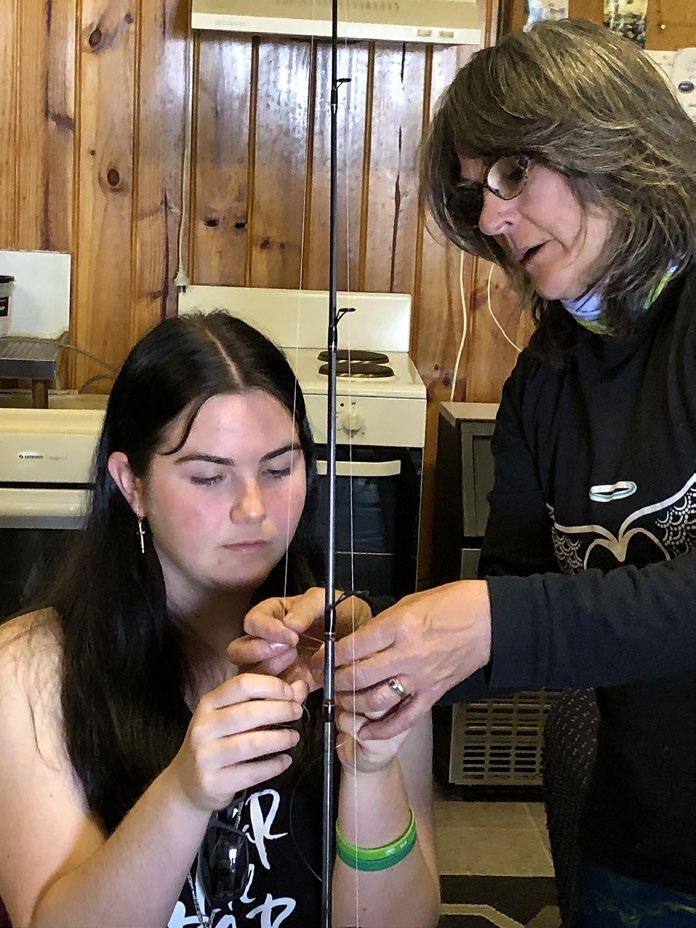
AB (seated) focuses during personalised instruction on tying the FG knot from Jo Starling, instructor at the BassX mentee clinic, 2022.
Tackle literacy is a thing! One of the most common barriers for women that comes up in WRFL surveys is confusion around tackle. Empowering them to manage their own gear is a solid step in the right direction.
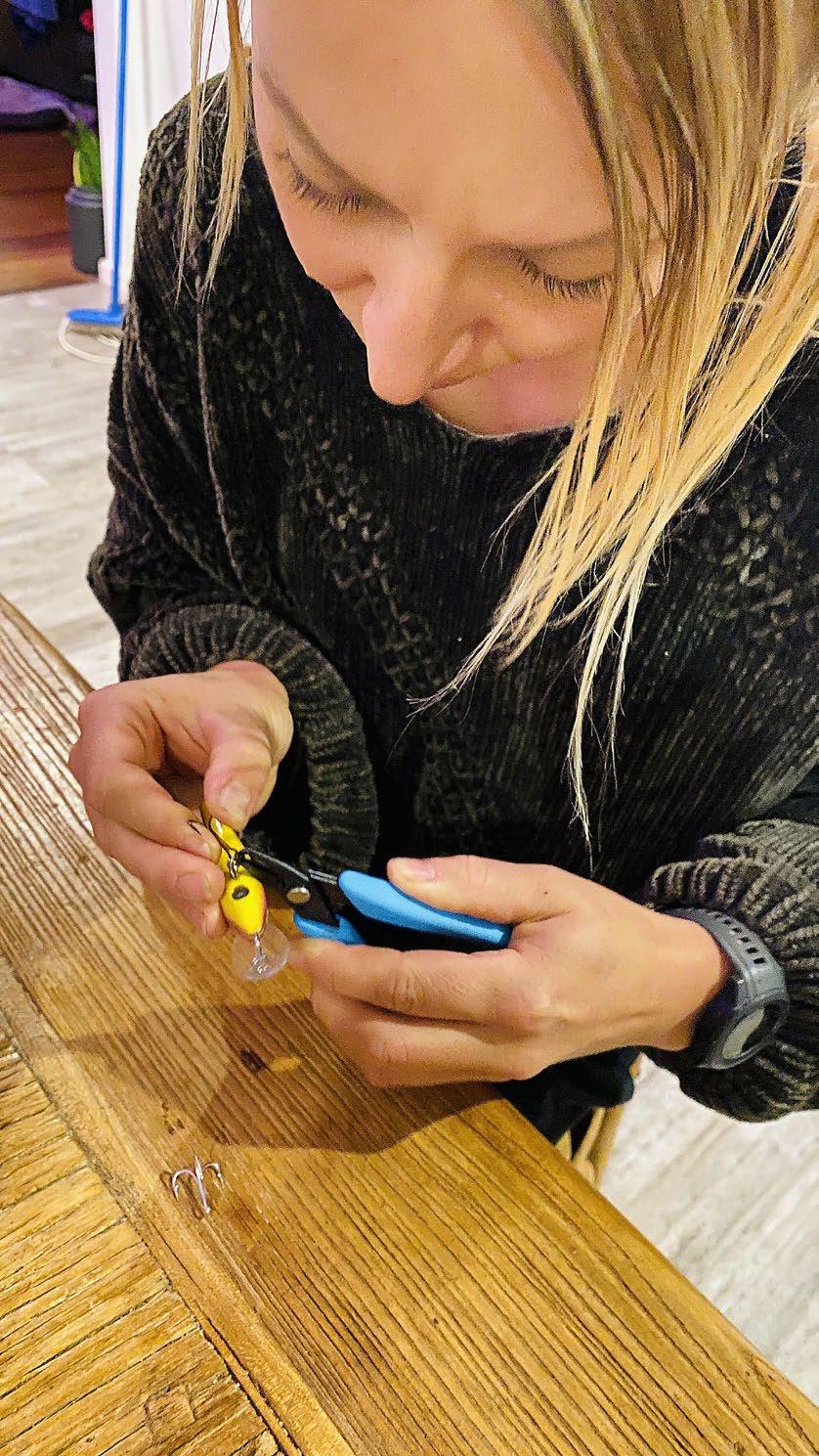
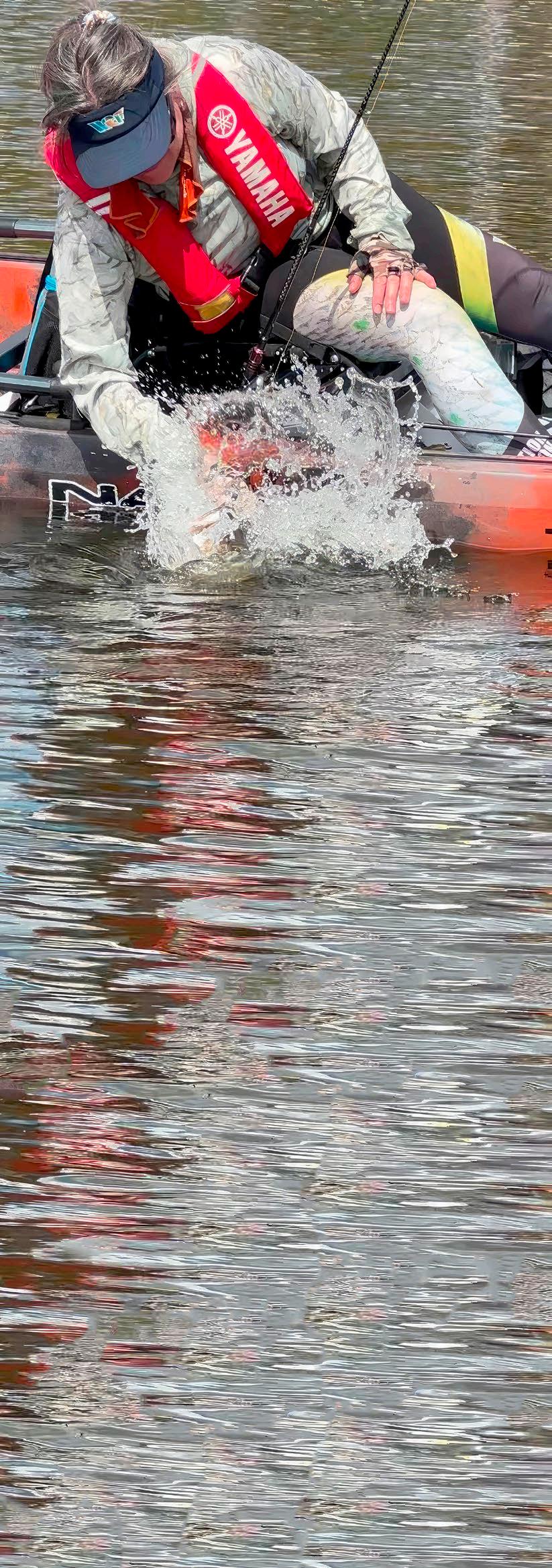
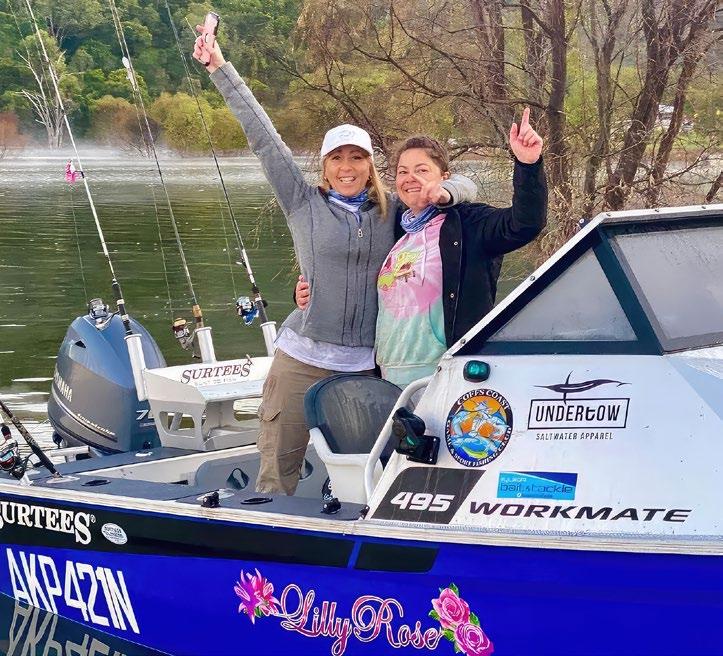
Mentor and Mentee: Kendl Cramer (R) and Bridgett Currey (L) await their boats turn to steam in the 2022 BassX.

Vere Michels of Tassie caught this silver trevally on a trip with Jo Starling, after chatting in one of the state groups on Facebook. Amy Starling (NSW) gets a celebratory high five from Vicki Lear after netting her first tournament-caught fish in the 2019 SWB Barra Challenge.
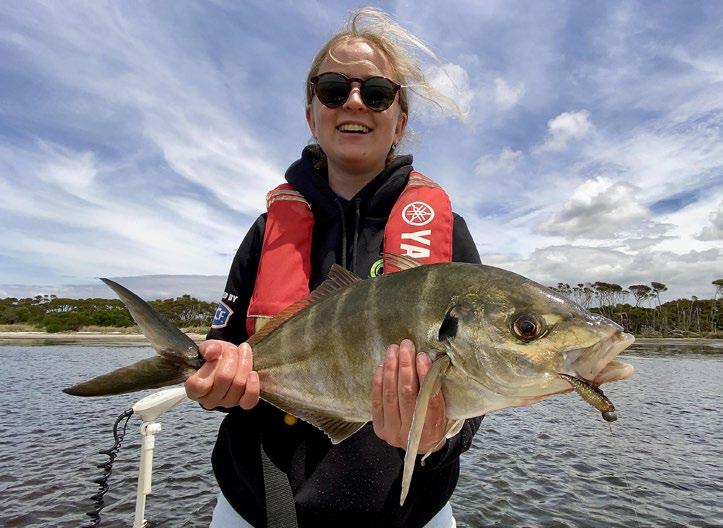
AB shows her first fish from BassX. It didn’t score, but it was her first carp.

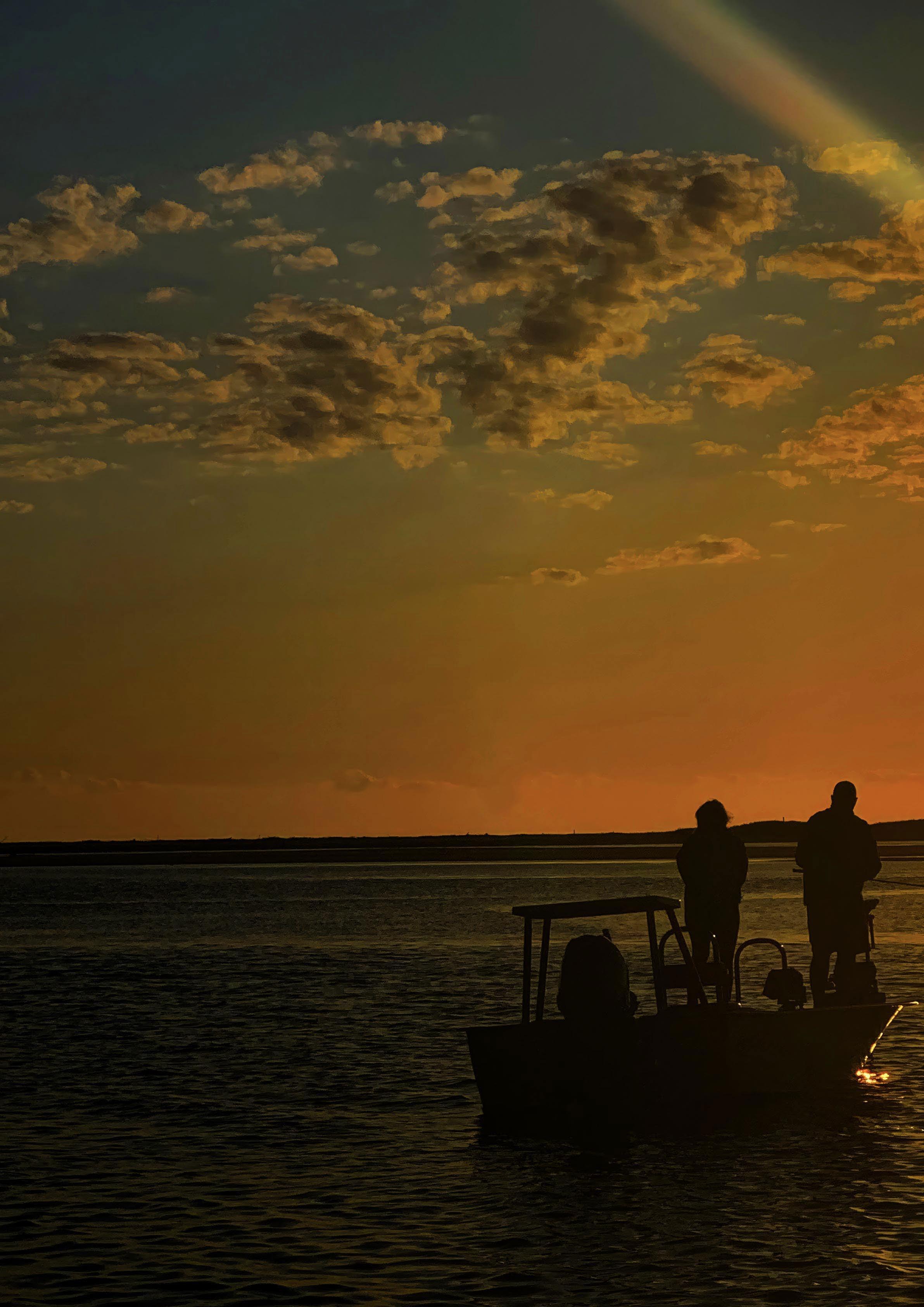
Looking ahead, the WRFL sees a future where the irrelevance of gender in recreational fishing becomes overtly apparent through images of tournament competitors being male and female, toe to toe, in equal numbers. The League aims to achieve gender neutrality in the sport by 2050, a goal that reflects broader societal shifts towards equality and diversity.
As we cast our lines toward a future where our beloved pastime is shared equally by all, we recognise that the need for allies and advocates is more crucial than ever. The WRFL welcomes everyone to join us in championing inclusiveness, sustainability, and stewardship within the sport. We call upon our readers, irrespective of gender, to engage with and encourage the development of women in fishing. Your support is not just about creating fairness in participation; it’s about fostering a sport that is recognised for its contribution to conservation, community, and family.
In what is surely the shimmering dawn of a new era for Australian fishing, I’m driven by the concept of reflections in our waterways mirroring the diversity and vibrancy of Australia itself. With each issue of this magazine, we’ll bring you the stories, challenges, and victories of the WRFL members—women who are not only growing beyond their comfort zones and changing the face of fishing but are also securing its future. These women are the narrative shifters who are redefining what it means to be a fisher in Australia.
In the past, we’ve seen how narrow perspectives can threaten the fabric of our sport. I implore you to weave a new story with us, one where the feminine touch is not just welcomed but celebrated for the depth and balance it brings to recreational fishing. By recognising and elevating the contributions of women in our sport, we can shore up its future. Encourage them, support them, and most importantly, join us in this journey to ensure the legacy of our pastime is as enduring as a siren call that never stops calling us to fish.
In future issues, keep an eye out for the contributions from WRFL members, as we shine a light on the unsung narratives of women in fishing. Their voices are not just an add-on—they are essential chapters in our Australian fishing story. It’s a story we’re all writing together, with every cast, every catch, and every shared sunrise on the water.
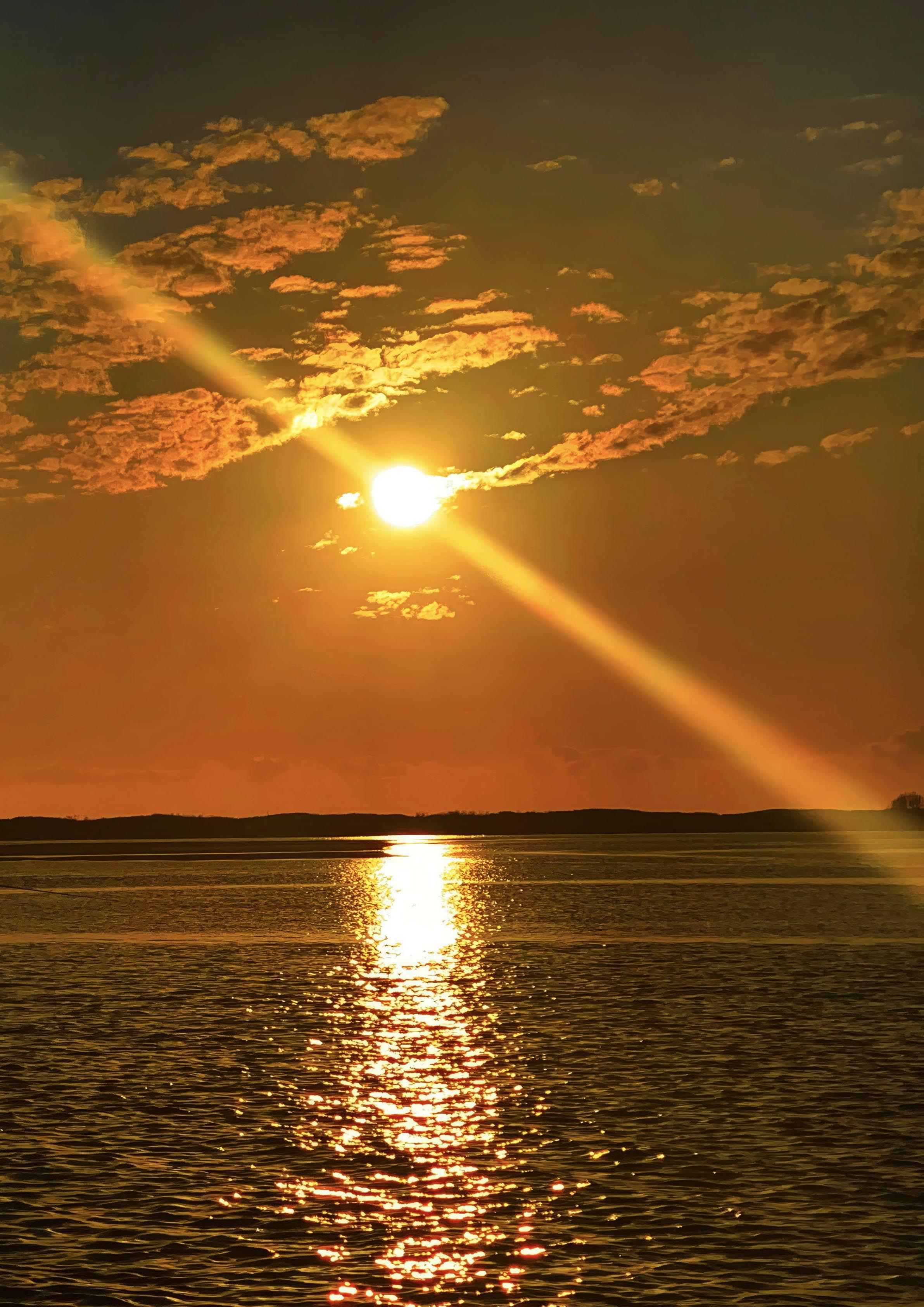
That 78cm barramundi we celebrated earlier, proudly held up by its captor, Amy Starling. The sense of achievement never dulls.


Welcome to the Women’s Recreational Fishing League!
As we conclude our inaugural feature in this innovative magazine, we invite you to join us in celebrating the vibrant community of female anglers in Australia. The Women’s Recreational Fishing League (WRFL) is more than just a sporting organisation; it’s a movement that celebrates the passion, skill, and camaraderie of our fishing sportswomen and the role they play in inspiring and empowering all women to reach beyond their comfort zones and enjoy life to its fullest.
Our league offers a platform for people of all backgrounds and experience levels to come together, connect, and share their love for recreational fishing, with a particular emphasis on those of us who identify as female. This focus isn’t based upon an ethos of gender bias, but rather a recognition that women are behind the eight ball in fishing participation, as a legacy of society gender bias in the past. Some of that bias lingers in the expectations of women and girls who would enjoy fishing if they weren’t concerned about their knowledge gap, and of being vilified. We are here to break down those anxieties… and we invite you to join us in our endeavour. Whether you’re a seasoned angler or just dipping your toes into the water, there’s a place for you in our community.
Our journey is just beginning, and we need your support to continue growing and thriving. Here’s how you can get involved and show your support for the Women’s Recreational Fishing League:
1. Become a Member: Join our league and gain access to exclusive events, resources, and opportunities to connect with a sorority of female anglers.
2. Donate: Help us continue our mission by making a contribution to support our programs and initiatives.
3. Spread the Word: Share our story with your friends, family, and fellow fishing enthusiasts and help us reach every angler, and even more women who share our passion.
4. Volunteer: Get involved in organising events, leading workshops, or providing mentorship to other anglers. We have leadership teams across the country ready to welcome your expertise.
Together, we can make a difference and empower women to pursue the lifelong benefits of fishing, with competitive passion. Join us in shaping the future of recreational fishing to be demonstrably egalitarian, as it inherently is!
Fish on!
Jo Starling President Women’s Recreational Fishing League

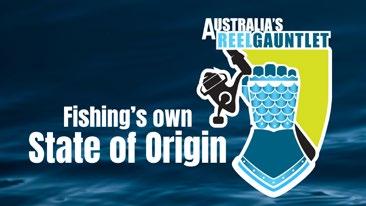




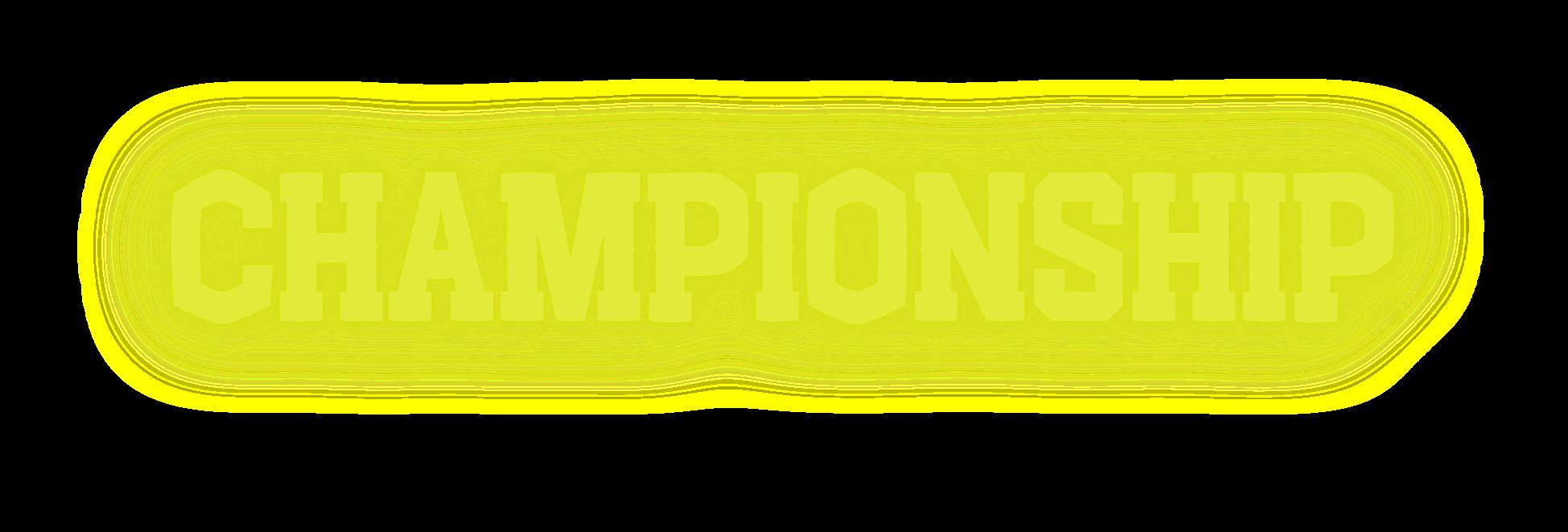
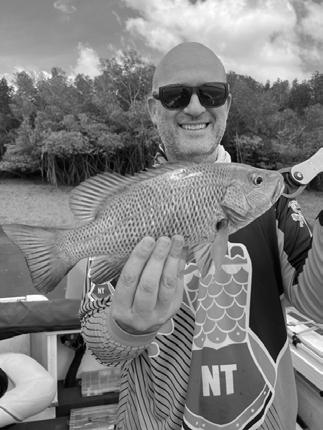



For the first time on Australian waterways, rivalry is pumping as states go head-tohead in a year-long comp where every cast counts and every catch matters Join the excitement as mates become competitors, and the battle for supremacy unfolds.
Fish for your state, or simply support them. Just don’t miss out on the fun. select your state to see how they’re tracking

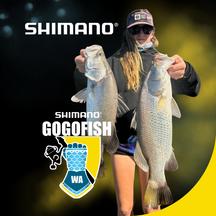
Australia’s Reel Gauntlet is the ultimate fusion of State of Origin intensity and the drama of the AFL season, but with a unique twist — it’s fishing!
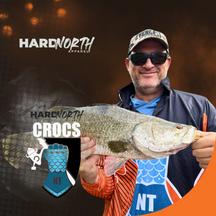
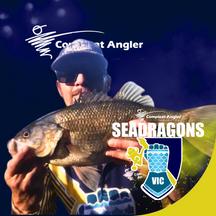

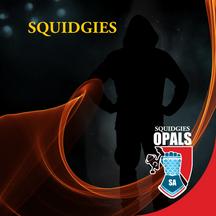



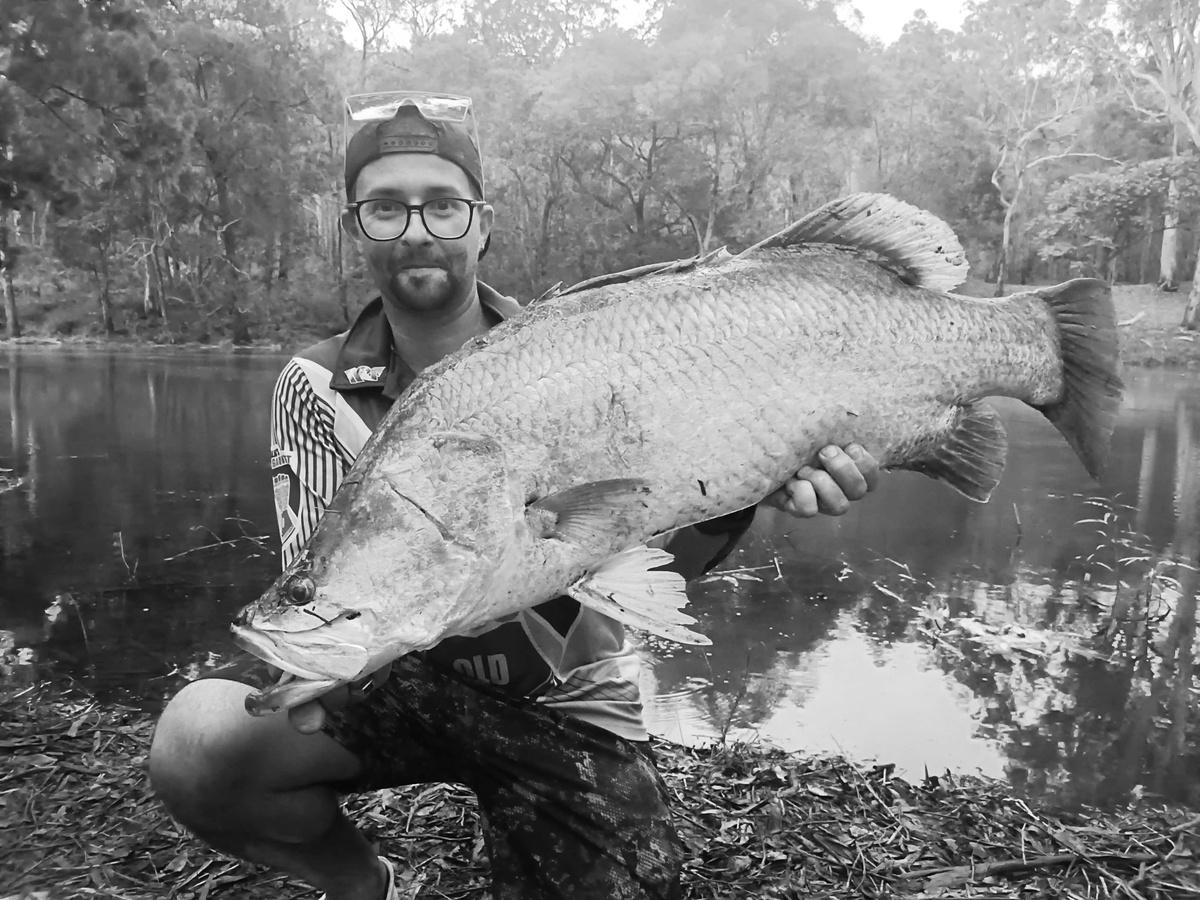




In March just gone, I had what you’d call “a day”. I woke up at 5am to drive from Coffs Harbour to Wooli, excited for the chance to complete my very first beach launch. We were heading out to find some mackerel before NSW season close. The launch went smoothly and so we motored out to find some bait. It didn’t take long to locate some Watsons leaping bonito and slimeys.
The bonito went straight on the line to troll for mackerel and before too long, there was a run — mackerel tuna were attacking our baits. Ahhh, that sweet song from a reel with the ratchet on! The strikes and fights came thick and fast.
Then my reel sang to a different tune. A stronger run, with some percussion thrown in by spectacular head shakes. We turned the bow and chased it down with the boat, eventually bringing aboard my new PB Spanish mackerel at 137cm, proving I wasn’t hooked up to a torpedo!
I rounded out the day with a longtail tuna, another Spaniards and more mack tuna than I bothered counting — some even came home with us for dinner. It was an epic day that will stay with me forever. That Spanish reel song gives you tingles under your skin that keeps you wanting more… I’m looking forward to my next dance!
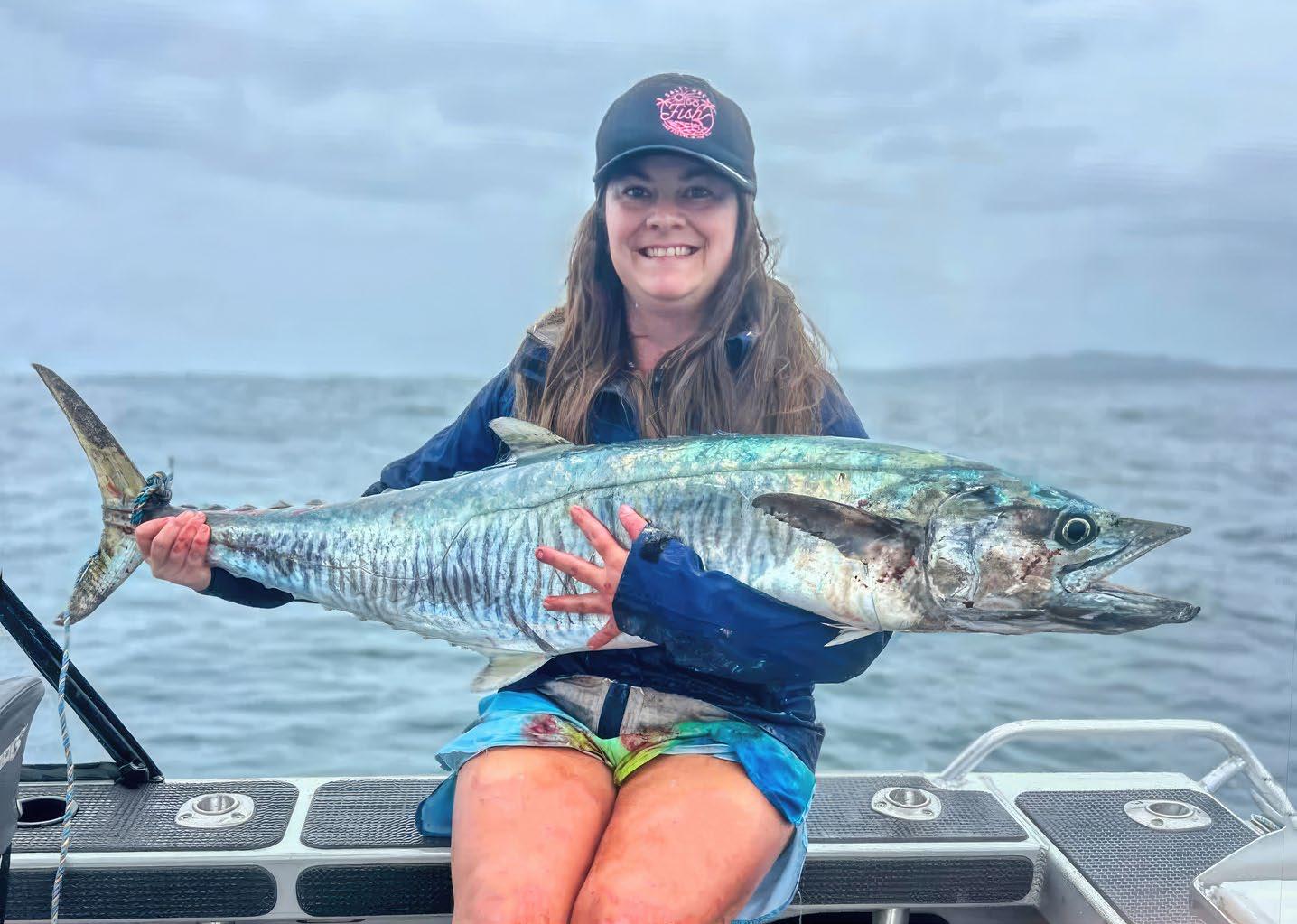
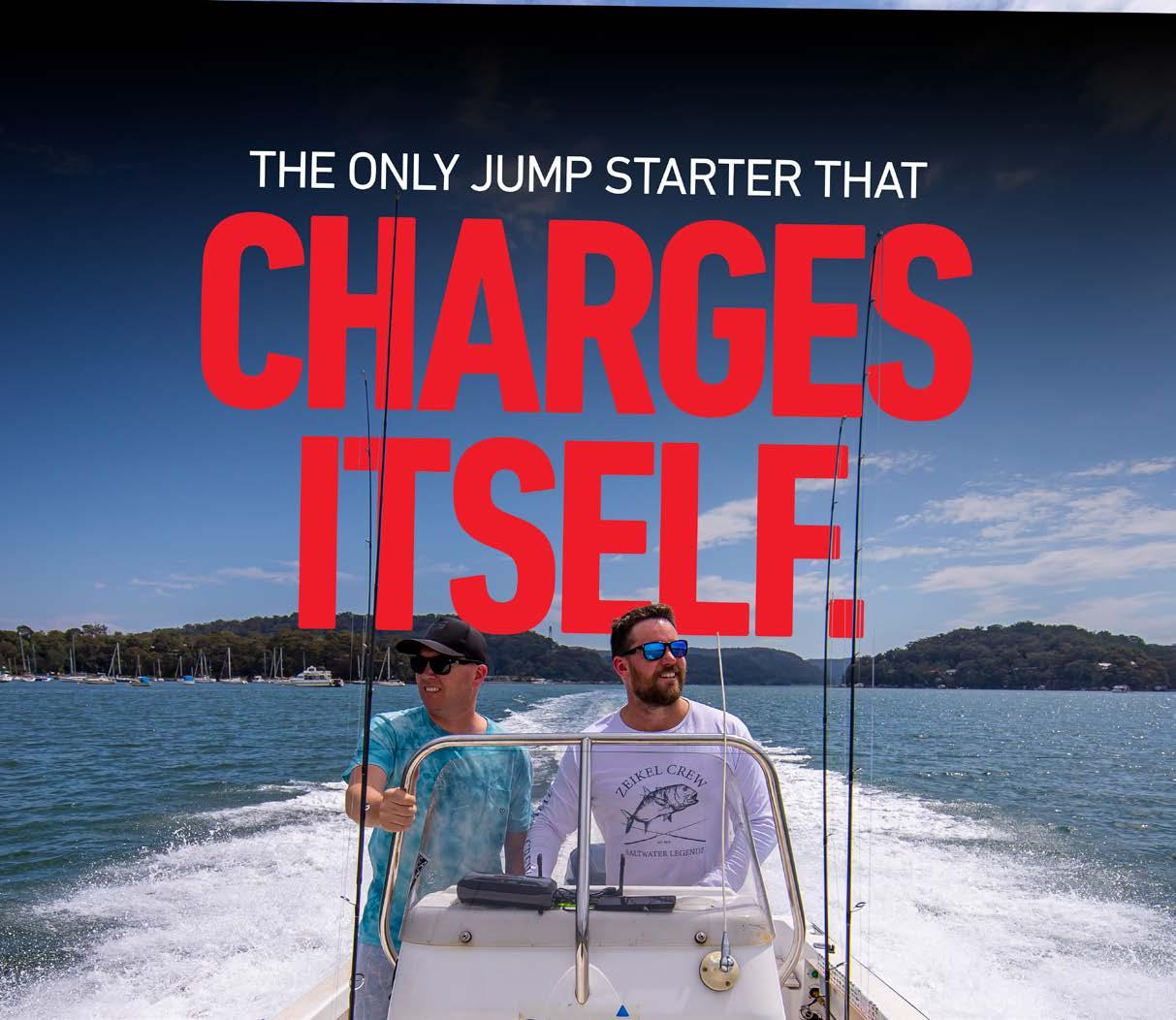
Featuring Projecta’s patented Rapid Recharge Technology, Intelli-Start Lithium Jump Starters recharge themselves in 40 seconds once a vehicle is started, eliminating the need for regular docking or mains charging.
They’re compact, lightweight, ultra-safe, and provide up to 4 times the lifecycle of Lithium Cobalt alternatives, making them perfect for weekend getaways or adventures around Oz.
• Starts 12V 7.0L petrol or 5.0L diesel vehicles (IS1400)
• 500A clamp power & 1400 peak amps (IS1400)
• Includes powerbank function and worklight
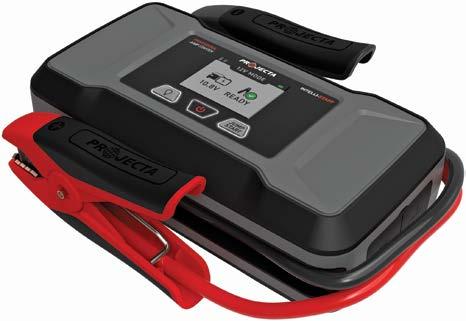


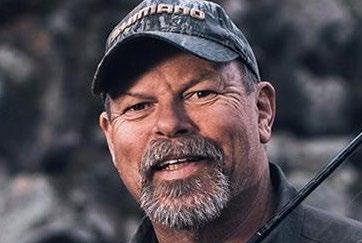
More Aussie anglers wet a line each year in our tidal estuaries than in any other environment. However, as in all forms of recreational fishing, a small percentage of these hopefuls account for the lion’s share of the fish landed. The figures most often quoted claim that 10 percent of anglers catch 90 percent of the fish.
In reality, the statistics may be even more skewed than that. However, graduating into the ranks of the successful elite isn’t as hard as many people seem to think. It mostly involves better understanding the waterways where we fish, and the critters living in them… After all, knowledge is power!
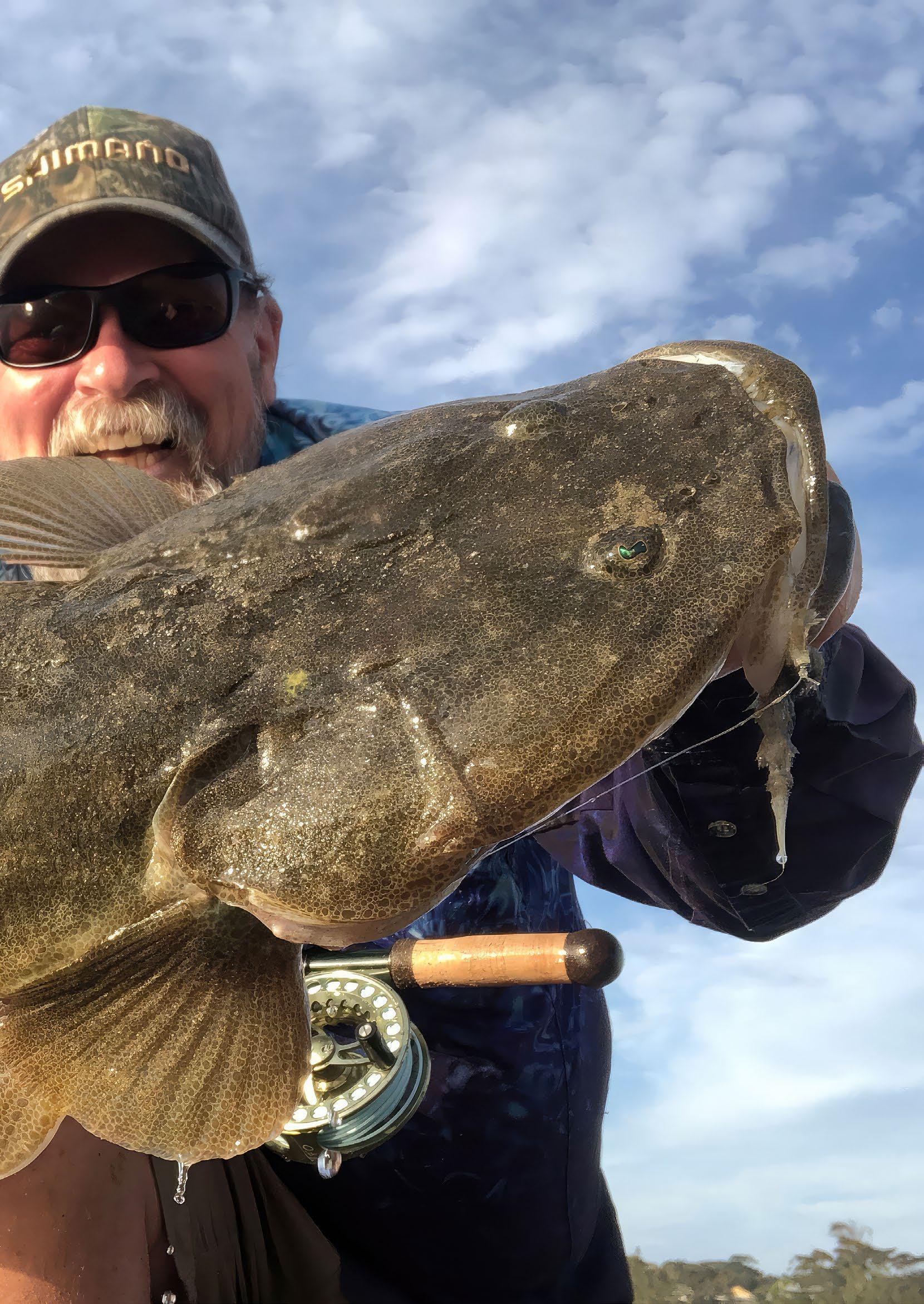
Starlo with a 90cm dusky flathead taken on fly. This fish — which was tagged and released — was located by identifying an optimal combination of water movement and the presence of baitfish in about 80cm of water on a tidal flat.
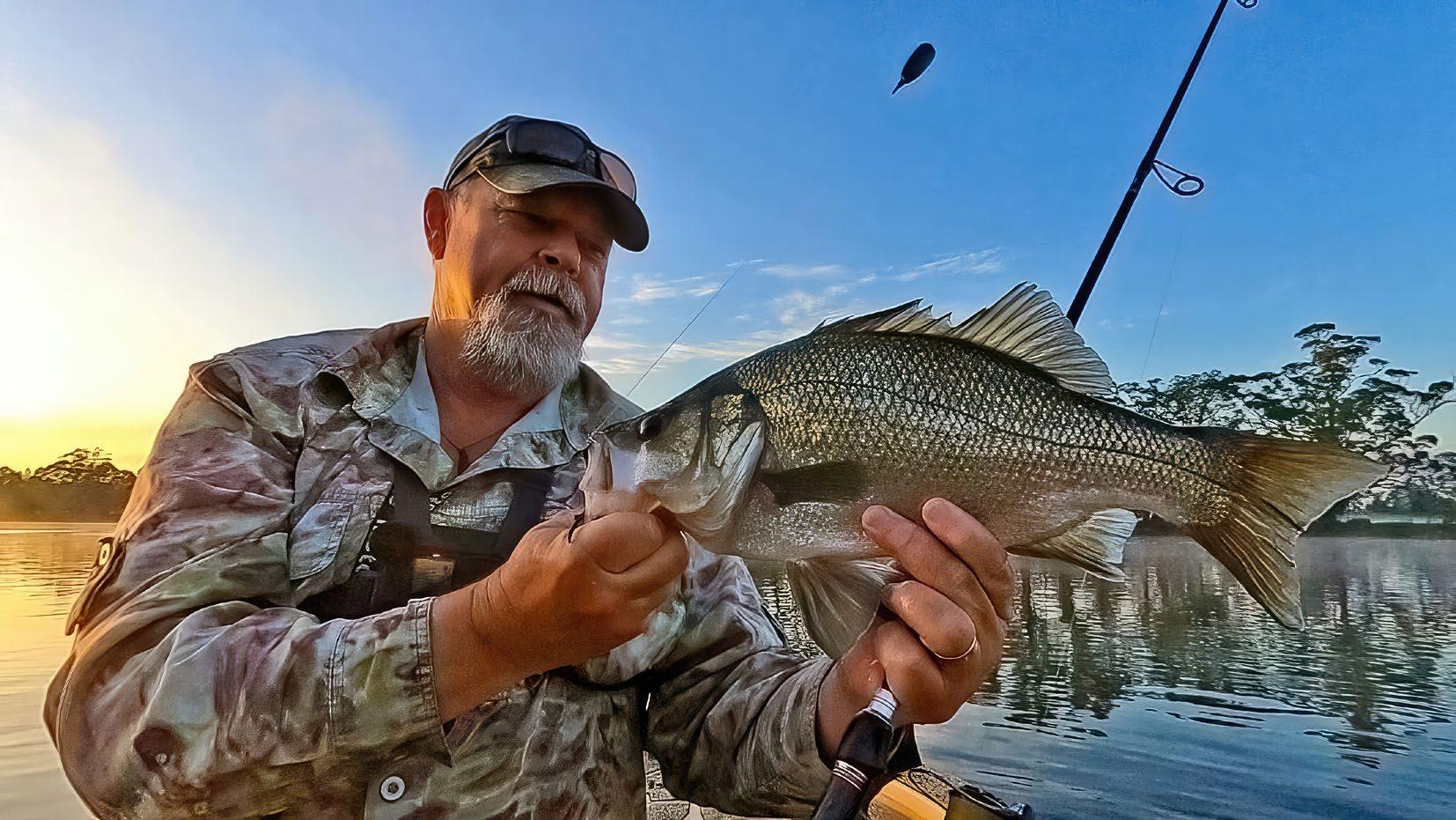
Estuary perch tend to concentrate in very specific locations at different times of year.
Estuary fishing can be as intense or as laid back as you choose to make it. Many weekend danglers are happy enough to chuck out a baited line, prop their rod up on a forked stick and loll back in a folding camp chair waiting for a bite, while staying well hydrated with their beverage of choice. Others take it to the limit and constantly push the envelope: running high-powered, American-style bass or flats boats bristling with state-of-the-art electronics and crammed with all the latest and greatest fishing gear. The rest of us mostly fall somewhere in between. But whether you’re a chuck-and-chance dangler or a tournament-driven pro’ angler, being able to better read and understand the water is critical to regular success.
It’s all about working out where the greatest concentrations of actively feeding fish are most likely to be found. Fortunately, this boils down to understanding just a handful of fundamental keys… four, to be precise.

Jo Starling works over a prime snag in tidal water that holds bream, estuary perch, tailor and flathead… Structure is the key!
Those four keys to finding fish in estuaries are exactly the same as they are in most angling scenarios. They are: water movement, water quality, structure and the presence of food. Find optimal combinations of those four elements and you’ll almost certainly catch more fish. So, let’s look at each of these four elements individually:
Water movement: In estuaries, water movement (both vertical and lateral) is mostly generated by the tides. Understanding the dynamics of tides is critical to cracking the codes of these systems.
Lateral water movement or current orients fish (they nearly always face into the flow), brings them food, and helps them to move about. Vertical water movement (the rise and fall of the tides) dictates access to feeding grounds, concentrates fish traffic and creates “choke points” or hot spots in that traffic flow.

A bit of elevation can be handy when it comes to identifying estuary hot spots. Those outside weed bed edges are prime piscatorial real estate!
Too little or too much movement can potentially be a bad thing. There’s merit in the old saying “no run, no fun”. But too much current can also have a negative impact on fishing results. If the water’s running really hard, seek out current breaks, especially those provided by structural elements (we’ll look at those in a minute).
Water quality: The nature of the water itself is another vital factor in the location and feeding activity of fish. By water quality, I’m referring to clarity, salinity and temperature, as well as to less obvious things like dissolved oxygen and pH levels. All fish species have preferred combinations of these factors.
Once you learn to identify the prime mix of clarity, salinity and temperature favoured by the fish you’re chasing, you’ll start to automatically recognise the best bits of water for finding them, and your catches will improve. This might mean heading upstream to seek out slightly discoloured run-off in a very clear system when chasing bream or luderick. Or it could involve heading down towards the entrance looking for cleaner, saltier water to chase flatties after a bit of rain. Cracking
Top
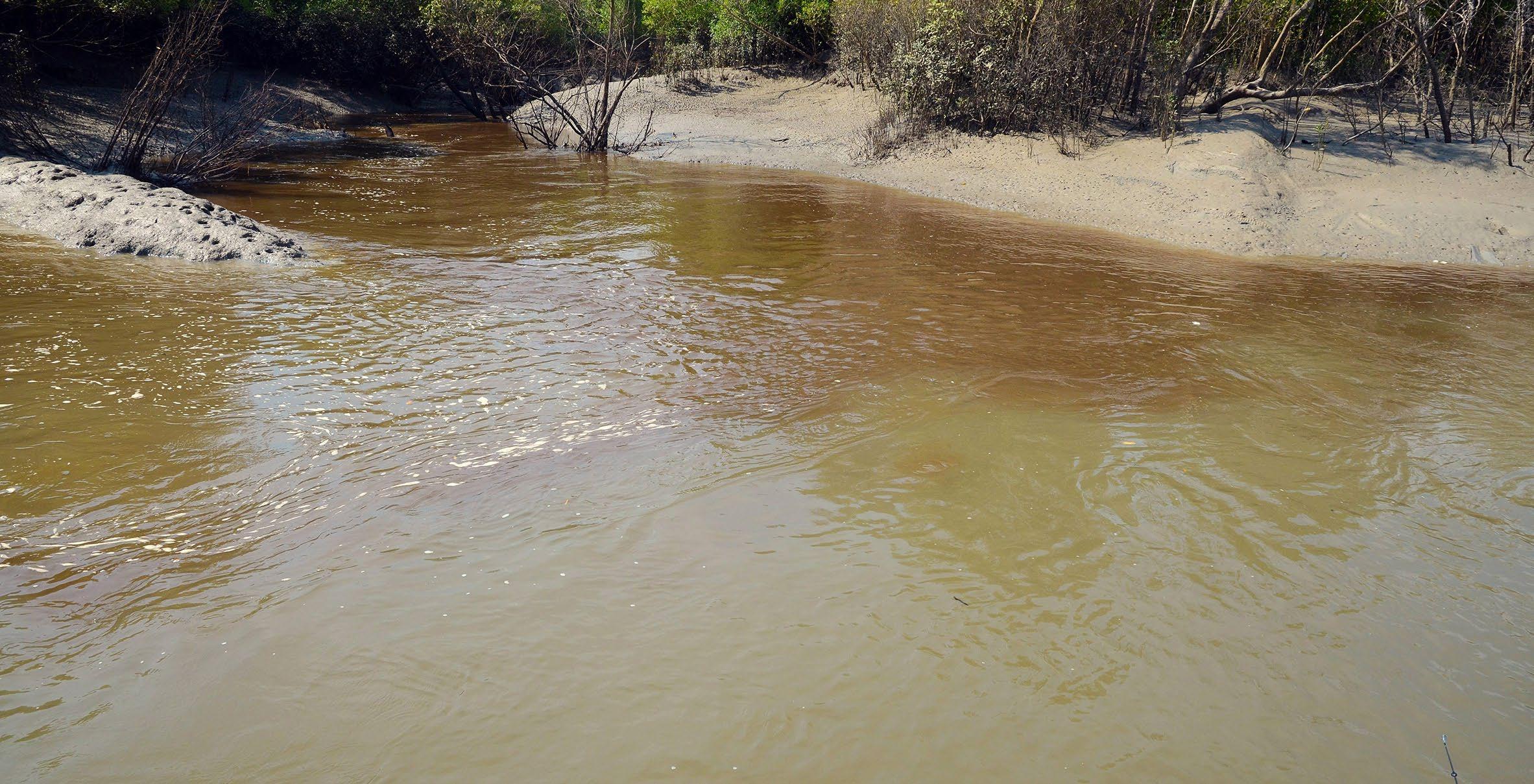
Seasonality plays a part, as well. Black bream will seek out lower salinities (upstream) when preparing to spawn from late winter through spring, while whiting become more active on shallow flats as the water warms in summer.

Closely watch the temperature readout on your sounder, or carry a hand-held thermometer if you’re land-based. You’ll soon learn some important lessons. For example, in winter and spring, ocean waters tend to be warmer than those in the upper estuary, so estuarine temperatures will rise on an incoming tide. The opposite typically applies in summer and autumn. Identify these patterns. A degree or two can make a world of difference to your results.
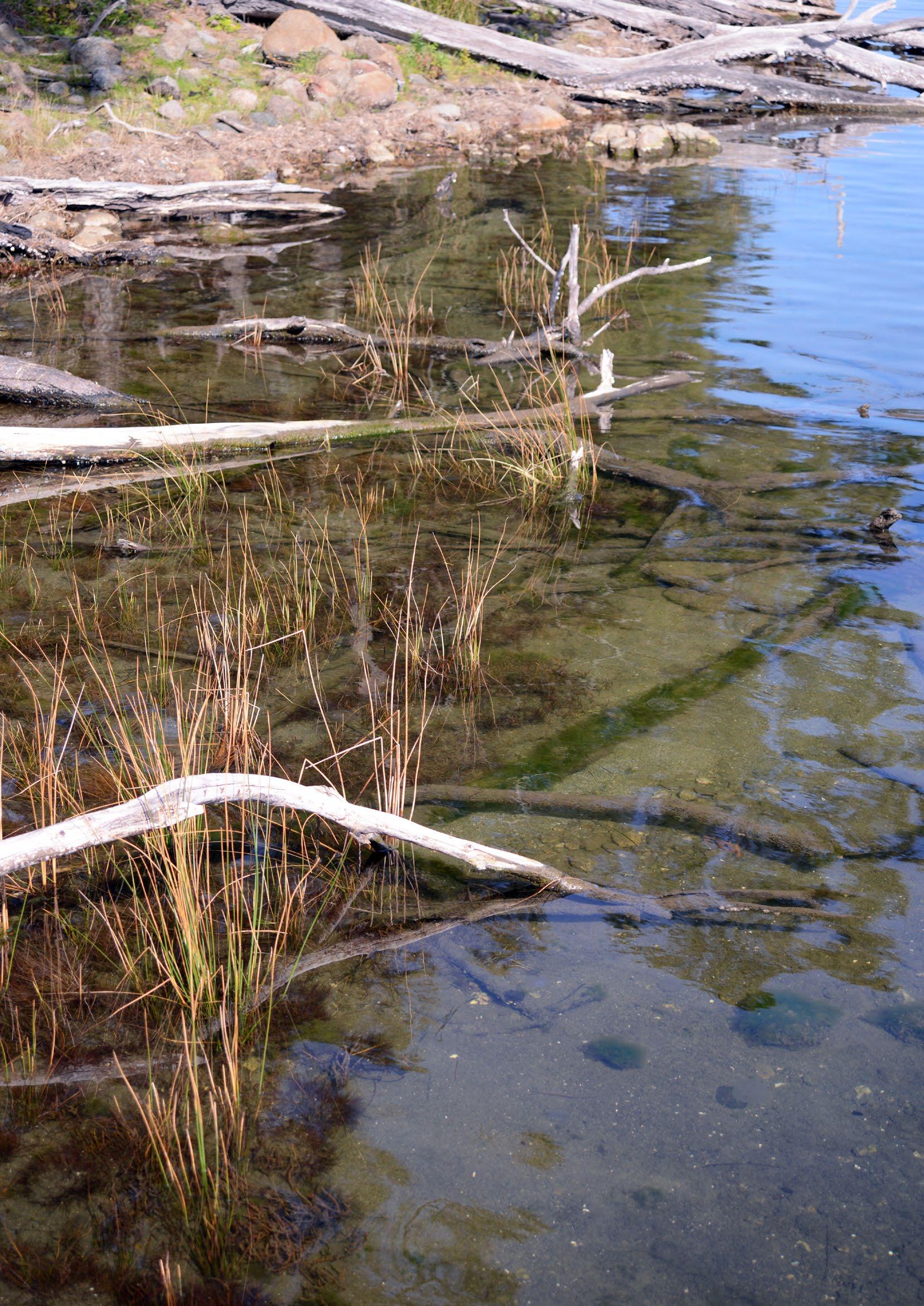
Structure: We hear a lot about structure and its importance to fishing. Most keen anglers understand the concept well enough these days, although we never stop learning the more subtle nuances of structure, and how it influences fish behaviour.
Major natural structural elements likely to be encountered in most temperate estuaries include the bed of the estuary itself (and especially any drop-offs, channels or holes), as well as rocks, snags, weed beds, mangroves and also geographic features such as points and bays. We can add all sorts of man-made structures to this list, such as bridge supports and jetty pylons, break walls, navigation markers, oyster leases, moored boats and so on. All these can and will hold fish at different times.
The biggest tip I can offer on this subject is the simple observation that not all structure is created equal. In a featureless area, even a relatively small object can be a fish-attracting magnet, while in a structure-rich environment, you really need to look for the very best standout elements.
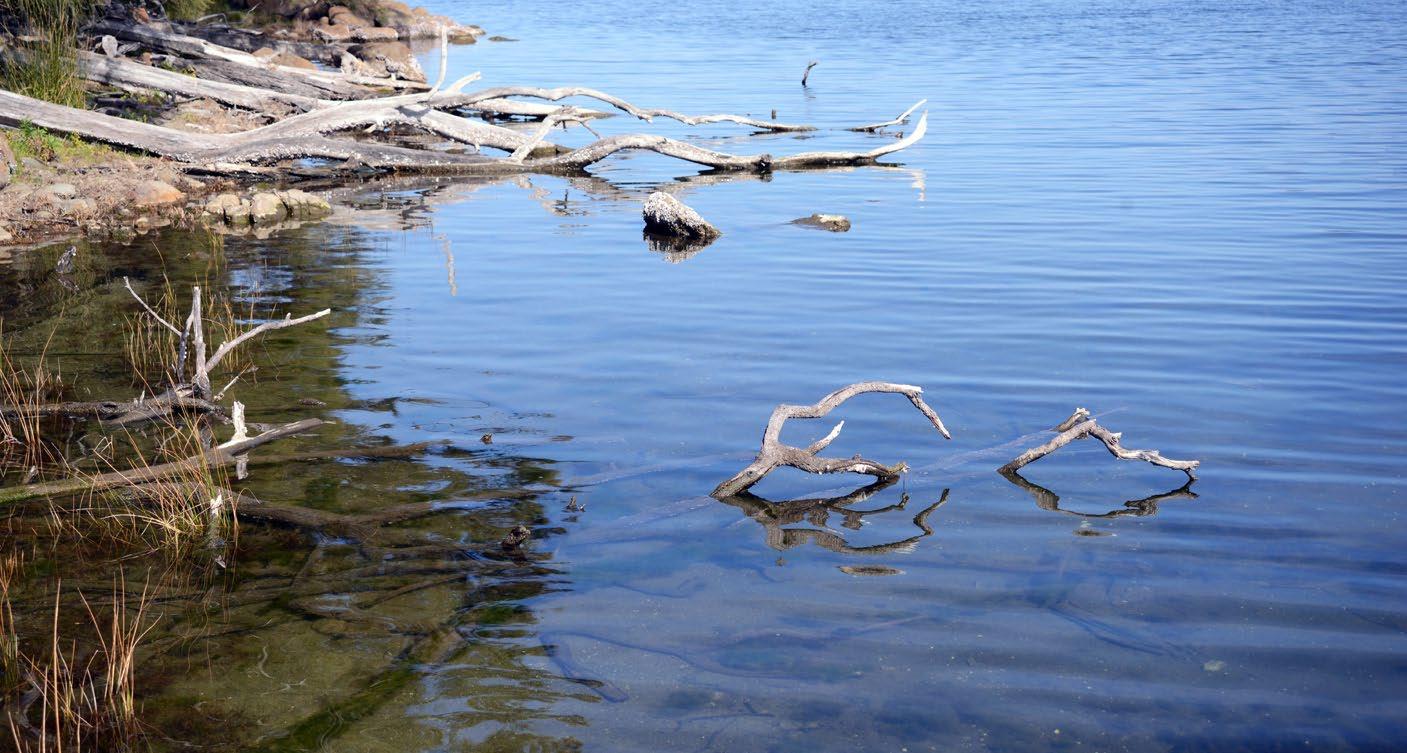
Structure takes so many forms. A single stick can sometimes hold fish.
spooledmagazine .com.au
Cracking The Code
Finally, structure always works best at attracting and holding fish when it’s combined with the other three key elements under discussion here, and especially with the final one: food!
Bream are opportunistic foragers and love shellfish!
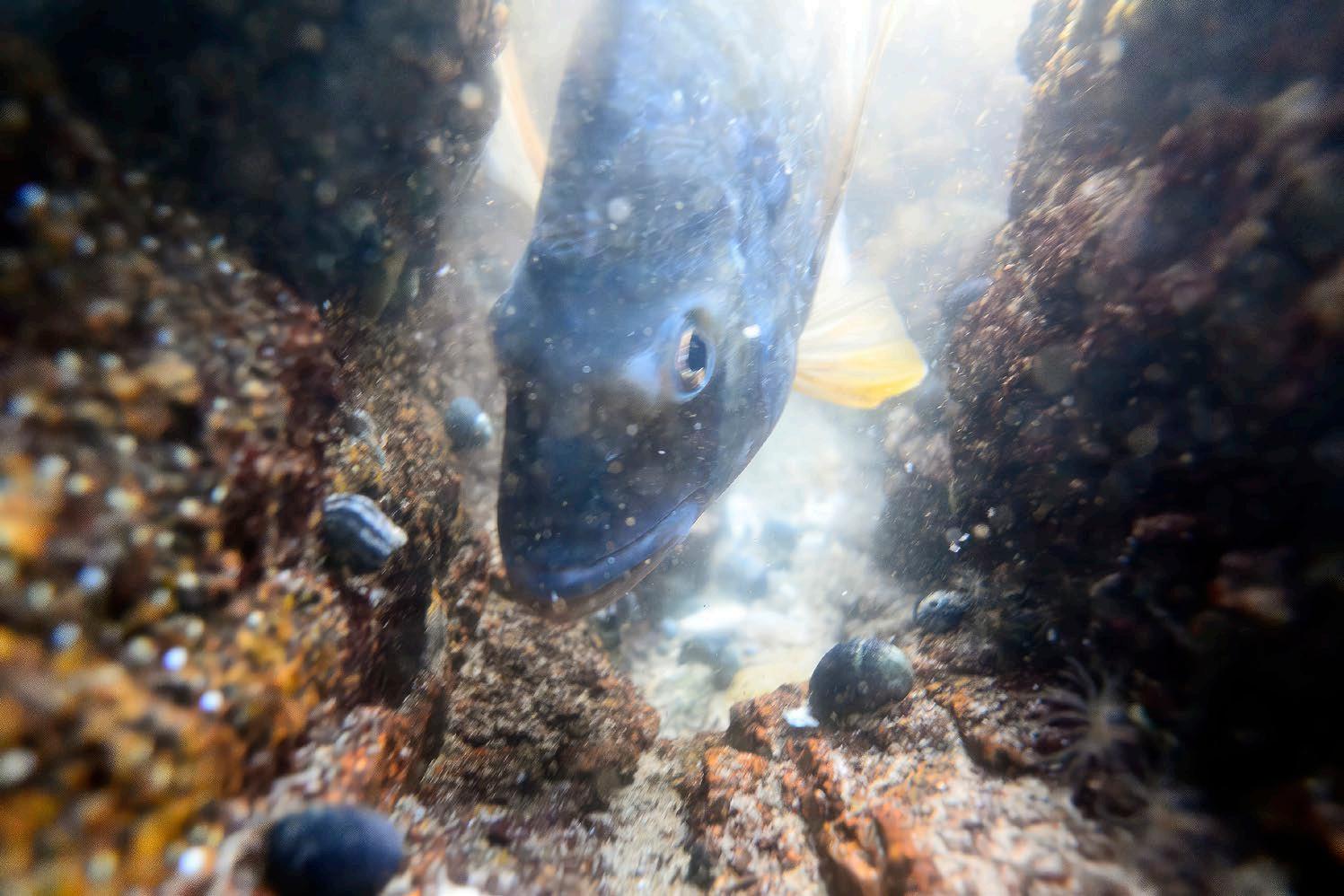
Food: “Find the bait and you’ll find the fish” is one of angling’s eternal rules. It applies when you’re chasing trout in a mountain stream, or tuna and marlin out beyond the edge of the continental shelf, as well as everywhere in between.
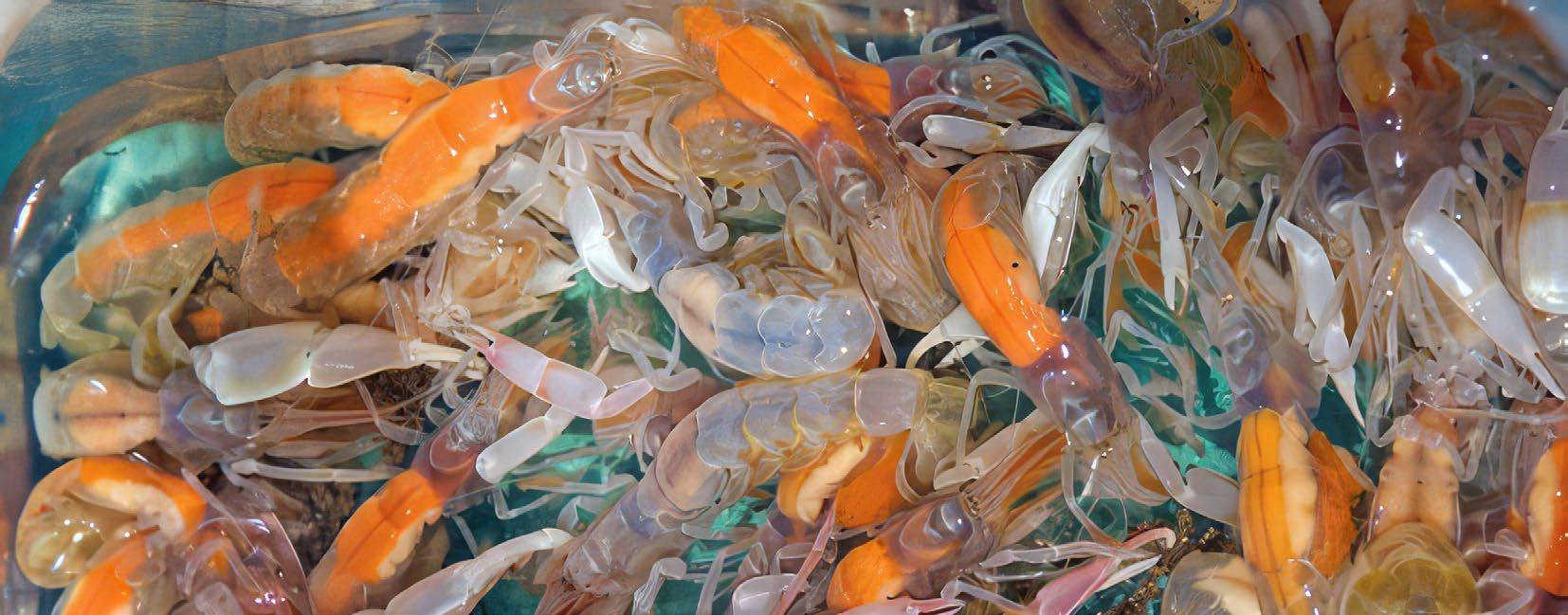
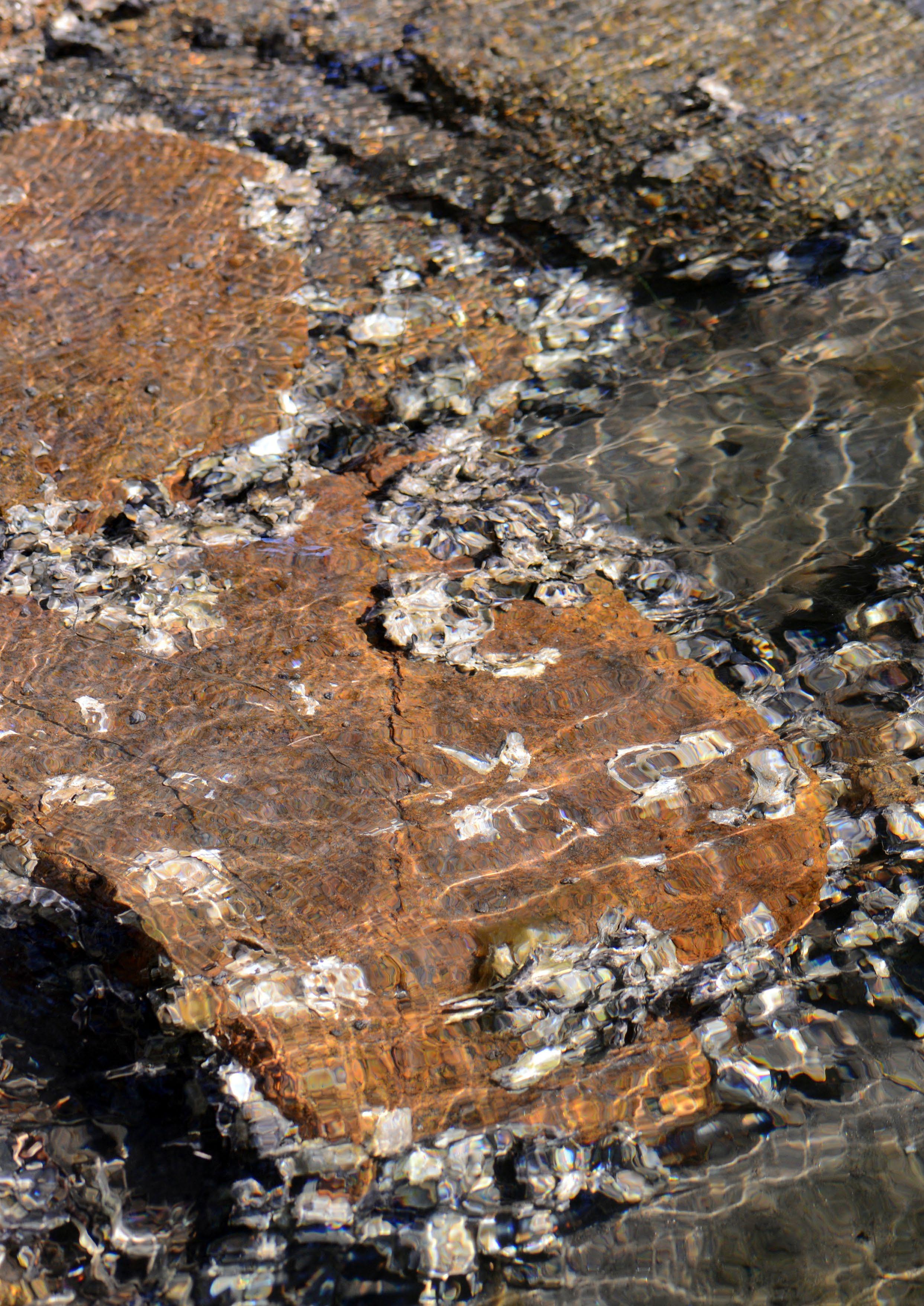
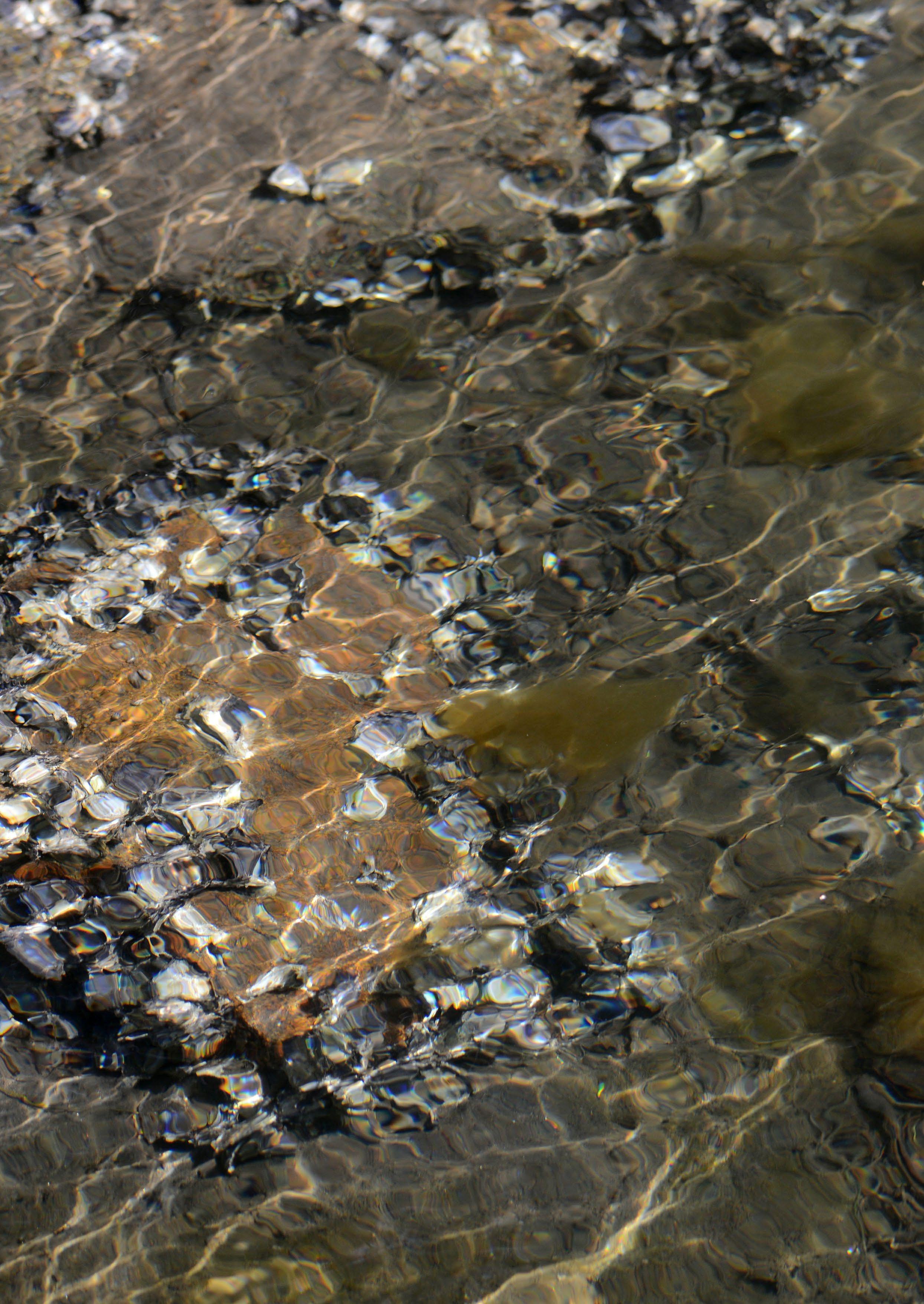
Never forget that three core drivers motivate fish behaviour: eat, don’t get eaten and reproduce. Of these three, finding that next meal is perhaps the most dominant urge of all, and certainly the critical one to those of us who hunt fish with baits, lures or flies.
Getting the best from the four fish-finding keys I’ve just described is about identifying optimum combinations of all four factors, and the food thing is right up there at the top of the list, in my book. Show me two different but equally attractive structural elements with just the right combination of water movement and water quality and I’ll always opt for the one with the flicking, shimmering school of baitfish crowded around it!

As the rising tide floods over shellfish beds, foragers will follow. Marine vegetation is incredibly important fish habitat.
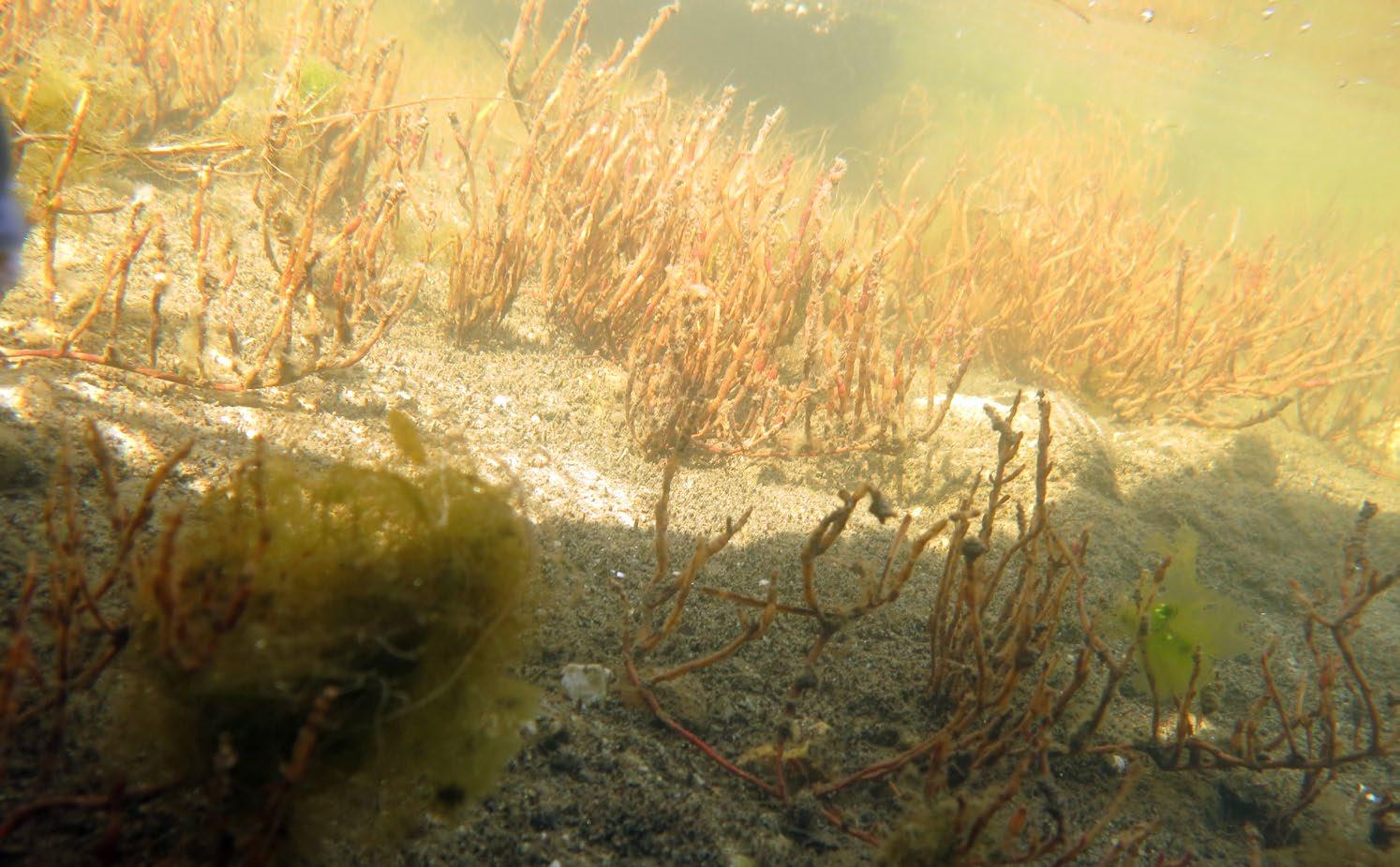

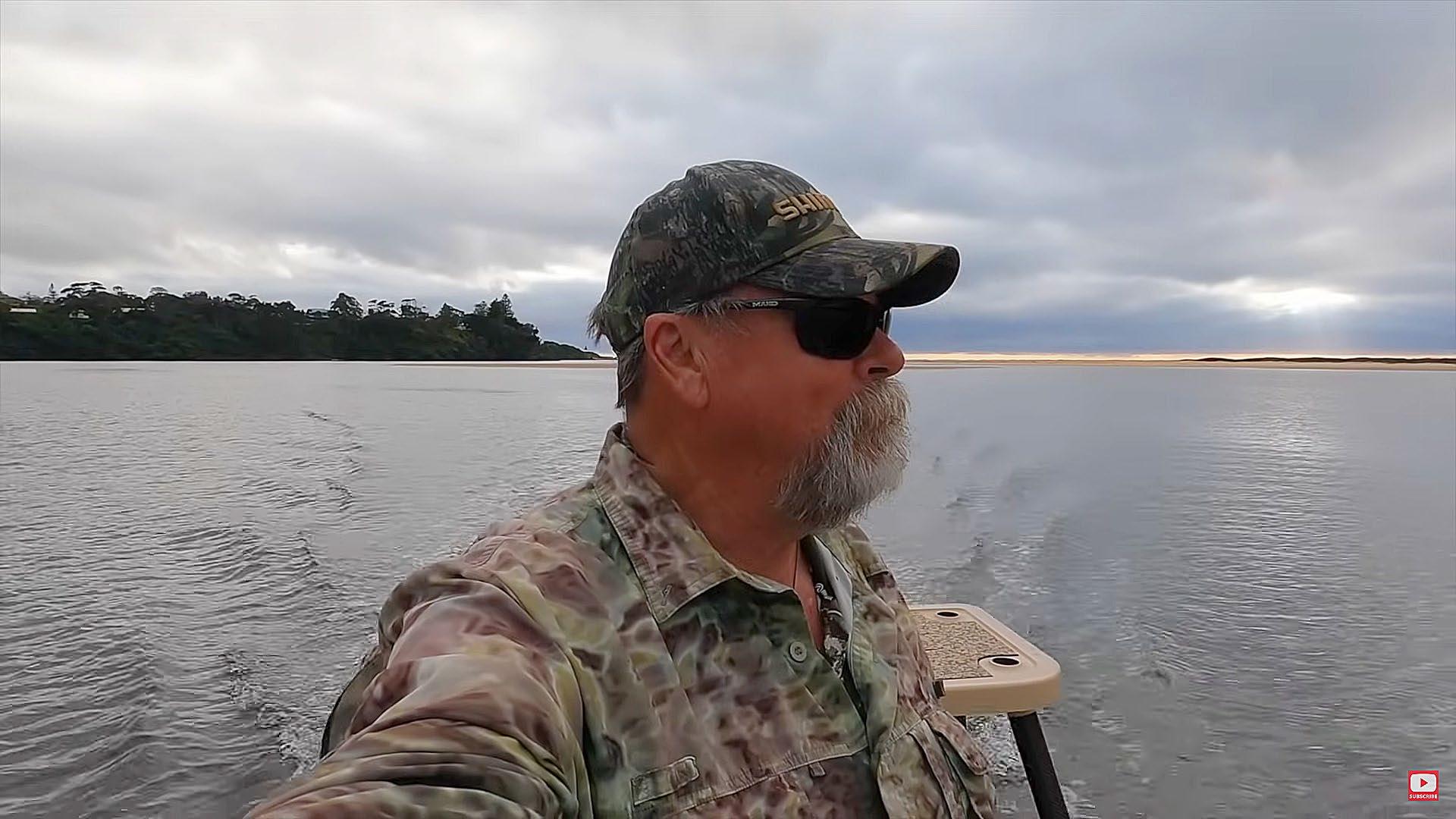
In estuaries, the four key fish locating elements just described (water movement, water quality, structure and food) are always overlaid, dictated and magnified by the ebb and flow of the tides. You won’t ever become a really successful estuary angler without understanding those tides, and how they impact life in the waterway.
The daily tidal cycle in estuaries involves two distinct forms of water movement: vertical and lateral (or horizontal). Vertical movement involves the rise and fall of the tides and can allow or deny fish access to feeding areas, force prey off shallow flats into deeper water and concentrate or disperse aquatic life. Horizontal or lateral water movement (current or flow) dictates the orientation of fish (facing into the current, so they can breathe) and also transports food and the fish themselves. When it becomes too strong, horizontal water movement can force fish to seek the shelter of current breaks or eddies.

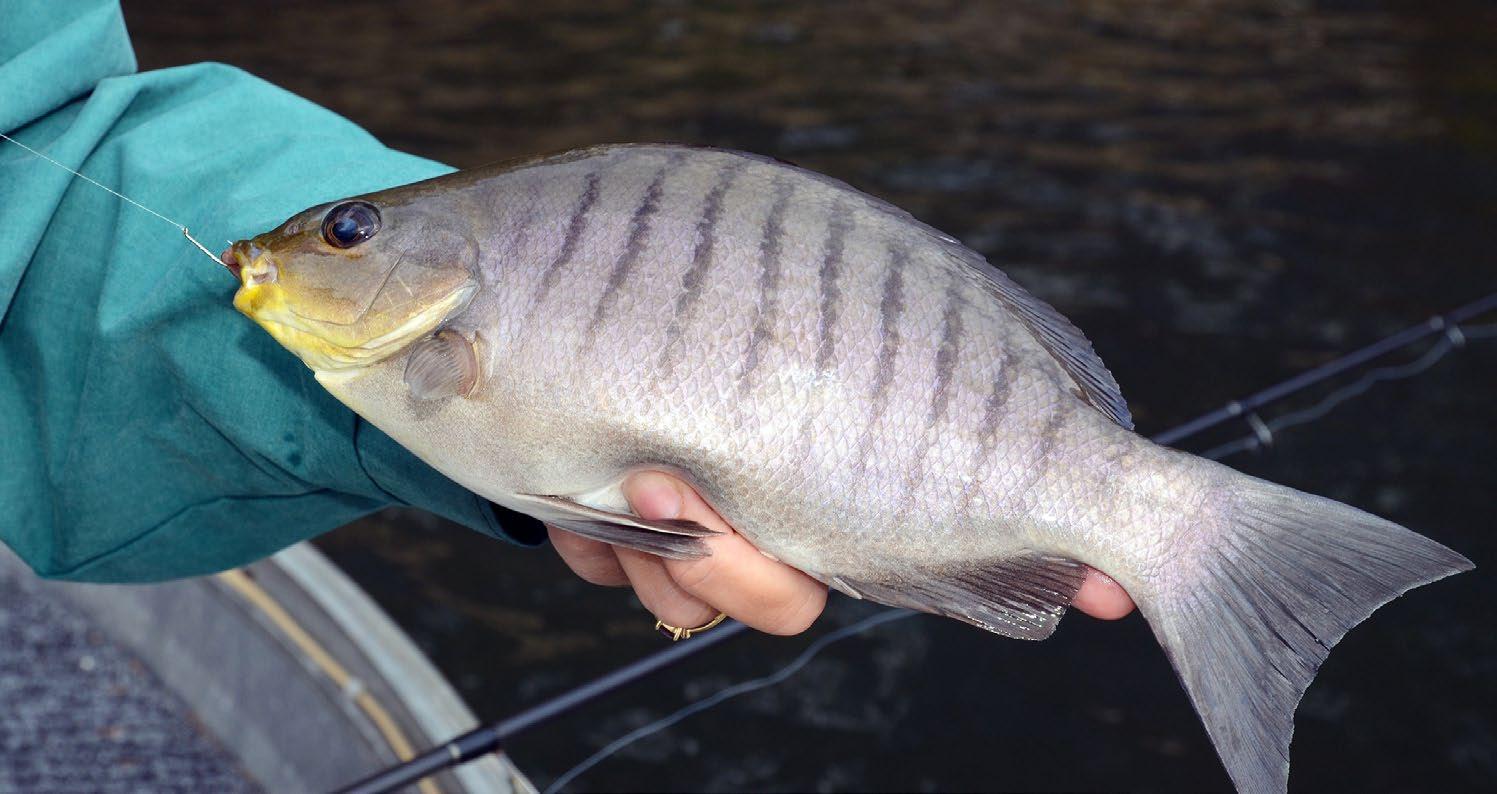
Many new chums hope to be given a set of hard and fast rules regarding the tides: “always go fishing at the top of the tide” or “fish here for flathead on the run-out and over there for bream on the run-in”… If only it were as simple as that! The impact of the tides varies so much from one estuary system to another — as well as from species to species and day to day — that simple “rules” hardly ever hold true. However, there are a few basic guidelines that are definitely worth bearing in mind when looking at the practical impacts of tides in estuaries:
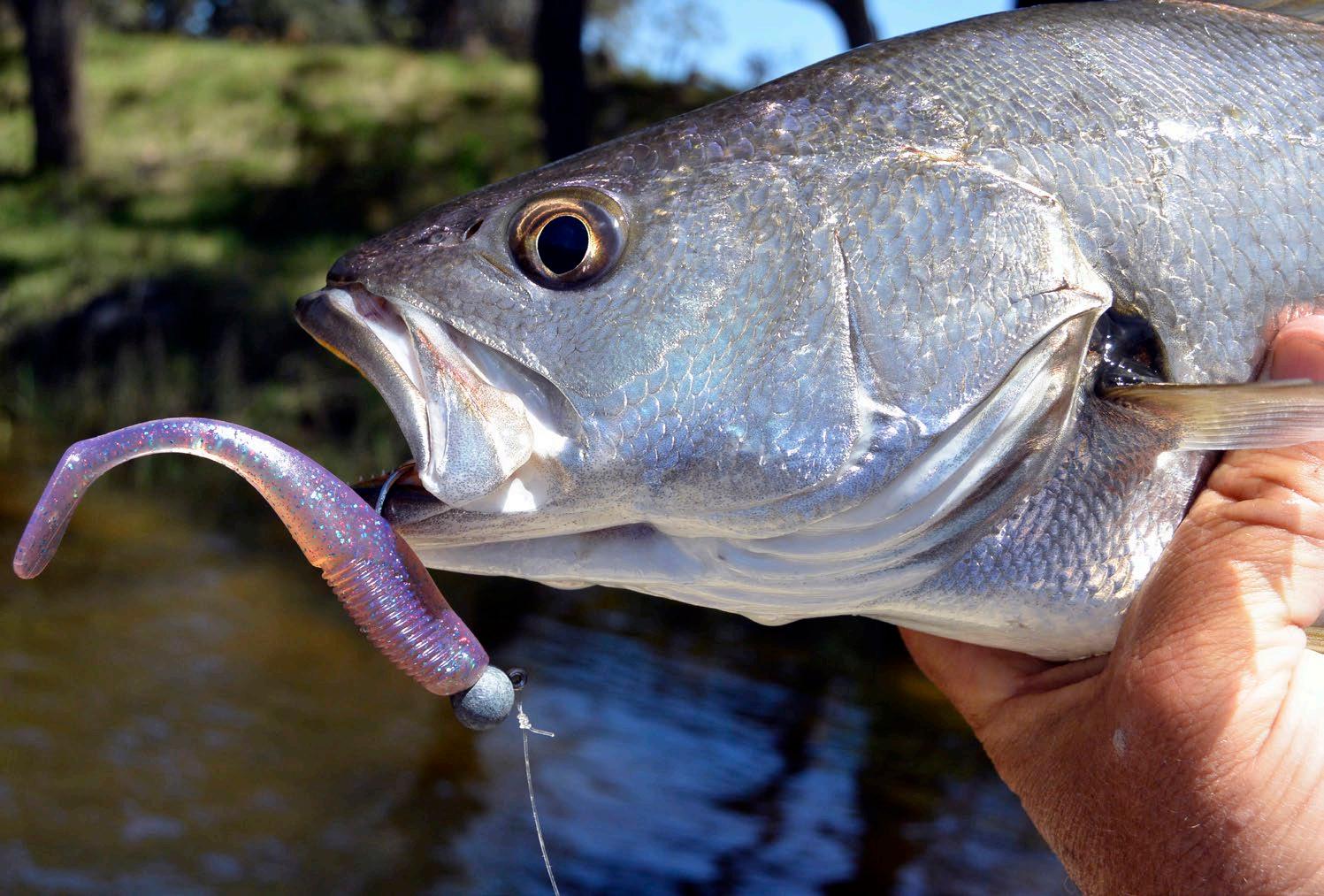
Ultra-clear water can make it trickier to fool sharpeyed fish like bream.
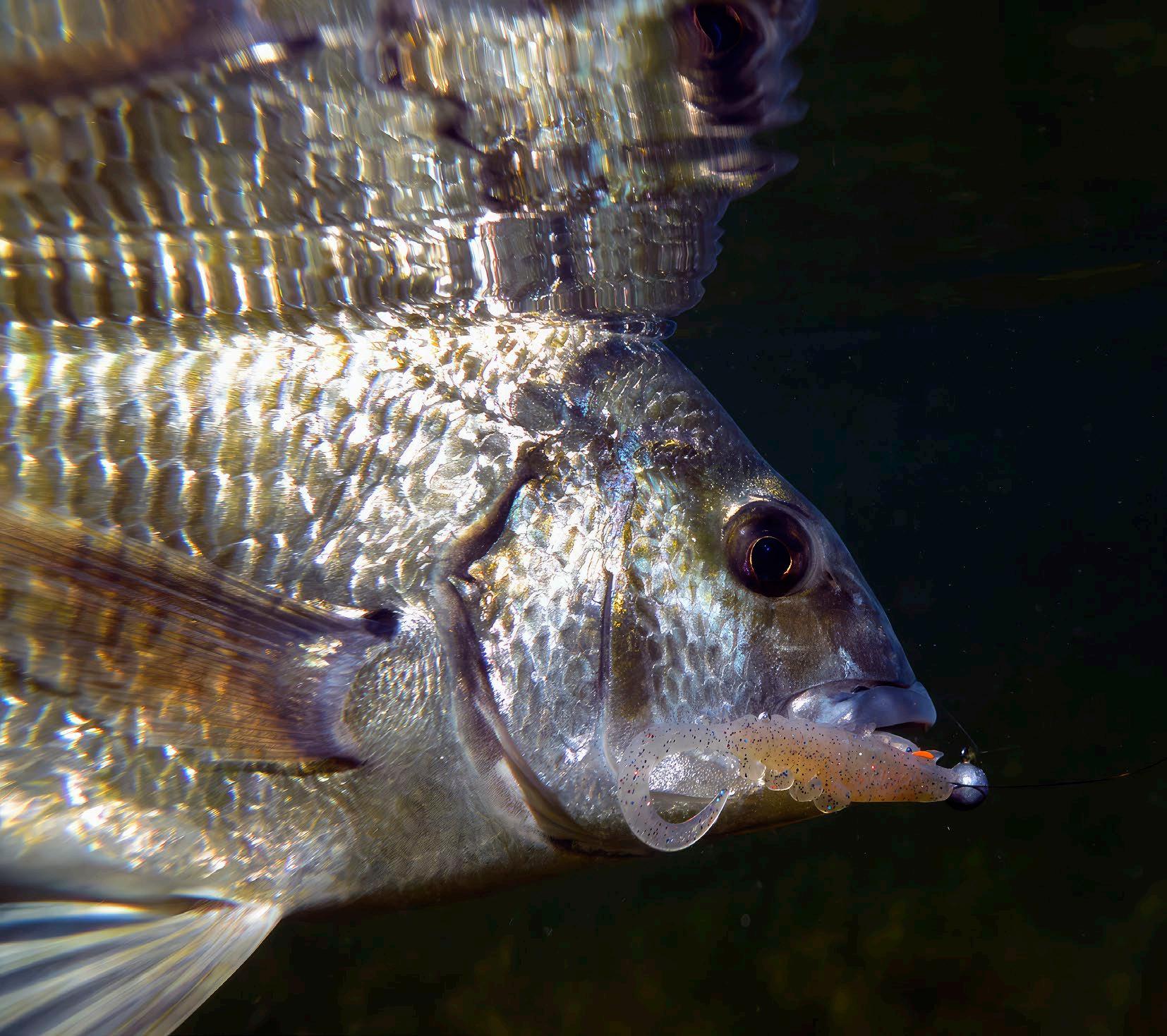
Firstly, fish obviously need water to swim in. If that water is relatively clear, they also need at least a little depth to provide them with protection from predators, especially during daylight hours.
It makes sense that fish will use a rising tide to move up into shallower areas and access food they can’t otherwise reach. These shallow flats are home to all sorts of prime tucker, especially burrowing invertebrates such as worms, yabbies, crabs and so on. Foraging species like whiting, mullet, bream, luderick, smaller flathead and the like are usually most active on a rising tide, using the increasing water depth to reach these fresh supplies of food. Predators will follow them, too, although prey and hunters can be quite spread out as the tide rises higher and the water becomes deeper.
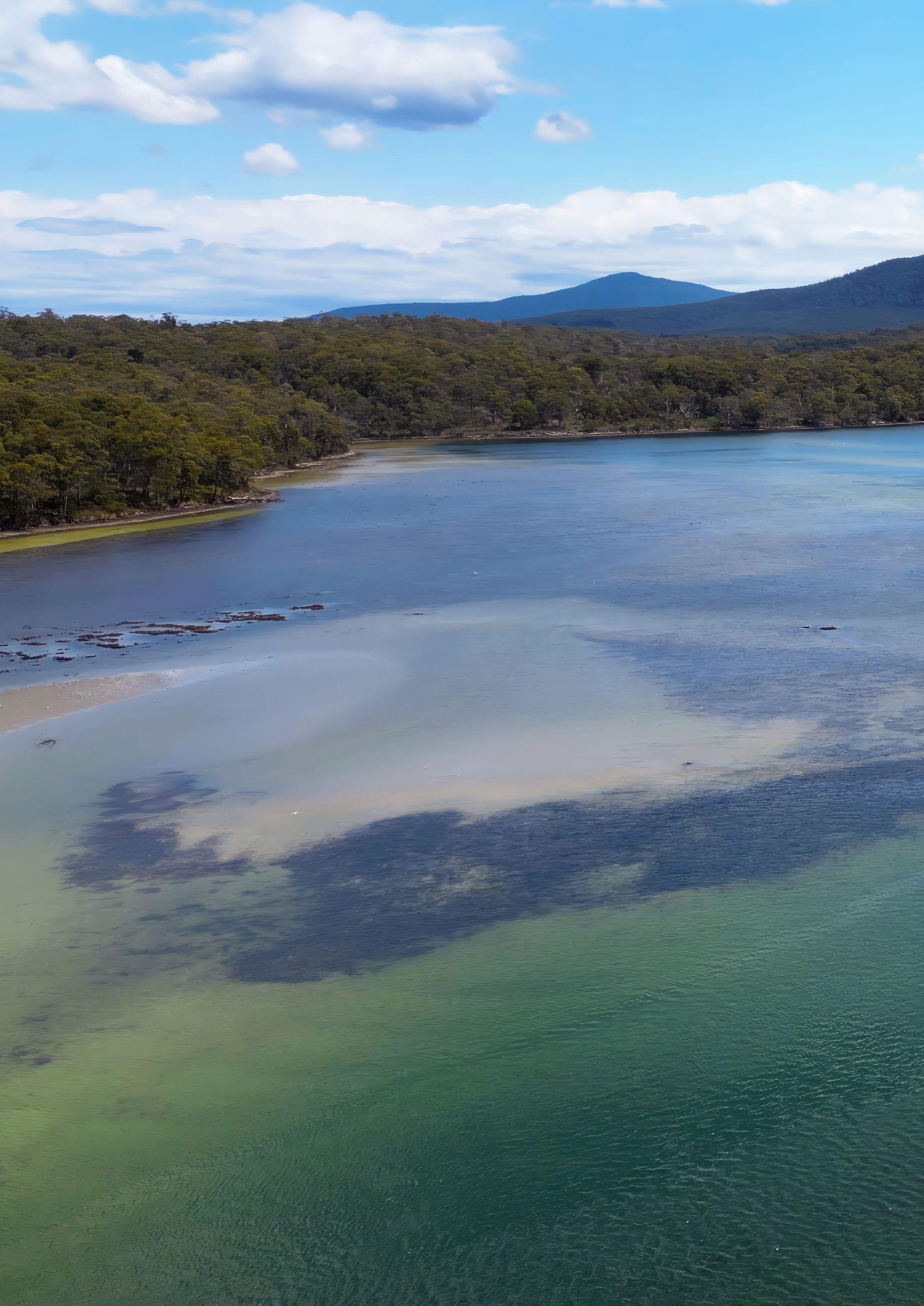
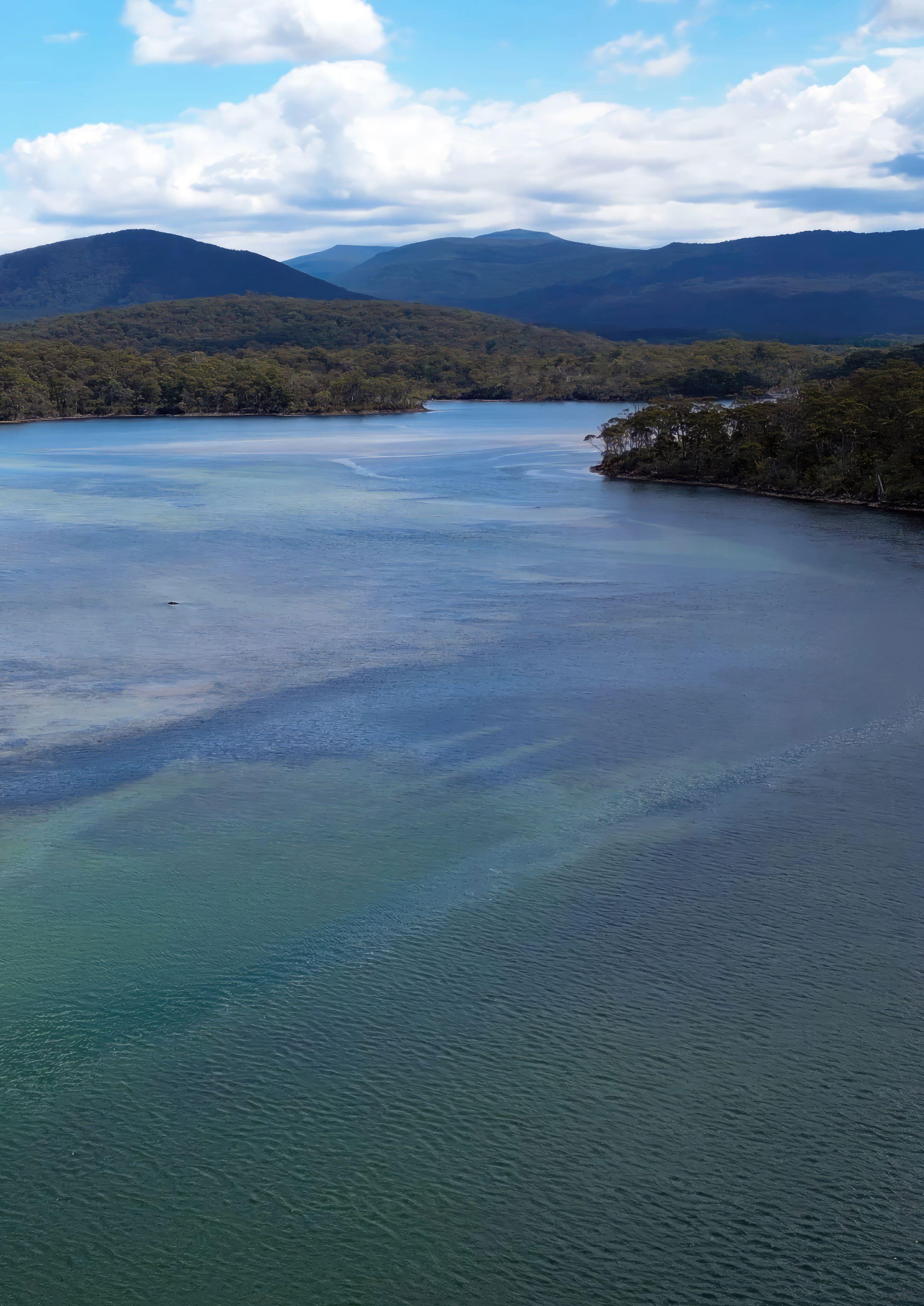
As the tide turns and begins to fall, all these foragers will become increasingly nervous and begin to exit the shallowing flats to seek the relative sanctuary of deeper water nearby. Generally, the larger, older and wiser forage fish and the more cautious species (like bream) will leave the shallows first. Last off (and first back on) the flats will be the smallest baitfish, and also any rays or sharks, which have
less to fear from predators. It’s also worth remembering that many fish will stay up on the flats a little longer at night, in dirtier water, or under heavy overcast.
As all this traffic exits the flats and leaves the shallows on a falling tide, predators will gather at the edges of the deeper water to wait in ambush, especially at any obvious choke points that funnel, channel or concentrate the flow of prey pouring out of the shallows and off the flats. When looking for these choke points, think in terms of road traffic. You’re looking for intersections, stop signs, road works, highway entrances and places where multiple lanes neck down to a single lane. These might include gaps in a weed bed, gutters leading off a flat, or creek mouths, to name just a few.

Look for fishy intersections and choke points.
All this prey traffic, and the predatory attention it attracts, will tend to peak during the last couple of hours of the run-out tide, when the “fish-to-water ratio” is also at its best, and then slow down right on the bottom of the tide, during slack water.
Tide changes themselves can be interesting times in an estuary. Water flow slows and may even stop completely at these times. This brings about a piscatorial changing of the guard. Fish leave the shelter of snags, weed beds and sea floor depressions or lumps to swim about freely and re-position themselves in readiness for the next pulse of tidal movement. Not surprisingly, these can be excellent times to catch fish, but often in areas that are relatively unproductive or even un-fishable when the tidal current is running hard.
As I said earlier, there are very few hard and fast “rules” for working the tides, and almost none that apply to every single estuary scenario you’re likely to encounter. However, the guidelines I’ve described will stand you in good stead. The underlying concept of the flooding (rising) tide being a happy time for foragers, the ebbing (falling) tide working in favour of predators, and tide turns marking a changing of the guard has much merit as a starting point for cracking the estuary code.

Vibes — hard and soft — are a great “searching tool” for all manner of fish.
Estuaries are rich, diverse and highly complex systems. It’s entirely possible to spend a lifetime fishing and studying just one major estuary and still never completely unlock its secrets. In many ways, this is the greatest charm of estuary fishing. Personally, I know I’ll never tire of studying the ceaseless ebb and flow of life in our living estuaries, nor of trying to suss out the behaviour of the fish that swim in them. Our tidal estuaries are fascinating places that reward the observant… So get out there, open your eyes and open your mind… There’s so much to learn!



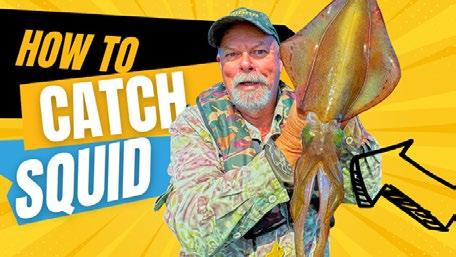
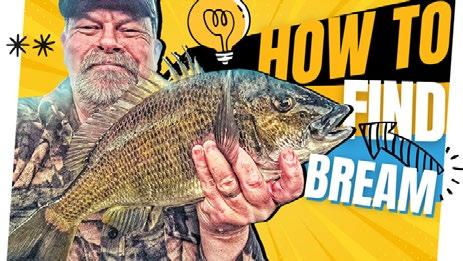


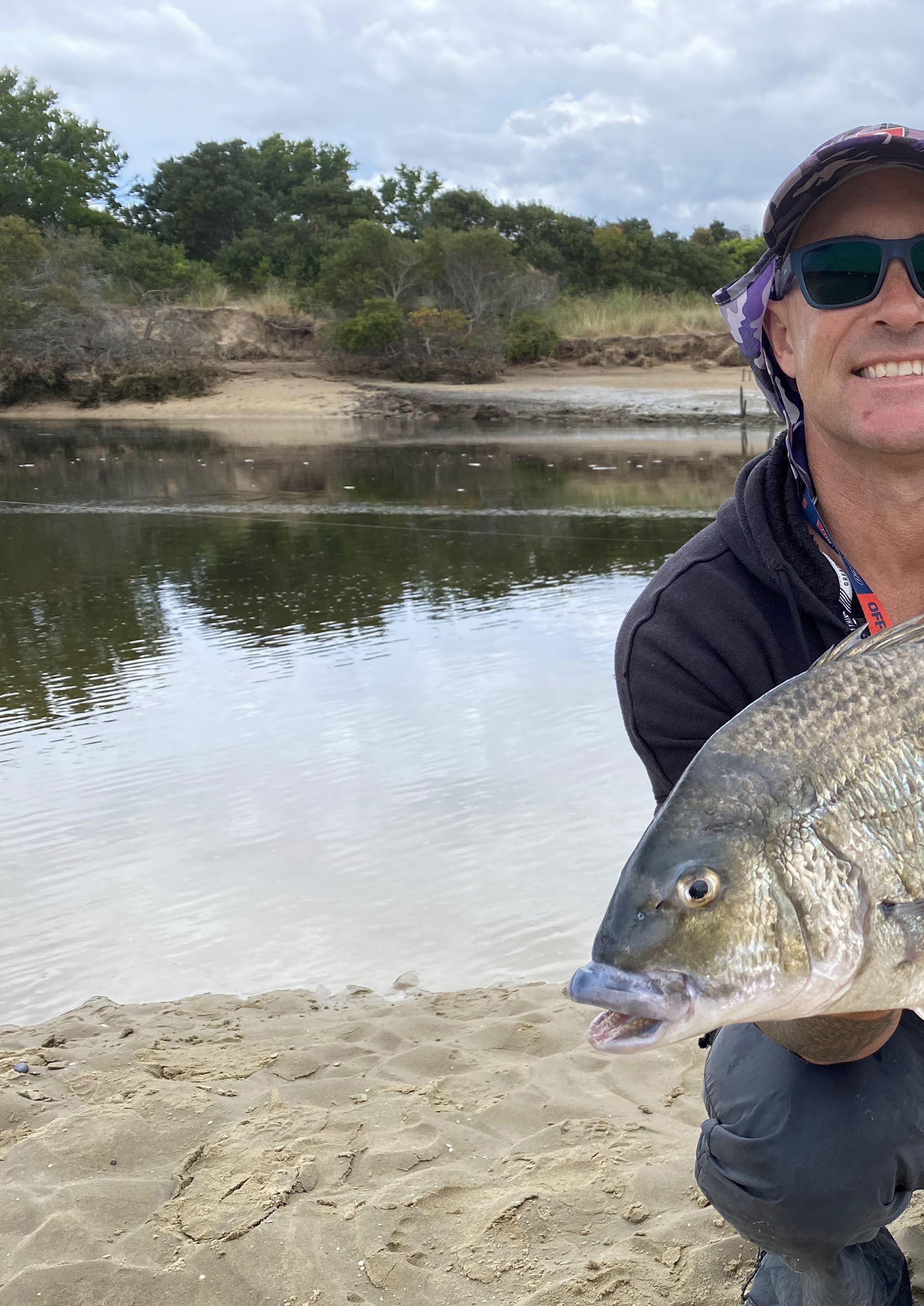
TASSIE GUN DAMON SHERRIFF IS LUCKY ENOUGH TO LIVE ON THE NORTH COAST OF THE ISLAND STATE, WHICH IS HOME TO SOME OF THE BIGGEST SOUTHERN BLACK BREAM ON THE PLANET. WHILE MOST ANGLERS TARGET THEM WITH LURES, IN THIS ARTICLE DAMON GETS BACK TO THE OLD SCHOOL METHOD OF TARGETING BREAM, BAIT FISHING.

Yeah, some purists might turn their nose at it, but bait fishing for big Bream is still arguably the best way to target them with success. When fishing with natural bait such as prawns and crabs, big bream find it very hard to resist. A simple and effective way to catch them that any angler can do at any stage of their lives and still have an absolute ball.
A fun process in itself. The main baits I use for really big bream are fresh prawns and crabs, but there are many other baits that will work well. Small, medium size square backed crabs can be found in the intertidal zone of most of the Estuaries along the coast. You can find them under rocks and timber lying along the shores of the estuary. Just be very mindful when collecting crabs to leave the habitat exactly the way you found it, so all logs and rocks you flip over, make sure you put them back gently the way you found them. This will make sure you don’t destroy their homes and you will be able to collect bait from the same places in the future. Remember to only take whatever you will use for the fishing session and release all the unused bait at the end of the session. Probably around 10 crabs are enough for a couple of hours fishing in most situations. The gear you will need is a bait bucket and some appropriate footwear, as there are sometimes sharp rocks and shellfish around most shores. Crocs or Shimano fishing sandals are ideal.
The other bait that is deadly on big bream is fresh prawns. I get mine in the estuary of a night, the best time to go is around the new moon phase. You will need a prawning light
or super bright head torch, a prawn scoop net with a longish handle, and a small bucket to collect the prawns. The trick is to wade the shallows on a run-in tide, searching for prawns and then scooping them up with the net. It’s a fun trip in itself. You can cook up any leftover bait, as they are delicious, so nothing is wasted. If the bream you are catching are a 45 to 50 cm fish, you can bait up a whole prawn. If they are smaller fish, you can get three to four baits out of a good size prawn.

The other bait you will most likely come across while collecting prawns are garfish, which are also a top big bream bait as well, make sure you check the bag and size limits for your state before collecting garfish as this will apply while dip netting. A good size garfish can yield five to ten baits, so you don’t need many and you only take what you need. Fish for the Future!!
Tassie has many Bream fishing locations, but the biggest Bream are caught along the North Coast. Most of the estuaries will have Bream in excess of 2 kg in them, with a few holding monsters 2.5 to 3 kg. Here are a few of the estuaries I would recommend if you were targeting these monsters with bait or lures.
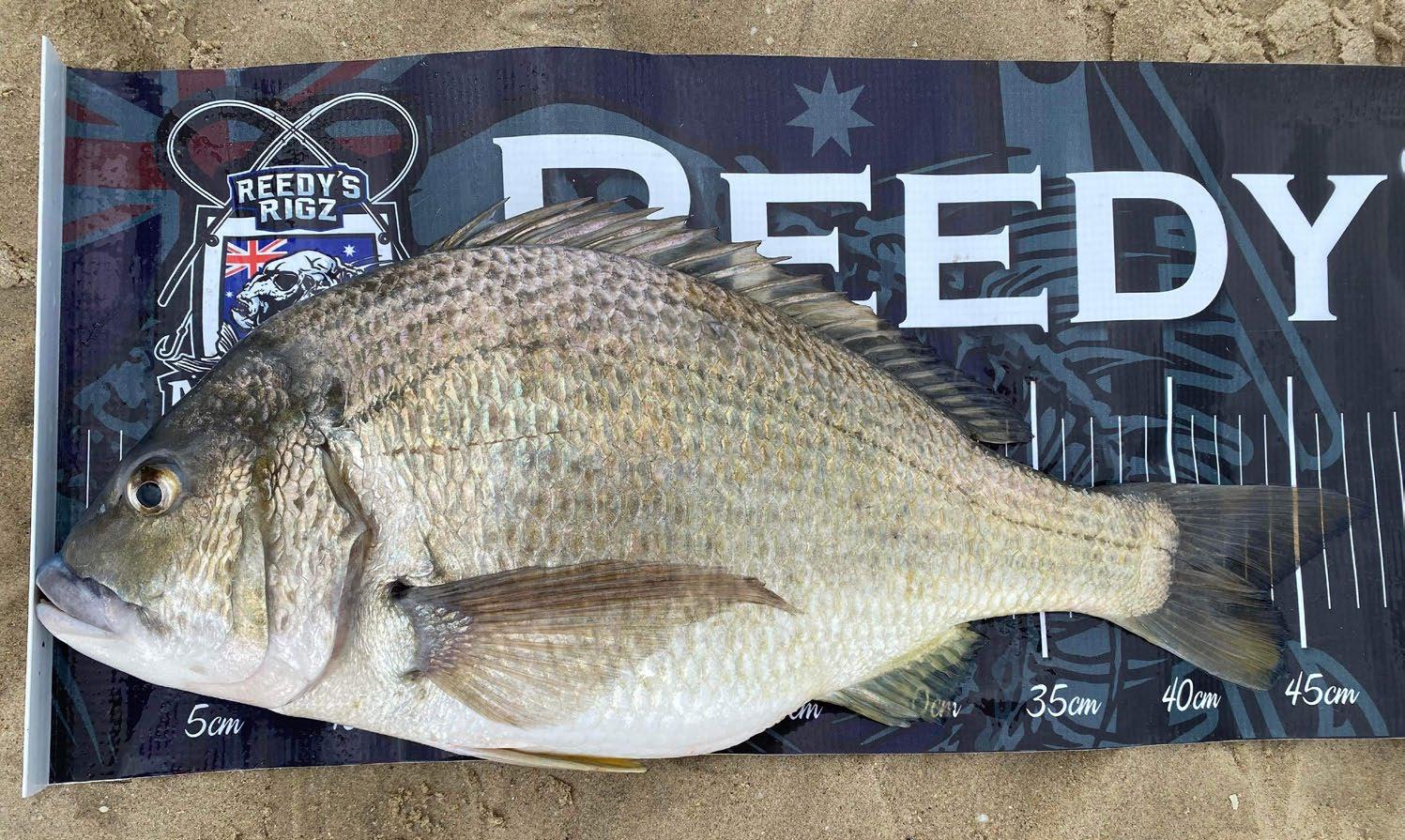
The Mersey is the estuary which runs into Bass Strait and has the City of Devonport built on its shores. It’s a very convenient place to stay at to fish. The city boasts great accommodation, plenty of eateries and supermarkets. Most of the Bream fishing is done about 10 km upstream at a town called Latrobe. There is a small weir that is the hot spot. Most anglers target them above and below this man-made weir at Bells parade at Latrobe. Crabs are a favourite with the locals there. Big Sea Trout also inhabit the same area when the water is cooler. The best months to plan a trip would be October through to May.

This is possibly the best Big Bream Estuary in Tasmania; many large fish are caught here each season. The biggest black Bream I have heard of from here is 3.2 kg.
My personal best also comes from here at 2.35 kg. The bream are very broad spread in the estuary and there are many land-based areas you can target them. The Frankford Highway Bridge is a very productive spot. You can access upstream from the bridge and there is a small weir there and just below this weir is a great spot. Additionally, there is good bait fishing available around Squeaking Point near Port Sorrel. A boat is a definite advantage as there are plenty of other great spots around the estuary. Good boat ramps exist at Port Sorrel, and you can beach launch on a pebbly beach at Squeaking Point. Accommodation is available at Port Sorrel Caravan Park. There is a supermarket at Port Sorrel too. Crabs and prawns are the go-to bait.
This was my home water for many years. Although the Tamar is not known for its Big Bream, believe me there are no shortage of them in there. Being a fish taxidermist, the biggest bream I have seen and worked on came from here weighing in at 2.6 kg. It was a monster; it was taken by local angler Steve Robinson of Deviot. My Son Benjamin landed some beauties around this area. All of them taken on fresh crabs, prawns and garfish. The best areas are around Deviot, Supply River, Swan Point and Gravelly Beach, but you can catch them as far up the river as Launceston. We used to catch a lot of mixed sizes, not just all big fish like

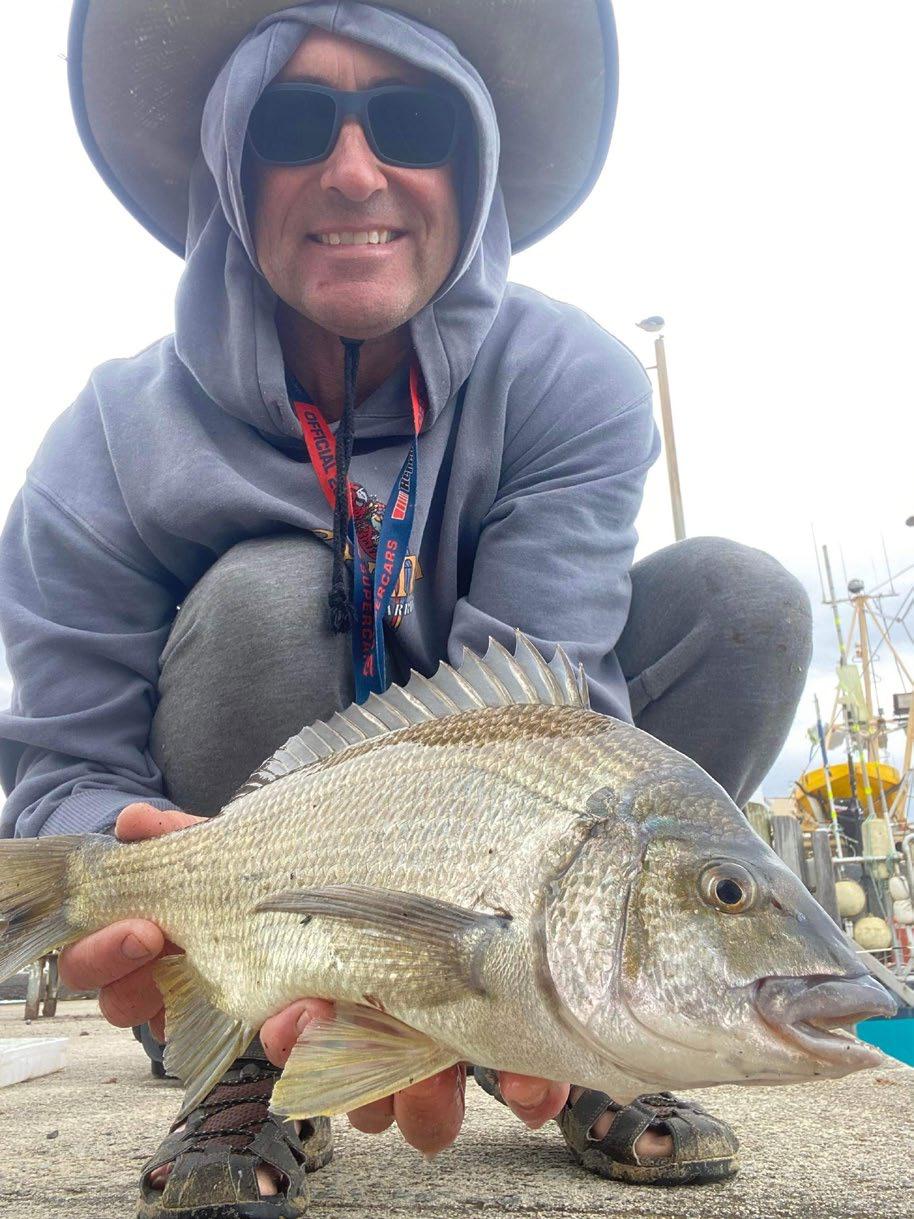
The
the Rubicon. Another spot in the Tamar worth some attention for big bream is West Arm at Beauty Point. The fish hang around the Pipi beds at the mouth of the Yorktown Rivulet. The best spot is near Boat Crews Point. Crabs and prawns are the best, but pipis and nippers are good too. The Tamar Valley has a variety of accommodation options, from Launceston to Kelso and plenty of food stores around the area.
Author with a Beautiful Bream from the Rubicon estuary at Port Sorell also taken on a green prawn.
Whiting and Snapper legend Christoper Garner from Hastings in Victoria travels to Tasmania every year to bait fish for our Mega Bream and Whiting.
The estuary is known for big Bream, has a really good population of solid fish, with some even surpassing the magical 2 kg mark. Additionally, the estuary is very shallow and almost completely drains out at low tide, which limits boat and kayak access to half tide up. There are some good pipi beds around the mouth of the estuary and the bream congregate around these shallow areas at low water because there is not enough water to get upstream. So, land-based angling is best down around these areas. There is an island in the middle of the lower reaches of the estuary, which is called the Mole Hill. There are some good pipi beds in this area and it’s worth a walk across the mud flats at low tide to fish into the shallow channel. Big Bream can also be found upstream once the tide runs in. Boat access is definitely the way to go here. There is a caravan park at Weymouth, which is at the mouth of the river. Apart from that, the closest accommodation would be at George Town, which is 25 minutes away. Pipers River is a very fish rich system and definitely worth a try. All bream baits work well at Pipers.
Not a known water for big Bream, but being my local water, I had to mention it. It’s a very underrated estuary. There is a good head of nice fish in the river around the 40 cm mark but there are also fish a lot bigger than that, with a few approaching the 50 cm mark and over 2.5 kg. My Son Jack caught the biggest I had seen from there at 48 cm. It’s a shallow estuary, very much like the Piper. But has a lot more shore-based option. There are many areas you can fish for bream. The local boat ramp is a hot spot, as is the local wharf in the middle of the town at Bridport. Prawns and crabs are the best bait. Lure fishing at Bridport is also very popular and the Cranka Crabs are a favourite with the locals. The run-in tides are always best at Bridport, which is a Seaside Village on the Northeast Coast. It is a beautiful holiday destination and is a great place for a summer getaway. There is plenty of offshore bay fishing to be had as well. It boasts excellent King Gorge Whiting and Snapper fishing. There is great accommodation and many options close to the fishing action. There are many places to dine out and it has a bakery and a great coffee shop and, of course, the Bridport Café. Drop by Bridport Café and take a look at the snapper I caught, proudly showcased on the wall.


The beauty of this sort of fishing is you don’t need a $500 or $1000 reel to play the game. You have just as much chance with an inexpensive combo from your local tackle shop. The rod I suggest using is one around seven foot with a solid fibreglass tip. This makes the tip stronger and more robust and less likely to break when using up to one

once sinkers i n some situations. Silstar Power tips have a fantastic range of rods to suit this purpose. The reel needs to have a smooth drag system and needs to hold a couple of hundred meters of 4 kg mono or braid. You can fish lighter than this, but be prepared to lose a few in the structure. A 2500 to 3000 reel is a good start. A landing net to is a good idea as well and make sure it has a long handle if you are fishing from a wharf or high bank. The North coast of Tasmania has 3 metre tide fall, so it’s a fair distance when the tide is low.
Another tasty by-catch of Bream fishing. A Southern Blue Spotted Flathead.
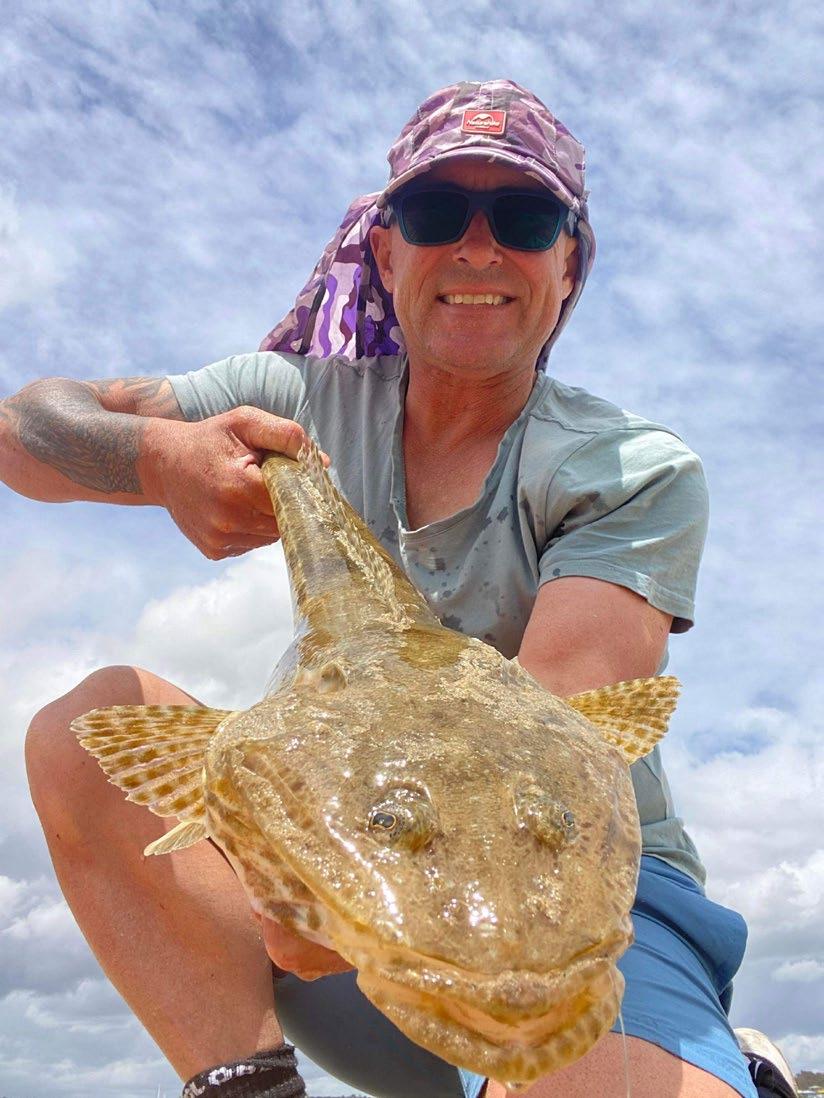
Catching big bream through bait fishing is a simple and accessible activity for all ages, without the need for expensive equipment. You have just as much chance of landing a fish of a lifetime on a $70 combo as you do a $1000 one. Tasmania is blessed with some fantastic fish and the bream fishing here is no exception. I have friends that regularly fly from the mainland just to fish for bream with me. So, if you ever get an opportunity, definitely take it.
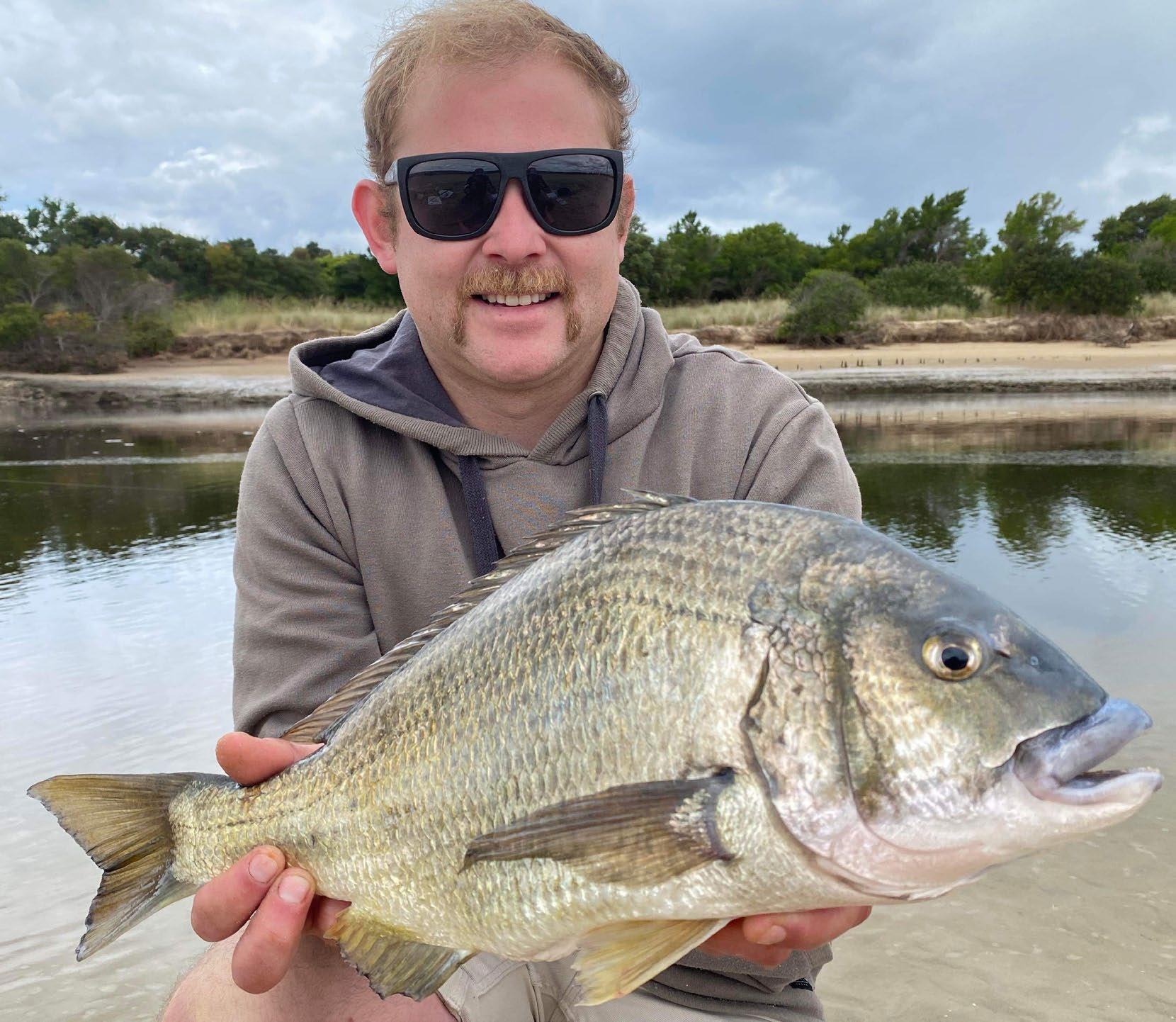
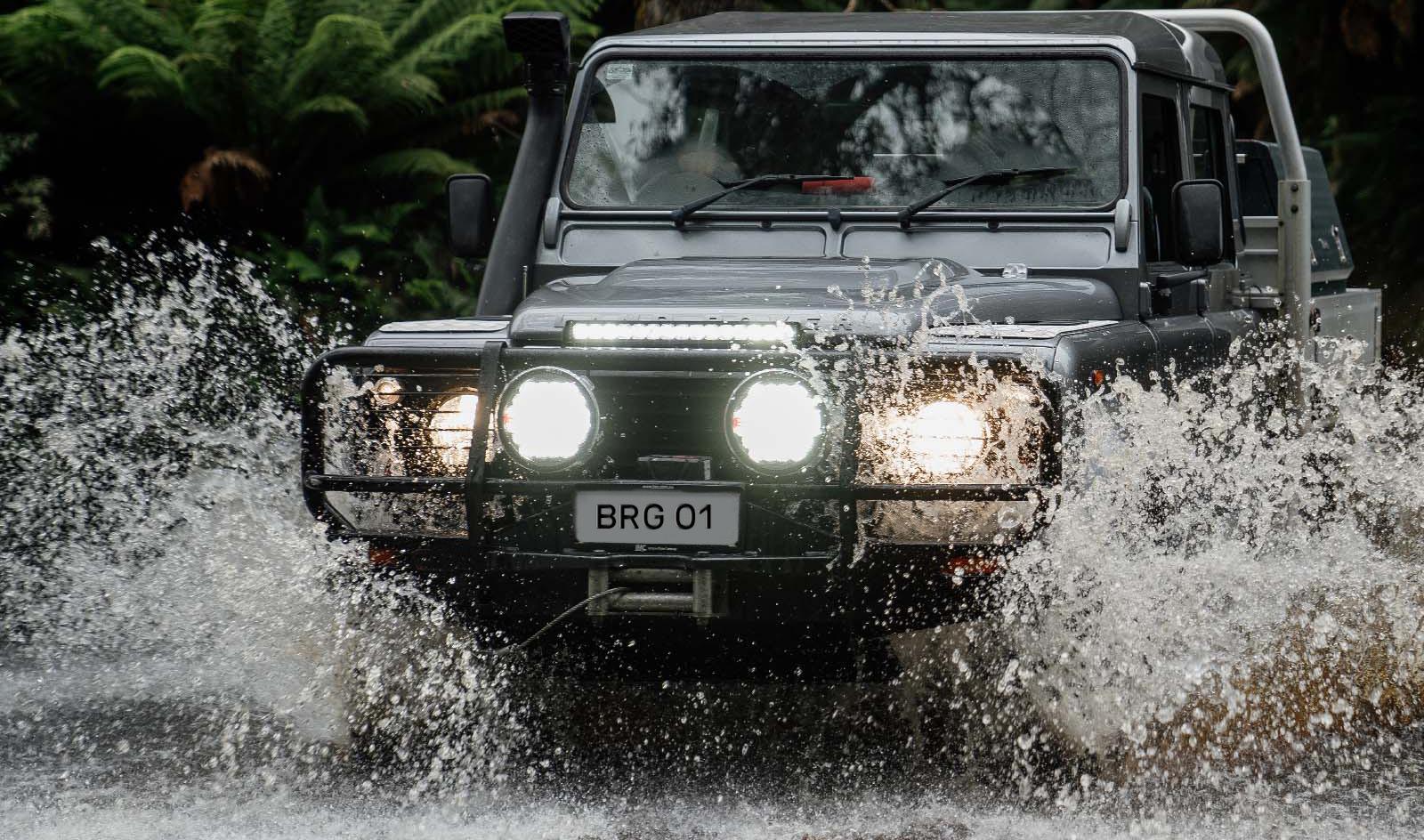
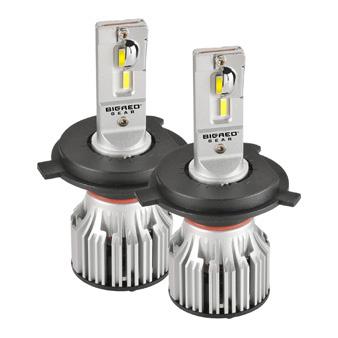
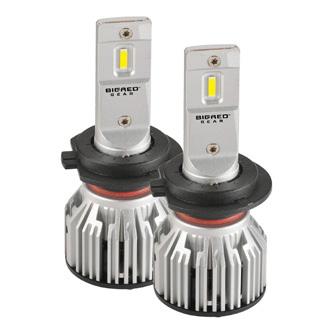
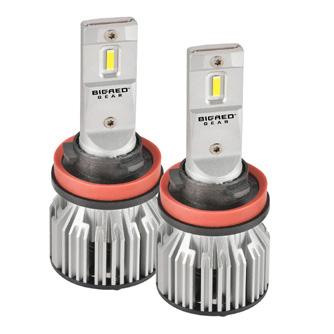



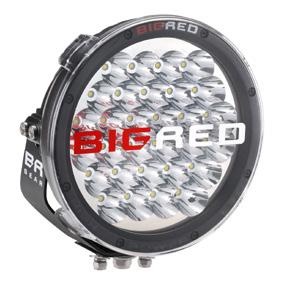

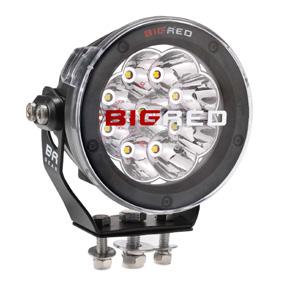







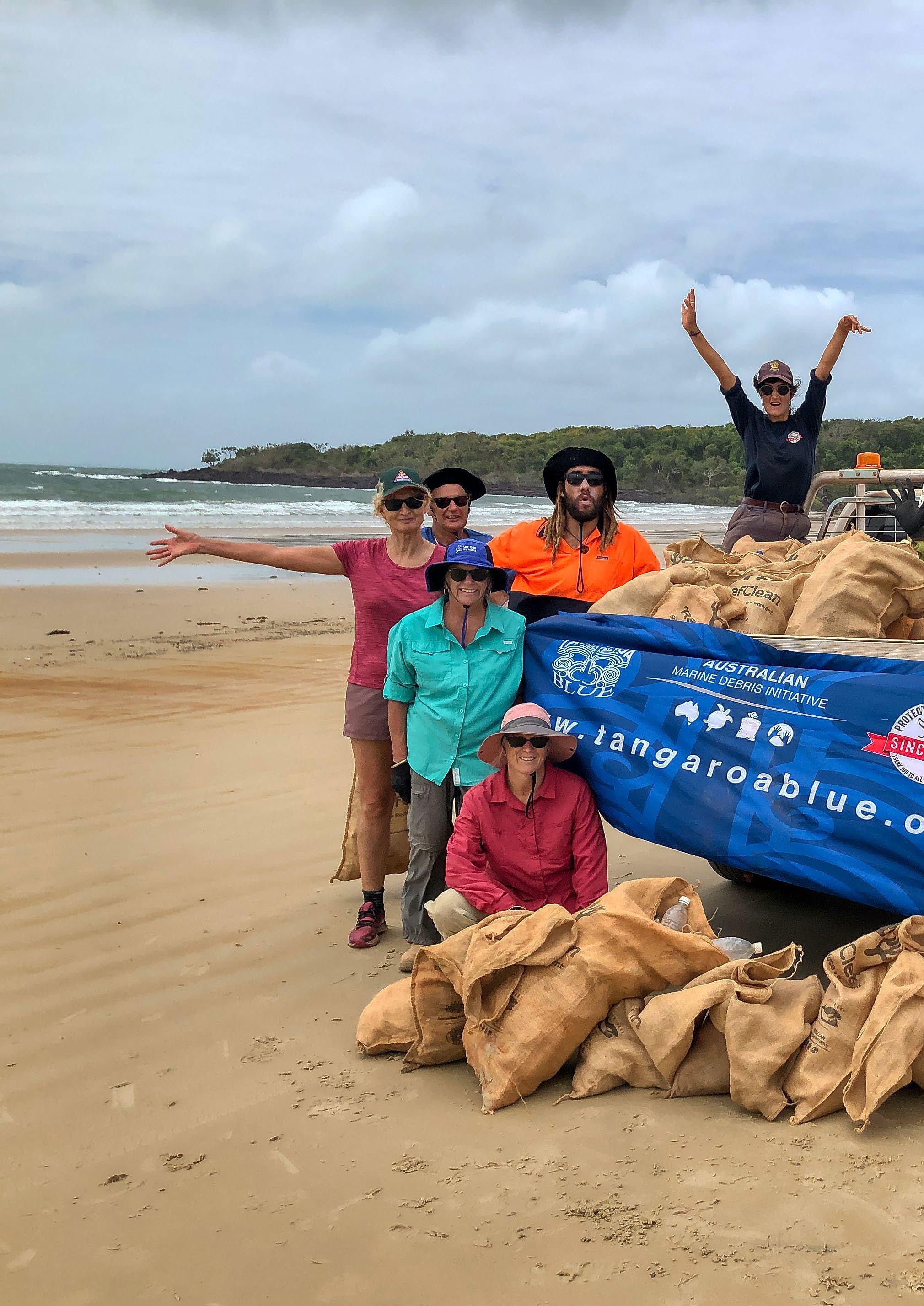
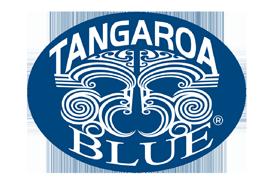
When you spend the majority of your days on, in or under the ocean there’s a good chance you’ll end up having some special interactions with marine animals, and when those animals choose to come and hang out with you, it’s hard not start forming a connection with our marine environment.

Northern Peninsula Area Regional Council Apudthama Land & Sea Rangers on Country with Tangaroa Blue staff and volunteers for the annual 5 Beaches Loop Clean-up at the very tip of Cape York.
As a scuba diving instructor for over 15 years, my highlights would be having an endangered Hawaiian monk seal playing with my bubbles while diving on the island of Oahu in Hawaii, having a mother and calf Humpback whale cruise past me on a safety stop in Western Australia’s Geographe Bay, freediving with whale sharks and mantas on Ningaloo Reef and spending time with a Malabar Cod called Daisy on the Great Barrier Reef. I can’t forget coming face-to-face with a Great Hammerhead shark out on Osprey Reef in the Coral Sea, and hearing the “Star Wars” calls of the male dwarf minke whales on the Ribbon Reefs of the northern Great Barrier Reef, as well as seeing the most spectacular tiny nudibranchs, pigmy seahorses and leafy scorpion fish which you really need to get your eye in to find. Actually, come to think of it, I could just keep going now that these memories start flashing through my mind.

The author catching up with resident Malabar Cod Daisy at Agincourt Reef on the Great Barrier Reef.
Over this same time, I really started to see the impacts of humans on these environments. Normally not a dive went by that I didn’t find at least a few pieces of rubbish which got stuffed up my wetsuit sleeves, and the occasional animal entangled or caught in rope, line, net or plastic that needed to be cut off with my dive knife. Beach hikes through the Leeuwin-Naturaliste National Park always ended up with bags full of rubbish having to be hauled back to the carpark.
Early in 2005, our dive shop, Cape Dive, was involved in responding to two mass whale strandings around Busselton in Western Australia’s southwest. The first stranding saw 19 long finned pilot whales washed up across 20 odd kilometres of coastline, it took us over 24hrs to move them to a holding area, so they could be given the best chance of survival by releasing them all at the same time. Unfortunately, six whales did not survive. And then just 6 weeks later, 120 false killer whales washed up in the same area. Everyone was a lot better prepared for that stranding, and only one whale died. I remember sitting on the dive boat with a flotilla of vessels guiding the whales out to deeper water, once we had managed to get them all off the beach. As the water got deeper, you could see them almost becoming reorientated as their echolocation switched back on, and I’ll never forget seeing two big bottlenose dolphins appear at the head of the pack, almost responding to the distress calls they had been hearing all night from the whales, it was like they were there to show the whales the right direction to get back out to deep water.
Two whale strandings happened in early 2005 in WA’s Geographe Bay. The community rallied to help get the whales off the beach and back into deeper water.
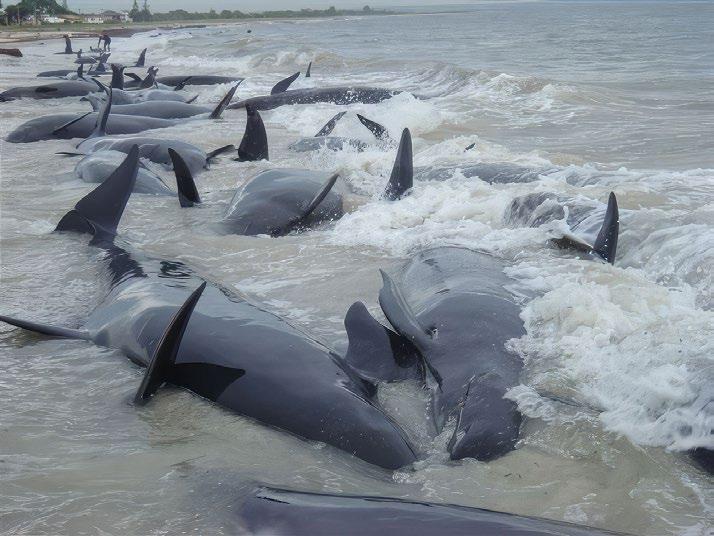
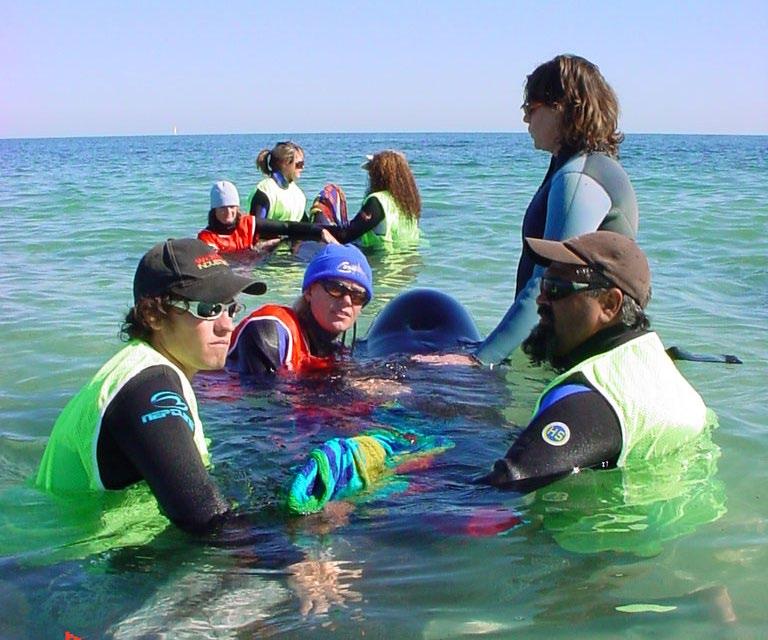

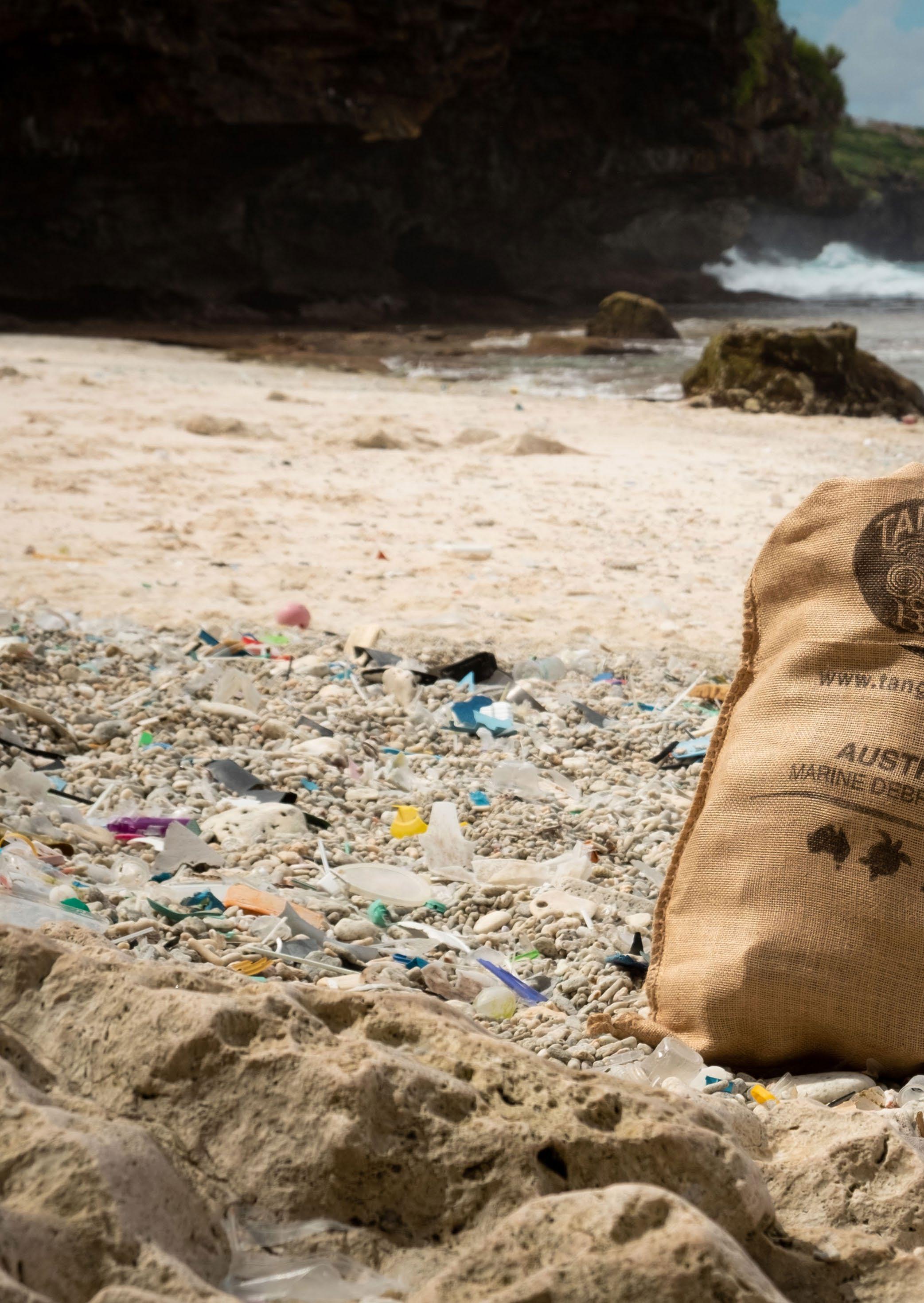
The influence of my time in the ocean resulted in Tangaroa Blue being created. The people around me were all ocean people—we were scuba divers, fishers, surfers, skippers and freedivers—we loved being in the ocean, and we wanted to find a way to give back to the environment where we worked and played.

Volunteers out on Hinchinbrook Island for the annual Great Barrier Reef Clean-up - leaving it better than you find it and exploring some of Australia’s stunning nature.
In 2024, we are celebrating Tangaroa Blue’s 20-year anniversary—what started in the southwest corner of WA is now a national network of over 200,000 volunteers and partners who collaborate through the Australian Marine Debris Initiative (AMDI) to reduce the impact of marine debris and plastics in our oceans.
Our mantra is “if all you do is clean-up, that’s all you’ll ever do”, so through the AMDI, we have not only removed over 24,000,000 pieces of rubbish from our coastal and marine environment, but recorded them into the AMDI Database, so we can highlight what types of rubbish are impacting different areas around Australia, and work on strategies to prevent the loss of rubbish into the environment in the first place.
The AMDI Database is now the biggest marine debris database in the southern hemisphere, and has been used not only across Australia, but also internationally to support the work currently being done by the United Nations on the Global Plastics Treaty.
Greta Beach on Christmas Island in the Indian Ocean is one of our most remote AMDI monitoring sites.
The AMDI data shows that what is washing up on a Cape York beach is completely different from what is washing up on a beach in Port Phillip Bay in Victoria, so the prevention strategies have to be different as well.
In Cape York, over 90% of what is collected during beach clean-up events is coming from offshore sources like international cargo ships, commercial fisheries and ocean currents. We can use the barcodes and brands to show the country of manufacture, and you’d be surprised to see how many different water and drink brands there are washing up on our remote coastline.
10,601 plastic drink bottles collected at one beach clean-up at Mapoon in Cape York - only 20 were Australian brands.
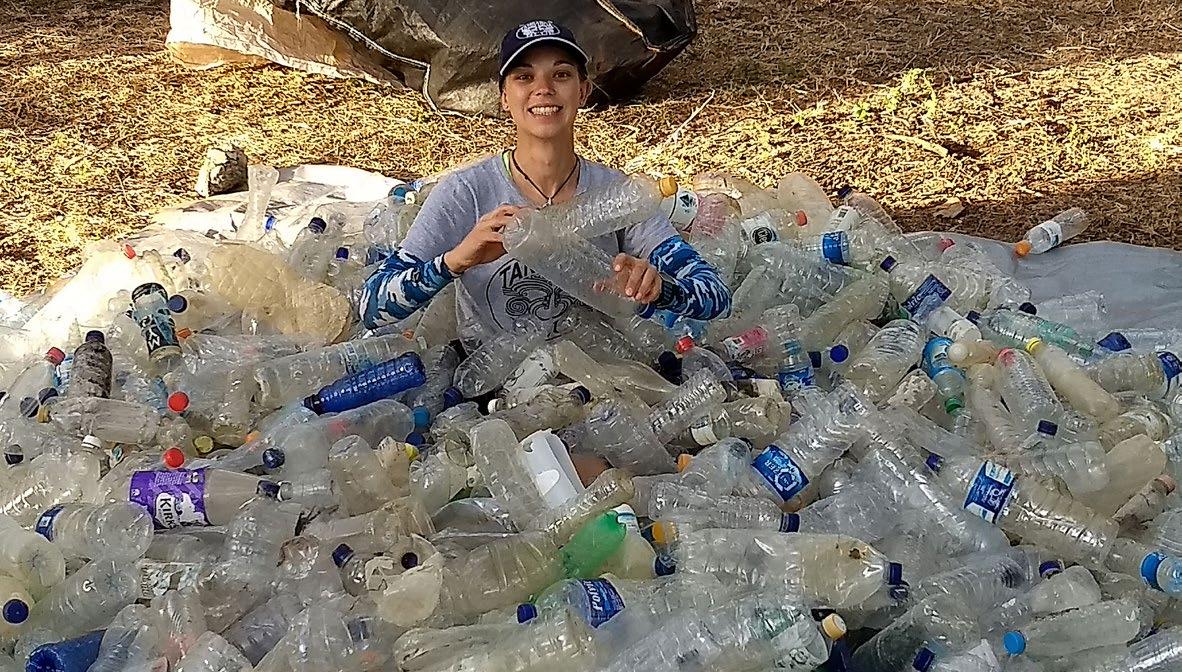
Because we are recording this information, you get to know what the common foreign brands are like Nongfu Springs and Kang Shi Fu from China, Aqua from Indonesia and Sparkle Water from South Korea. But a few years ago, while doing our annual cleanup at Chili Beach in the Kutini-Payamu National Park with the Kuuku Ya’u Traditional Custodians, we came across a brand we hadn’t seen before, actually more than 300 bottles of the same brand from Vietnam called Thach Bich (yeah, I’m sure they don’t say it in Vietnamese how it looks in English). On a lot of our remote clean-ups, we also have an officer from one of our government partners, including the Department of Agriculture, Fisheries and Forestry, Australian Customs and the Australian Border Force come along, as sometimes what we find is important to report from a biosecurity or security point of view.

Working at the data table at the Chili Beach event, I mentioned to the biosecurity officer that we had never really seen this brand of water bottle before, definitely not in such high numbers, and when you looked at the bottles, they looked like they had just been drunk from the day before—they still had labels on, still in used by date, no algae growth—they definitely hadn’t floated from Vietnam.
This data was passed on to the Australian Border Force, who reached out to us for some more information, and then the data was put through ocean modelling software, which resulted in a Border Force vessel heading out to a specific region in the Coral Sea off the coast of Lockhart River. You won’t believe what they found… yep, a fleet of illegal fishing vessels from Vietnam!

Vietnamese Debris Links to Illegal Fishing Vessels – See story here.
Another AMDI partner is the Australian Maritime Safety Authority (AMSA), who are responsible for enforcing the international MARPOL regulation, which addresses ship sourced pollution.
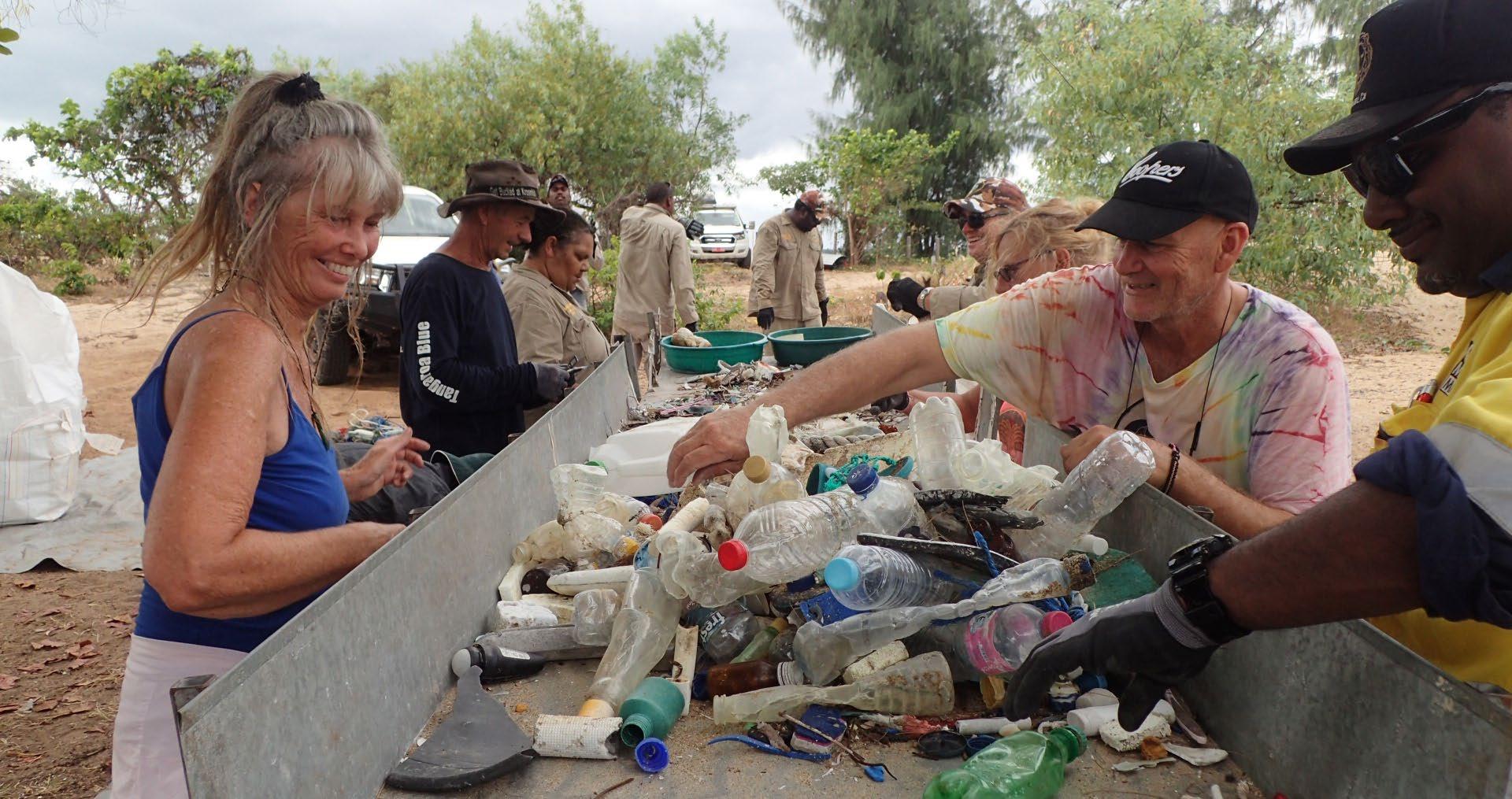
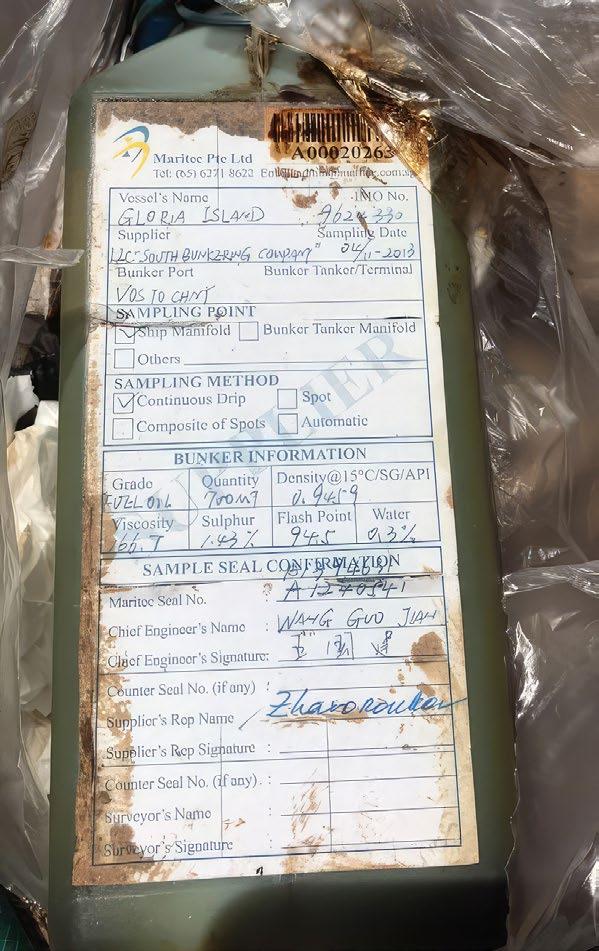
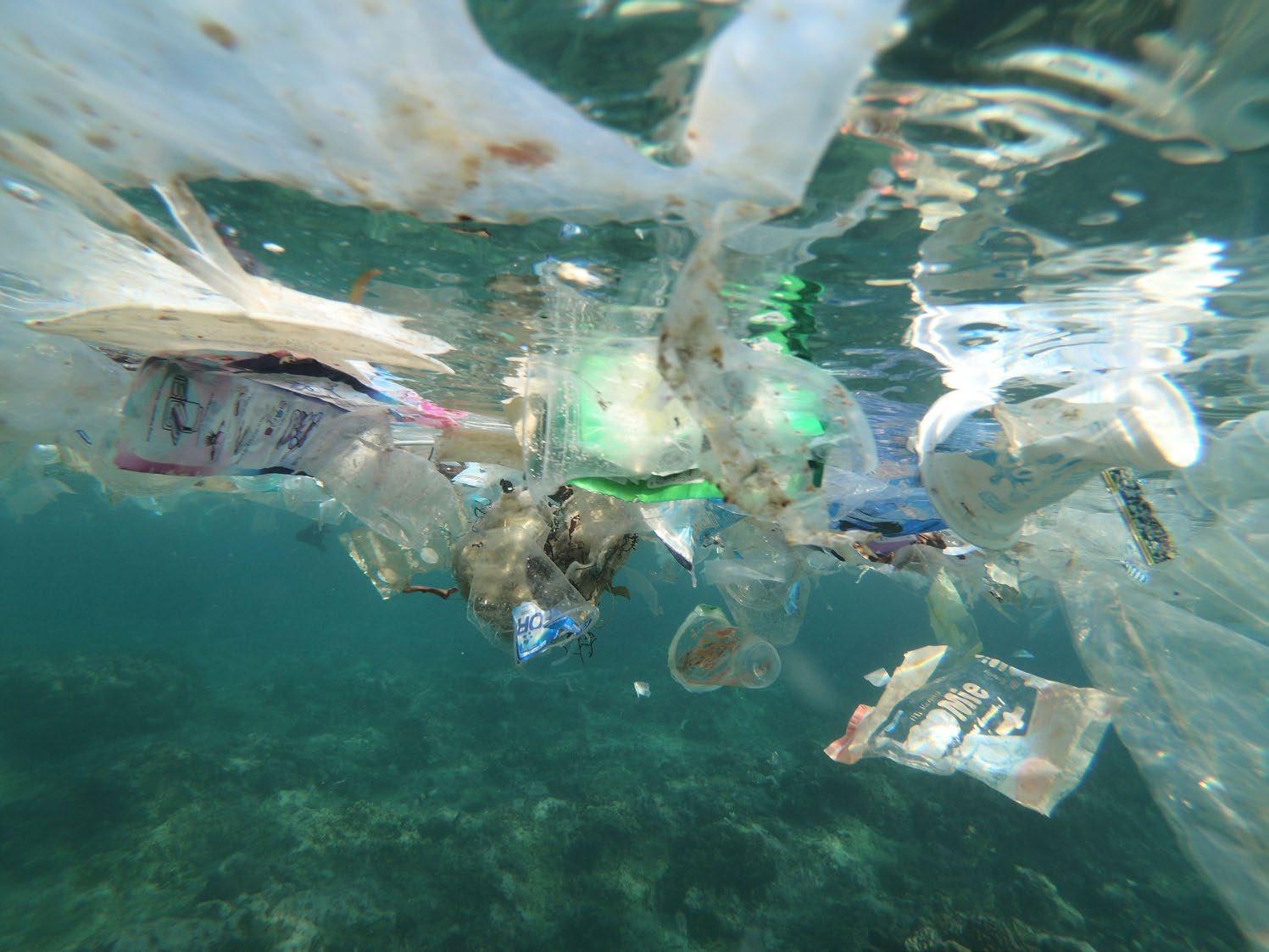
Swimming in plastic! What washes up on a beach is just a snapshot of what is floating in our oceans. The oil sample bottle which led to an AMSA investigation on ship sourced debris.
You regularly see cargo ships cutting the corner around Cape Leeuwin, Australia’s most southwestern point, and it’s an area we also find a lot of ship sourced debris. When reports started coming in from volunteers that a couple of engine oil sample bottles had washed up on local beaches, we were able to quickly send them to our contacts at AMSA, who were able to respond immediately. It helped that the oil bottle labels had not only the ship’s name, but also the date and crew members’ name clearly readable.
AMSA officers tracked down the bulk carrier “Gloria Island”, registered in Panama, still in Australian waters at Thevenard in South Australia, and boarded the ship to interview the crew. They issued an improvement notice.
Oil bottles lead to AMSA investigation – See story here.
When our volunteers and partners hear of results like these, they really start to understand the impact this data can have, and that this is not just a picking up rubbish exercise, but a data collection activity that drives solutions to what is becoming one of the biggest environmental issues on the planet.
You never really know what you are going to find during beach clean-ups, but particularly those that are a bit more difficult to get to can turn up some surprises.

We’ve also been lucky enough to come across a couple of much prized glass floats. Historically used by the commercial fishing fleets in Norway from the 1840s and Japan from 1910 to replace wooden floats that end up getting waterlogged and sink. Glass floats got changed to plastic in the early 1970s, so finding one that is still intact is pretty cool, as you normally only find them in pieces after being smashed up against rocks. The “button” on the top of glass floats has a mark on it that identifies the glassblower, and some are much rarer and now worth a few more dollars than others.
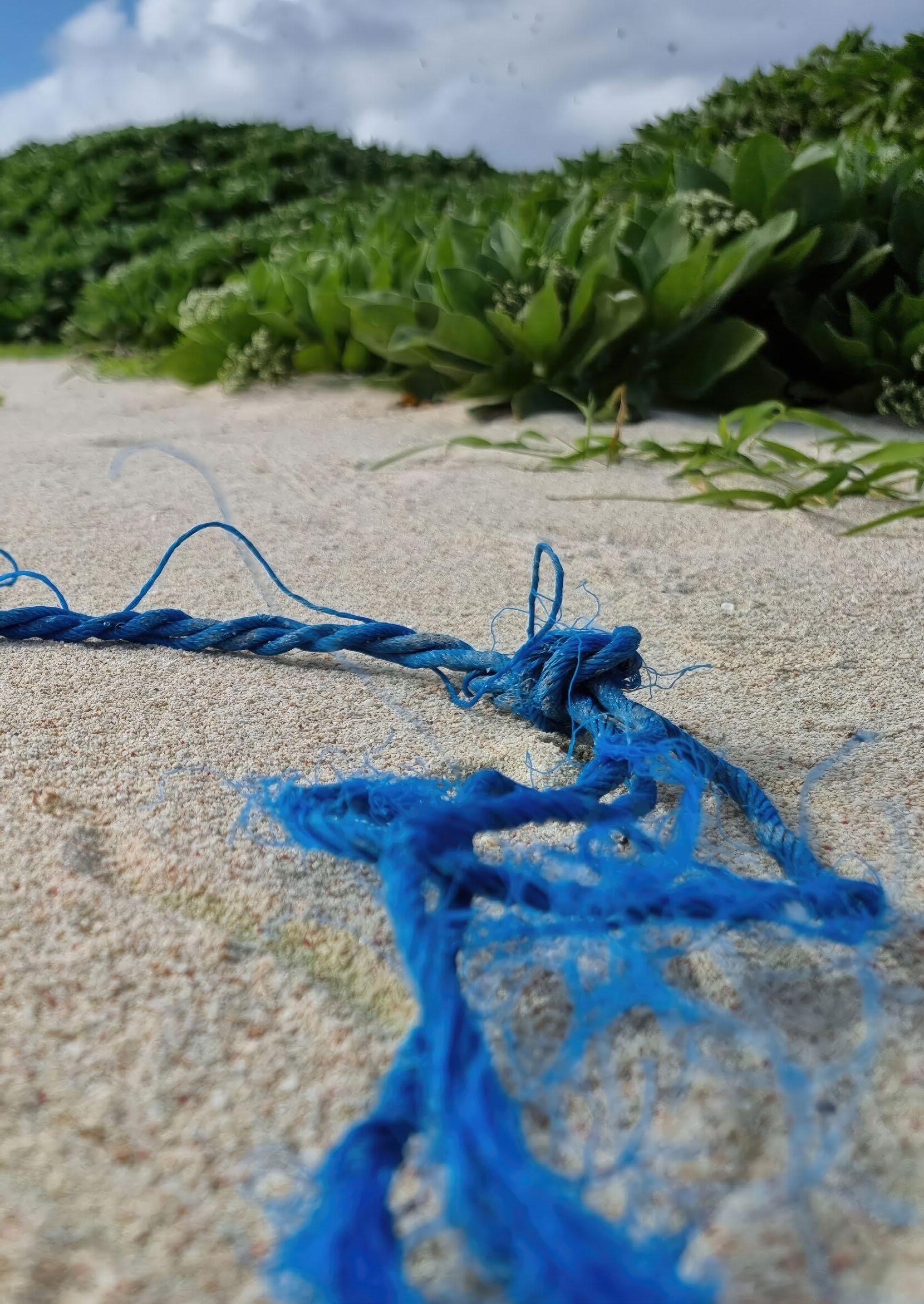

It’s not all bad - sometimes we find a treasure!


I would never have been able to imagine what Tangaroa Blue would grow to become back in 2004, but it is because of the efforts of our staff, volunteers and partners who are all committed to the philosophy of giving back to our oceans.
Tangaroa is the Maori and Polynesian god of the ocean who made laws to protect the ocean and its sea creatures. “Tiaki mai i ahau, maku ano koe e tiaki”… If you look after me, then I will look after you…”. Seems like a pretty good philosophy to follow if you love being in, on or under the water.
If you’d like to join the AMDI, volunteer for Tangaroa Blue clean-ups, contribute data to the AMDI Database through our data collection app, or work with us on source reduction projects, reach out to us on our website or socials. We’ve got a lot of celebrating to do this year for our 20th anniversary, so get involved and join in the adventure!
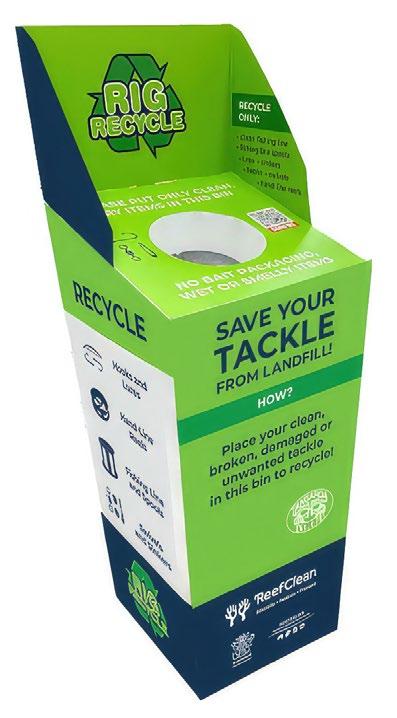



RECOVERING | REUSING | REPAIRING | RECYCLING | REDUCING Rig Recycle bins are located across our partner tackle store network in QLD, NSW and VIC. Seelocationshere .
For more information or to get involved, simply tap one of the icons below.

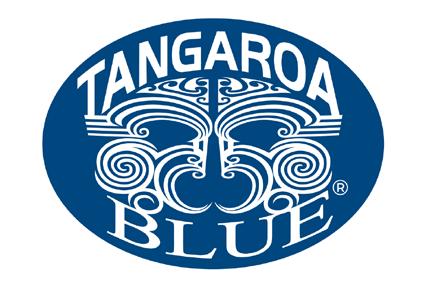
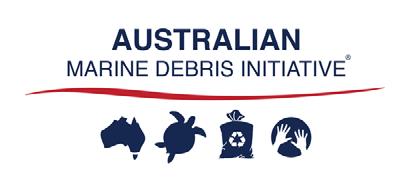



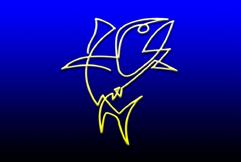
THINKING OUTSIDE OF THE BOX (ESKY), WILL ALLOW YOU TO MAKE THE MOST OF YOUR CATCH AND THE TUNA CHAMPIONS TELL YOU WHY.
When considering how many fish you could keep, it is important to remember that tuna will have a yield of approximately 60%. Using this simple maths, if you catch a 20kg ‘schoolie’ you can expect 12kgs of meat! If you have a plan and the tools to care for this fish, it can keep bellies full for weeks, or even months.
When we think ‘tuna’, two popular dishes spring to mind, sashimi and canned. Traditionally, it has been something you either enjoy at a restaurant, or you’ve thrown a can in your bag because you didn’t have time to make lunch. With the abundance of some Tuna species increasing, such as Southern Bluefin Tuna, recreational fishers now have access to this delicious protein more regularly. When cared for, tuna is an incredibly versatile meat and can often be utilised in ways that didn’t even cross our minds.
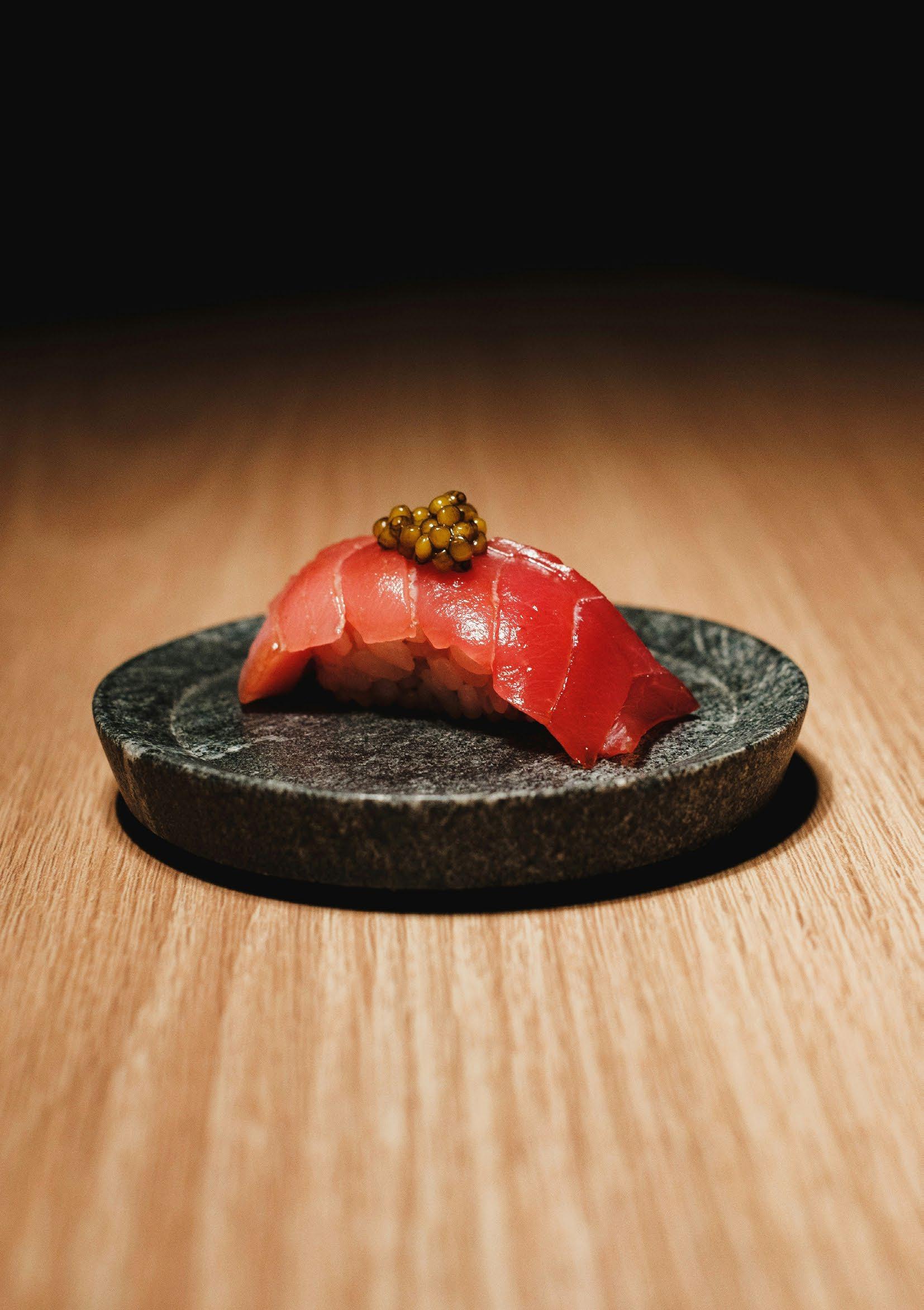
As fishers, our first thought is to come home and clean the boat, grab a drink and fillet fish (on the proviso you actually caught some, wink wink). However, if you read the Spooled Summer edition, you know that ideally your tuna should be left on ice for 48 hours before filleting, in order to get that quality restaurant finish. This time can be used to consider how you want to utilise the fish and the tools you need to effectively do so.
Firstly, consider how many people you will be feeding and how much fresh sashimi is too much. Having this planning in place will also assist your process of breaking the fish down. For example, if you’re making tuna steaks you may want a thicker fillet, or certain types of cuts, such as the shoulder, or the belly.

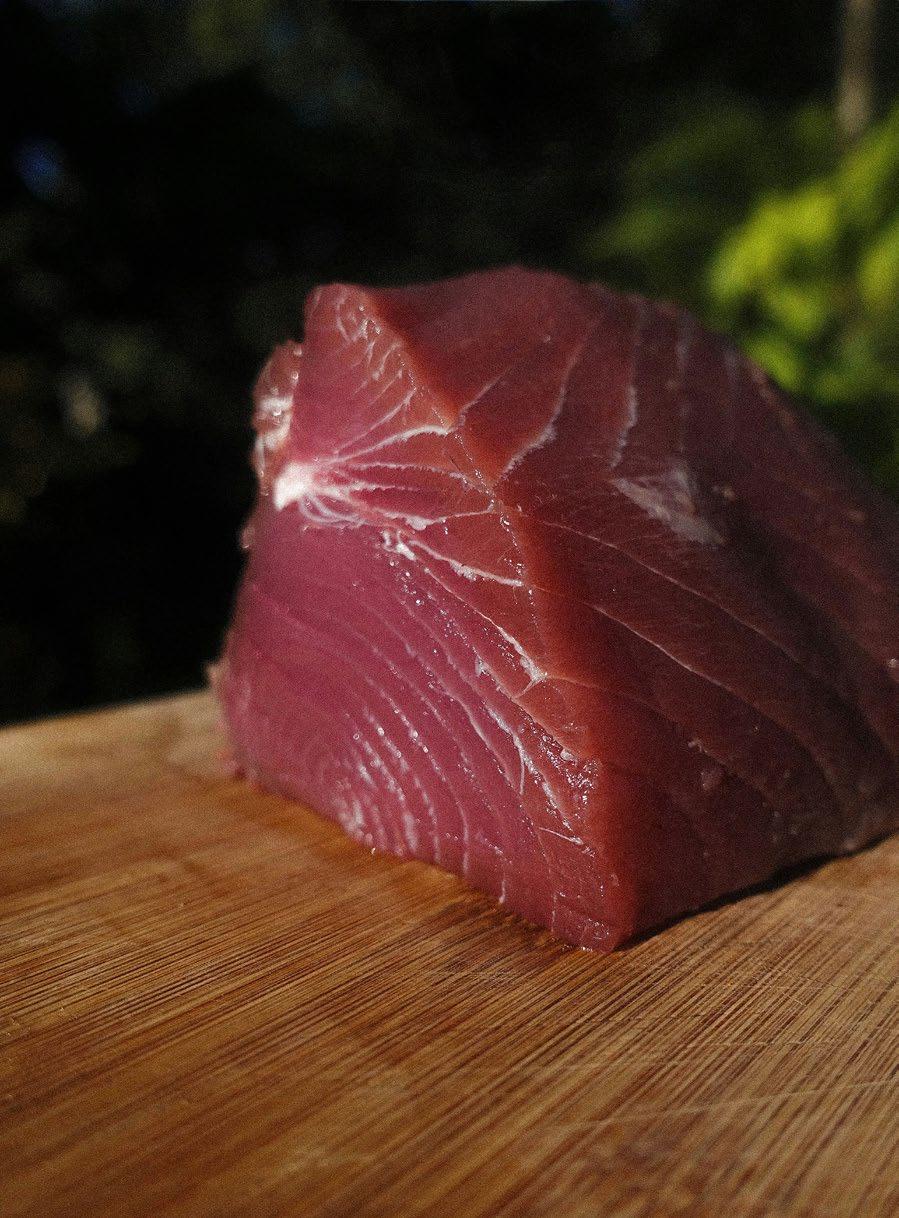

I’m not going to tell you how to serve your fresh sashimi, as we each have our secret dipping sauce or ingredient. But I will tell you, making sure you have followed the ike jime process will minimise any rich flavours, stress to the meat and risk of foodborne illnesses when serving raw fish. This is also relevant when jarring tuna, as it is absolutely critical that all the tools, jars or cans being used are sterilised to prevent bacterial spoilage.
There are plenty of recipes online for preserving tuna with a raft of flavour options, providing you with both variety and longevity. It doesn’t stop there, because of the storage method it can make a great gift for family and friends, who can enjoy your catch well beyond the day of your fishing trip.
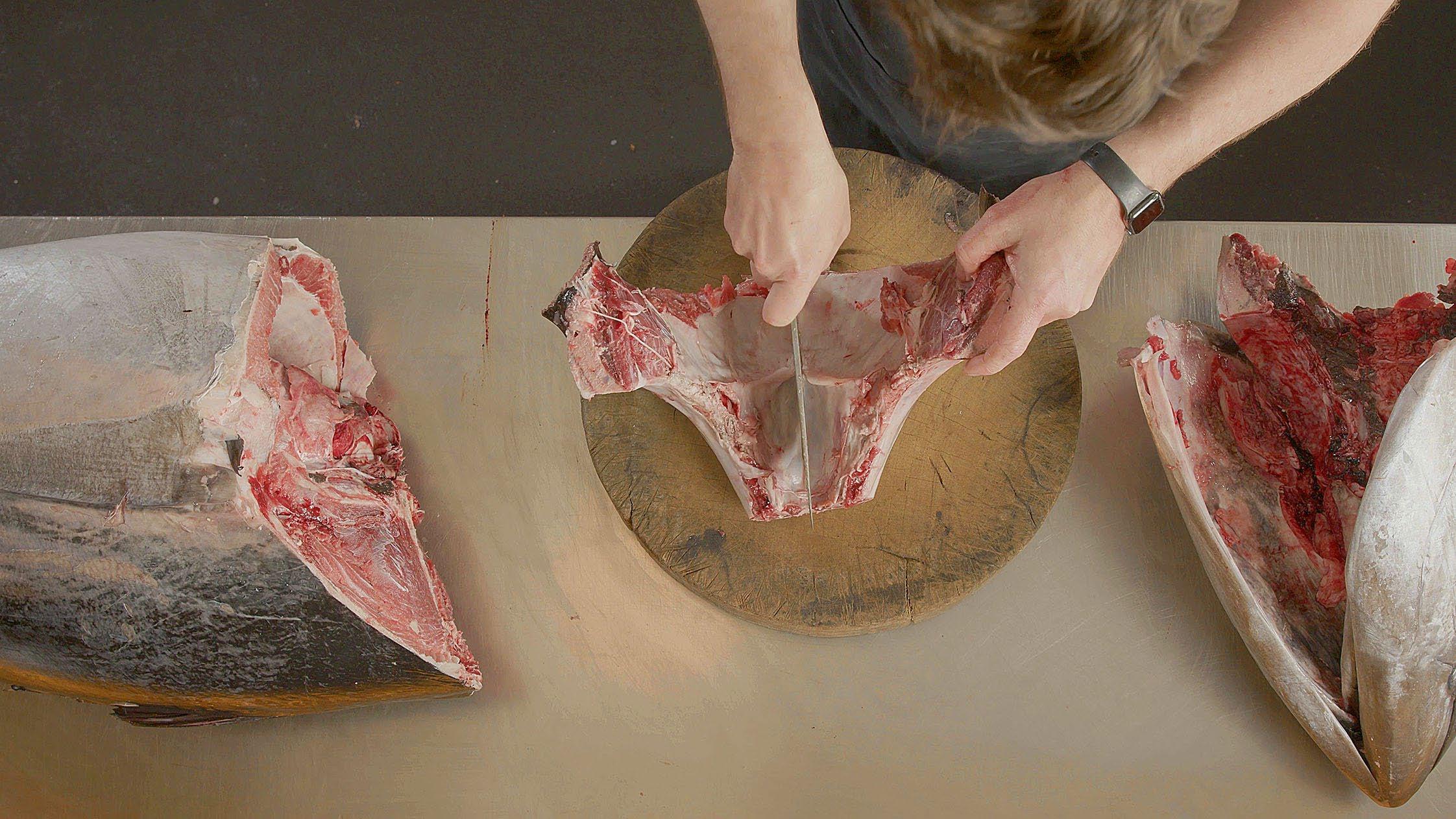
So now we’ve spoken about the more popular ways to utilise fish. What about some of the lesser-known byproducts of tuna? A tuna’s head is incredibly flavoursome and can be used for a variety of soups, sauces and ponzu dressings. More importantly, don’t forget the cheek and eye meat, as it is arguably one of the best cuts that’s often forgotten about. Using a spoon, excess meat can be scraped from the frame of the fish and this soft, tender meat will make one of the best poke bowls you’ve eaten.



If the fish has been broken down well, you should be left with a frame, skin, and the shell of a head. Before you begin bagging and binning, there are a few ways you can utilise these ‘left overs’ that will make some people happy, including your little four-legged friend.
A tuna’s skin makes a great dog treat when cooked. Not only do dogs love tuna skin, but it is great for their health and has a high nutritional value. Just when you’re thinking, what more could you possibly do with these fish? We have one more trick up our sleeve. Have a garden? Well, these frames make great fertiliser for your plants. Breaking the frames down into small pieces and spreading it around the vegetation will provide additional nutrients for your plants.
These are just some of the ways you can make the most of your catch. Although the yield of meat is 60%, there is no reason why we cannot utilise 100% of the fish. Be prepared and take care of this beautiful tasting protein and you will reap the benefits, as well as your dog, family and friends and your garden.


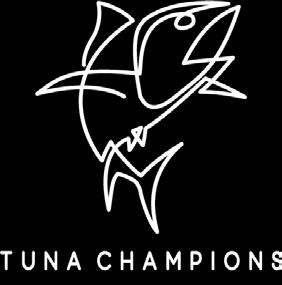



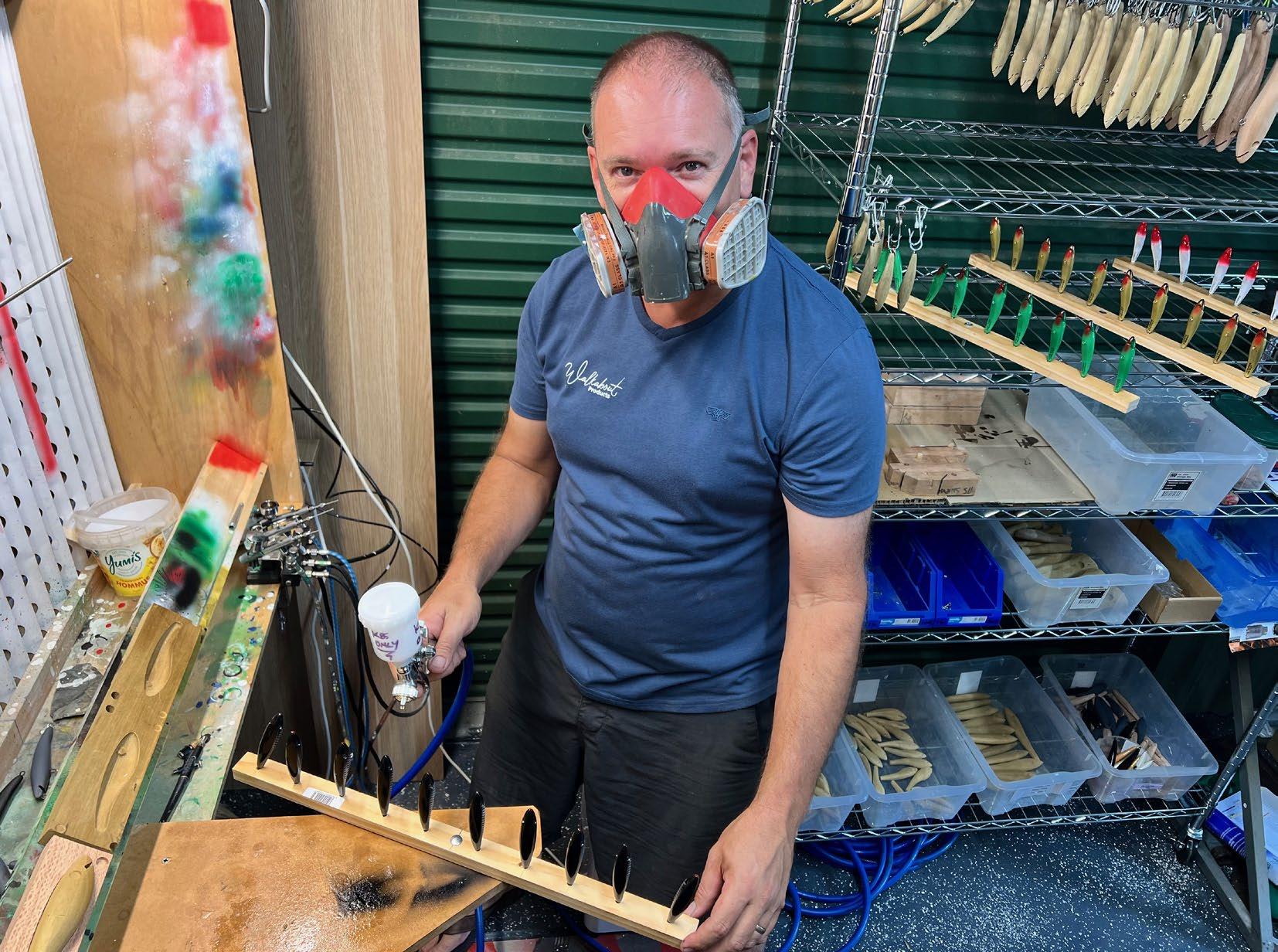

The team from Spooled ventured to Townsville, QLD to catch up with Walkabout Products founder Glenn Buttler, a sales rep for an Australian cutting tool brand, who has turned his hand to timber lure making.
Spooled Magazine: Hi Glenn, thanks for taking the time to have a chat today. Now I believe you’re an ex West Melbourne lad, so when, where and with who did you start fishing, and can you remember your very first fish and what you caught it on?
Glenn Buttler: Yeah, no problem guys, welcome to Townsville. So, yes, I grew up in Altona, in the western suburbs of Melbourne. Dad had a tinny, but didn’t fish, but it’s all my brother and I wanted to do. I was about 10 and my brother about 13 and we would get up early to push the tinny 2km down the road to the Altona boat ramp and fished Port Phillip Bay. We’d pull in snapper, whiting, flathead and squid all on bait. If we weren’t fishing, we were making fishing rods or camping on the mud flats of Point Cook to go floundering. School holidays were spent on the Murray catching cod and yellowbelly or on the Goulbourn River catching trout. Some of the most enjoyable days of my life.

My first big fish was at 19 when I caught a 102kg Striped Marlin off Bermagui on a live slimy mackerel. Unfortunately, its tail wrapped itself in the line and drowned, so we used it to feed everyone in the tournament. I had the head mounted which is in my workshop today.

SM: Do you get much chance to fish these days and, if so, what are your favourite targets?
GB: Part of the move to North Queensland was to spend more time on the water, but even a full day fishing isn’t enough fishing! When I do get out, I like to head over to Crocodile Creek, or about 90 minutes up the road is Hinchinbrook, which is just a magnificent place to fish.
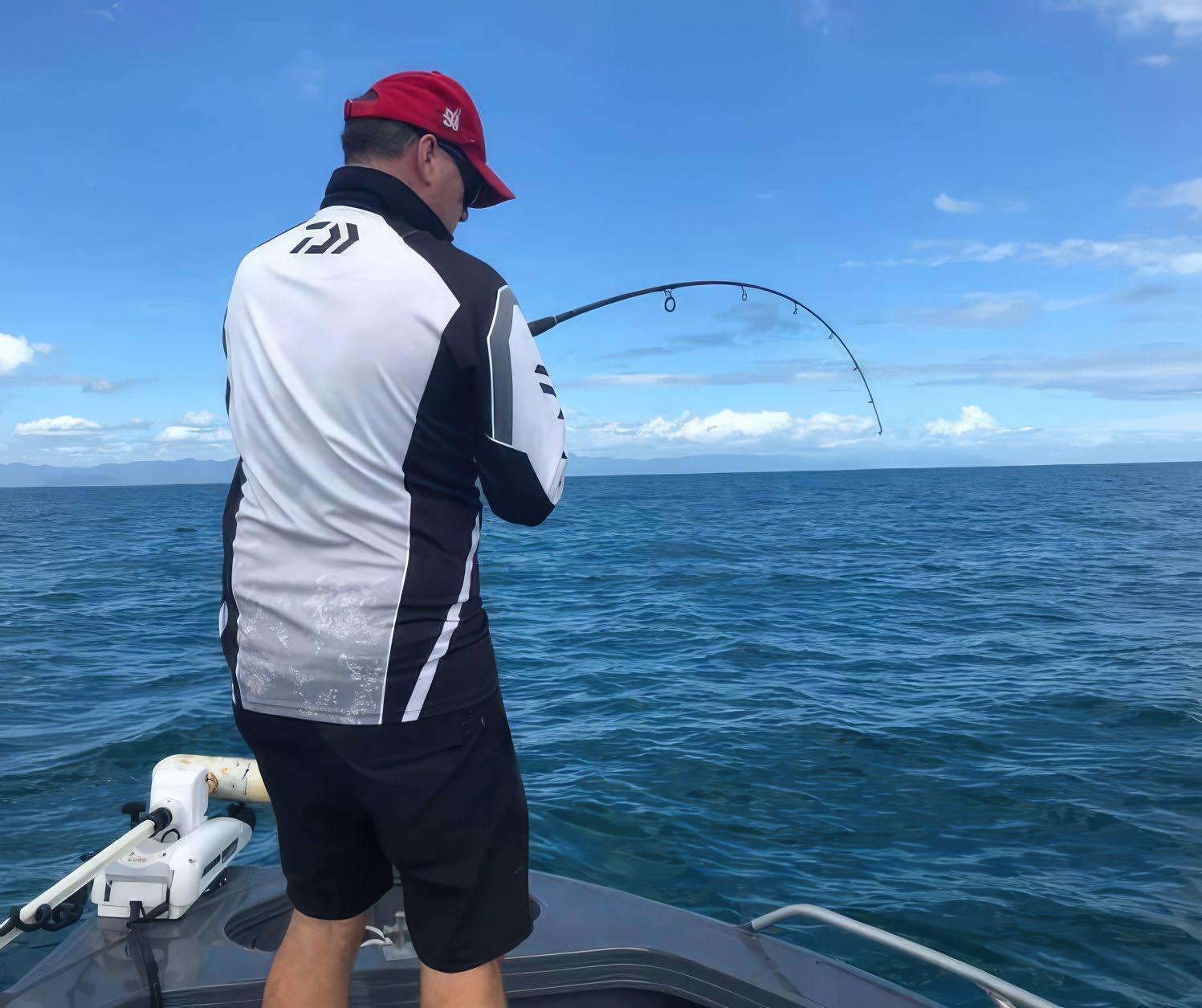
Since moving to Townsville, Glenn loves that this is his backyard.
SM: What about lure making? How and when did that begin for you, and what inspired you to start doing it?
GB: I got into making lures about two years ago. Then bought a CNC router with the aim of making moulds for plastic lures. I started mucking around, learning to draw and use the machine and thought I’d see if I could make a timber lure. I’d fished with timber before and really liked the action timber gives.

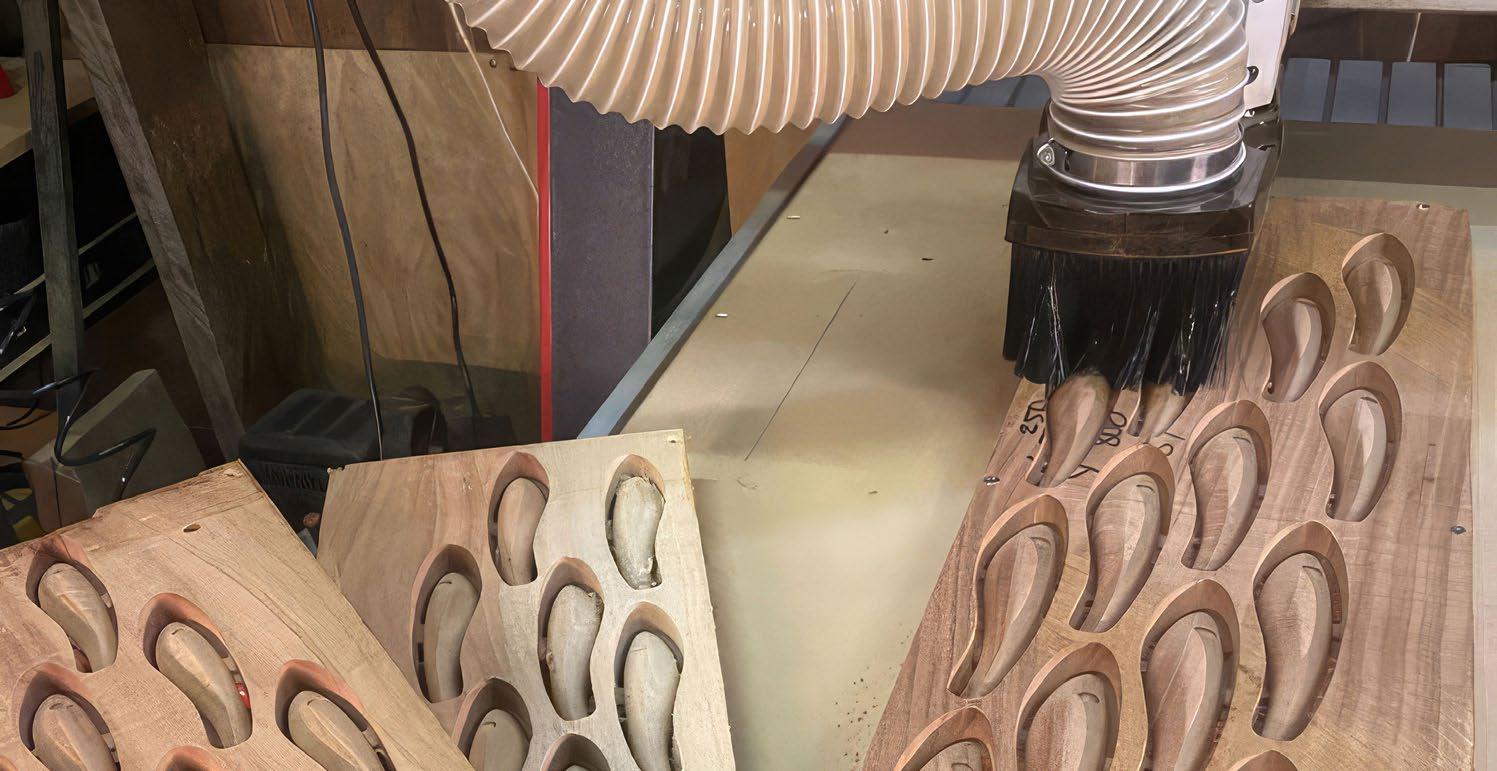
Once I started designing and making timber, the idea of plastic moulds died. I really wasn’t keen on the idea of contributing to more plastic in the ocean anyway, and with the heat up here, plastic melts in the tackle box.

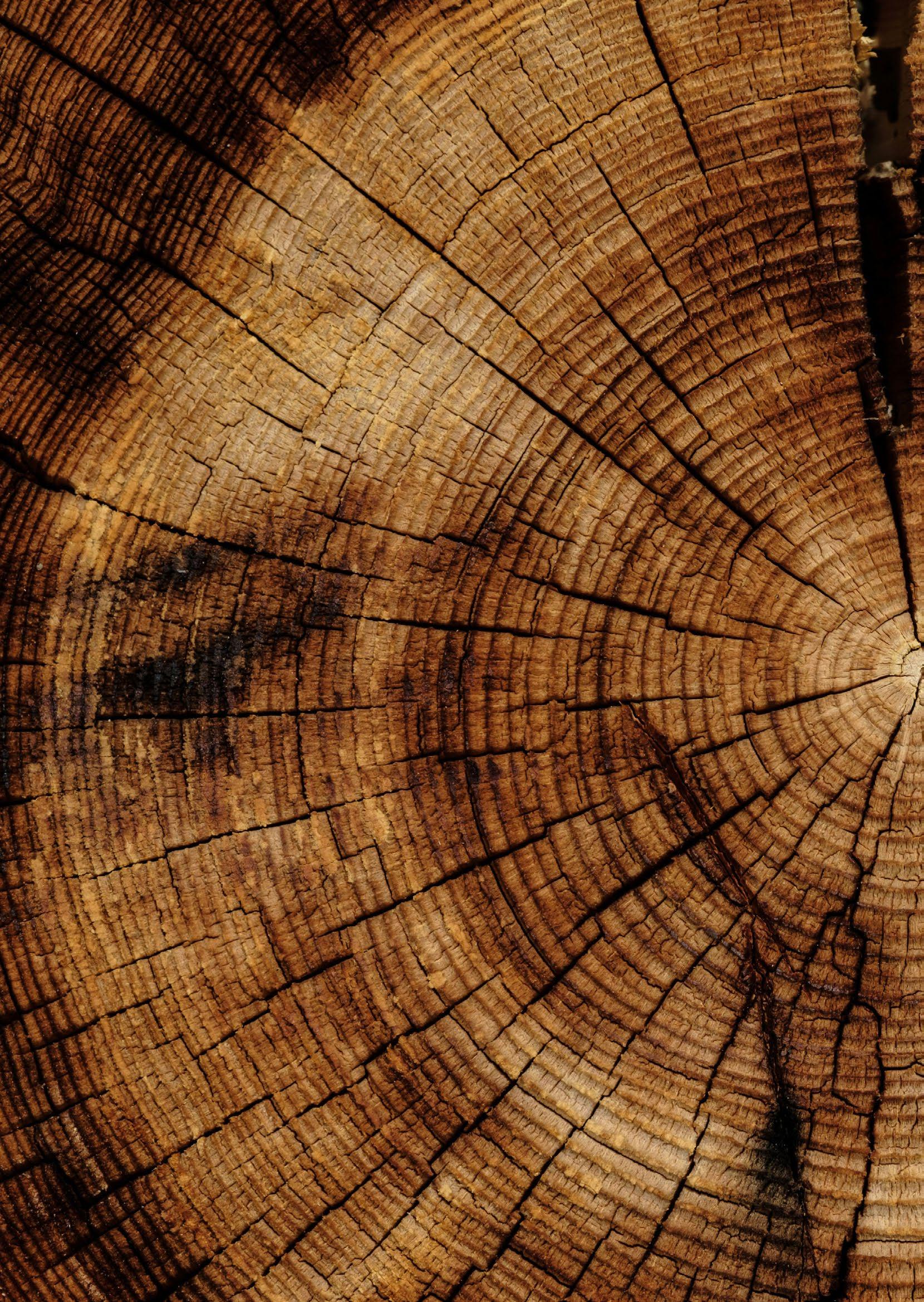
After designing and getting my first timber lure to move the way I liked, I decided that I wanted to make lures that I want to fish with, which is exactly what I’m doing now–creating lures that I want. That includes using quality BKK hooks and split rings. And it’s awesome that other people like what I’m making.

“Because I hate having to change out hooks and split rings when I purchase a lure, I only use the best quality products on Walkabout Products lures.”
SM: When and how did it turn from a hobby or interest into something more?
GB: When I started getting feedback and people wanting to buy them, I realised this was going to be more than a hobby, but we are still very much in the early stages of the business.
SM: So how did the name Walkabout Products for your lures come about?
GB: My wife and I were travelling back from visiting our daughter, who was living in the UK at the time, and we were delayed for about 12 hours in Singapore. Yeah, so we had a bit of time to kill <laughing>. So, we perched ourselves at a bar and brainstormed ideas for the business name. We wanted something that
goes with the Australian culture, represented the outdoors, you know, that type of thing. And it also had to be available! That was probably the hardest bit–finding a name is easy, but getting the domain name is a different story.
We actually couldn’t believe that Walkabout Products was available and we think it’s a perfect fit.
SM: Why timber lures? Can you see room in your life for making lures from other materials?
GB: With a plastic lure, it’s buoyant all the way through and you have to add weights in certain areas to get them to sit right. With timber, you can shape it and machine it to put those weights and buoyancy in the right spot. I think, you get a much better action. What I’ve learned is that different timbers have different actions, buoyancy and act differently in the water.

The final product when full assembled.

They’re also super strong. In one of the first tests I hung 15kg of weight from the bib. It hung there for a couple of days and wasn’t compromised. I’ve had lures come in with teeth marks, but I’ve never had one bitten in half.
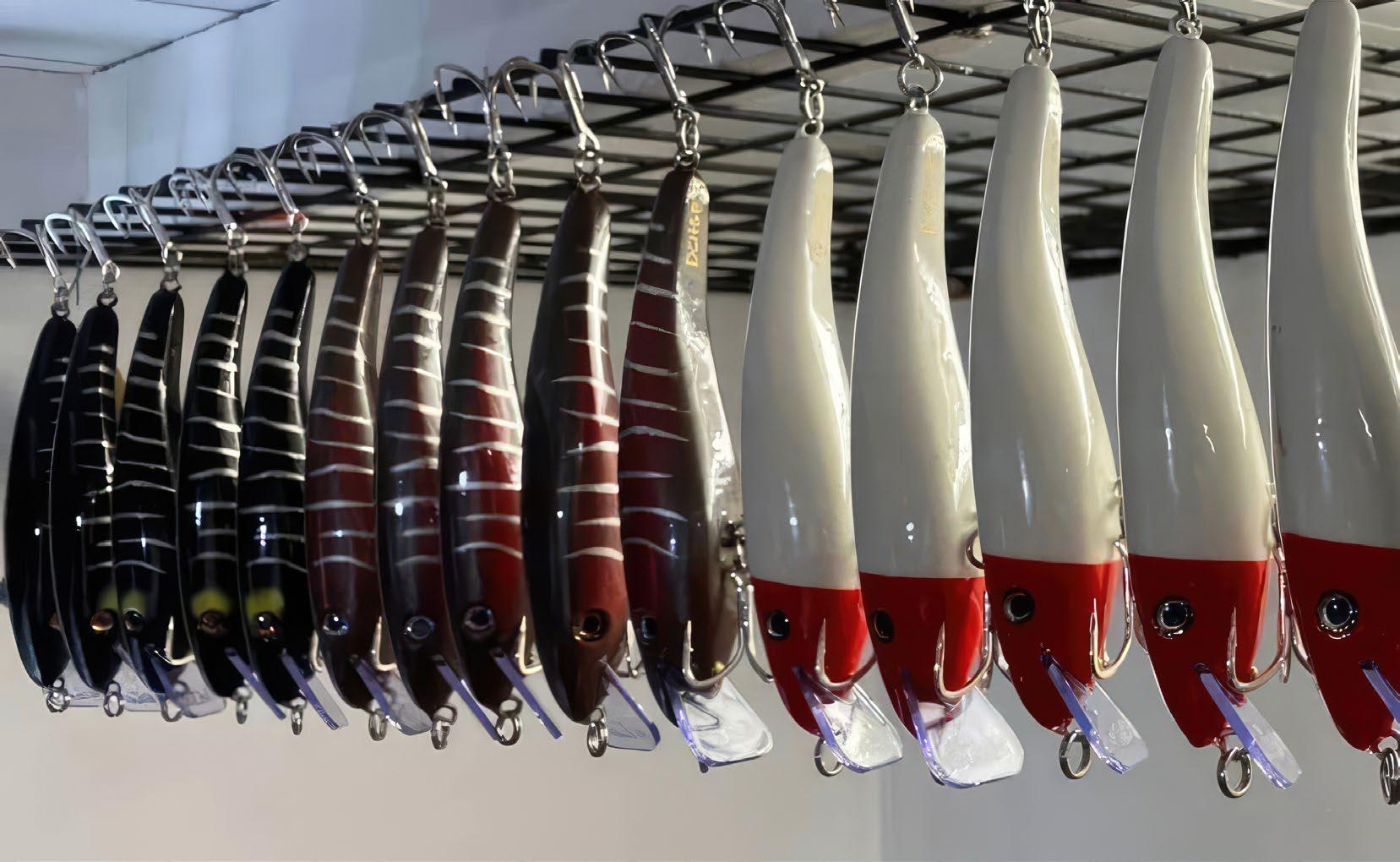
They also don’t warp or melt in the sun. Especially in the heat up here. To test the coating, I drive around with a couple sitting on my dash and they hold up. I may also pull off the road and throw one in the water on my travels just to be sure.
Finally, they are sustainable and environmentally friendly, which is important to me when fishing up here on the reef.
I’ve fallen in love with timber and can’t imagine working with any other material.
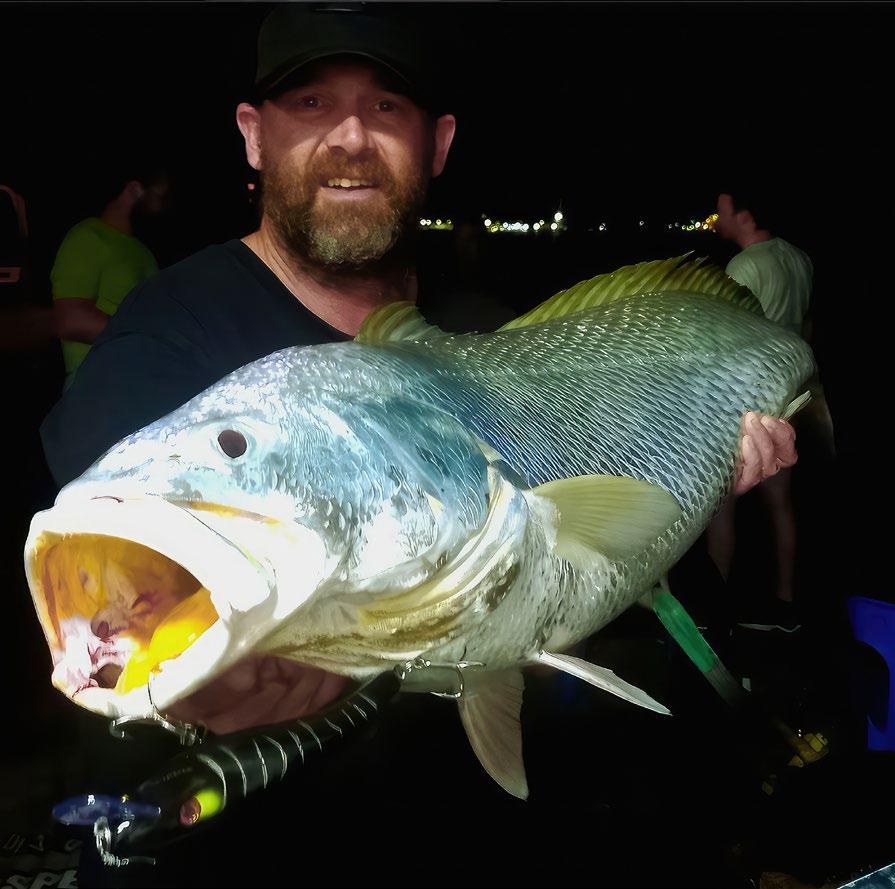
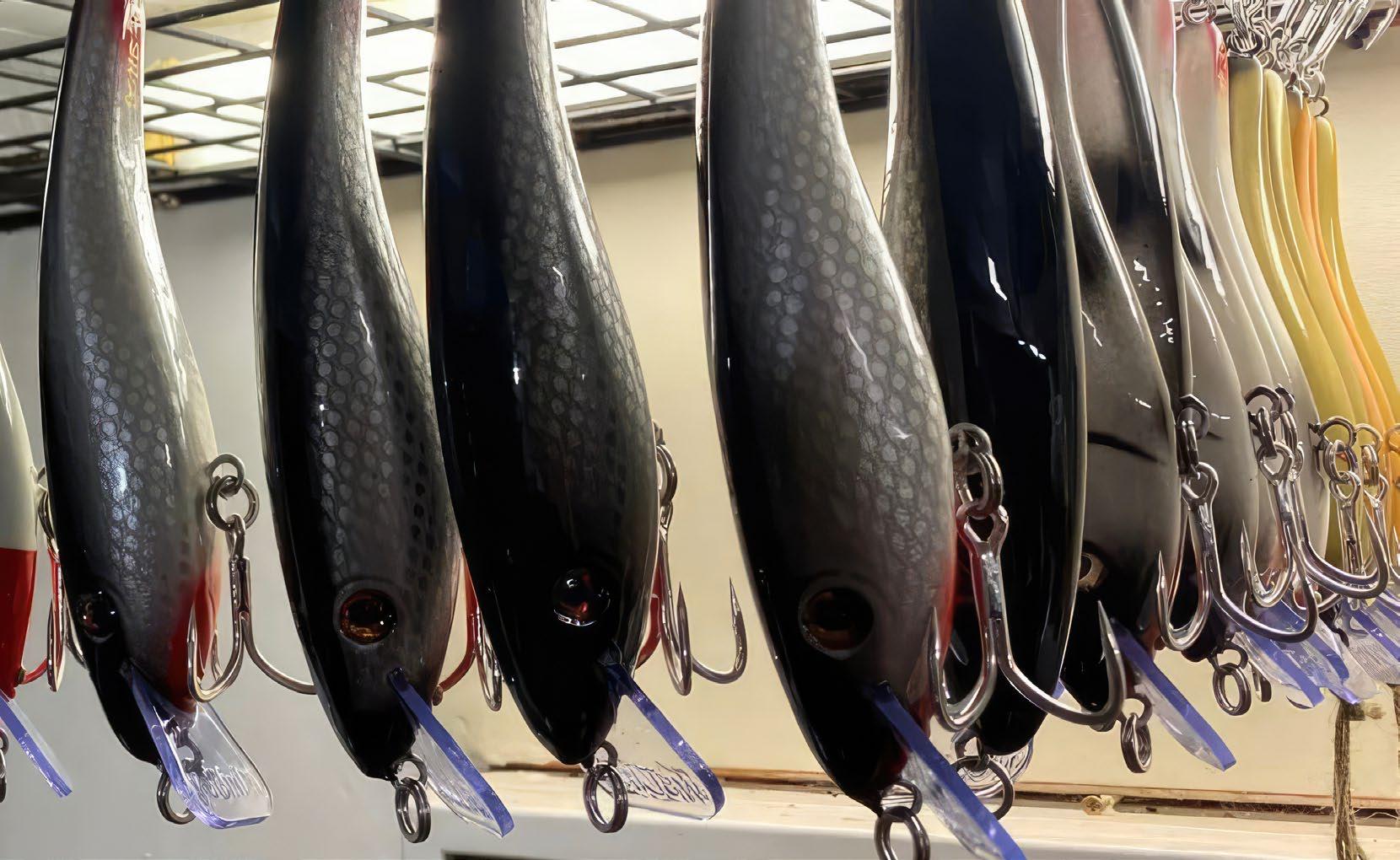
SM: What would you say are some of your proudest achievements in lure making?
GB: Proudest achievements? Getting the first one off the machine because learning the software was a nightmare <laughing>. Yeah, getting that first completed lure off the machine and then getting it to swim right, that was a massive achievement. No one will understand that until they try it.
Then getting photos of people catching fish on them as well as us catching fish, it’s just so cool knowing that people are catching fish with something that I’ve created, designed and developed.

Barra caught in the NT on a Classic 100
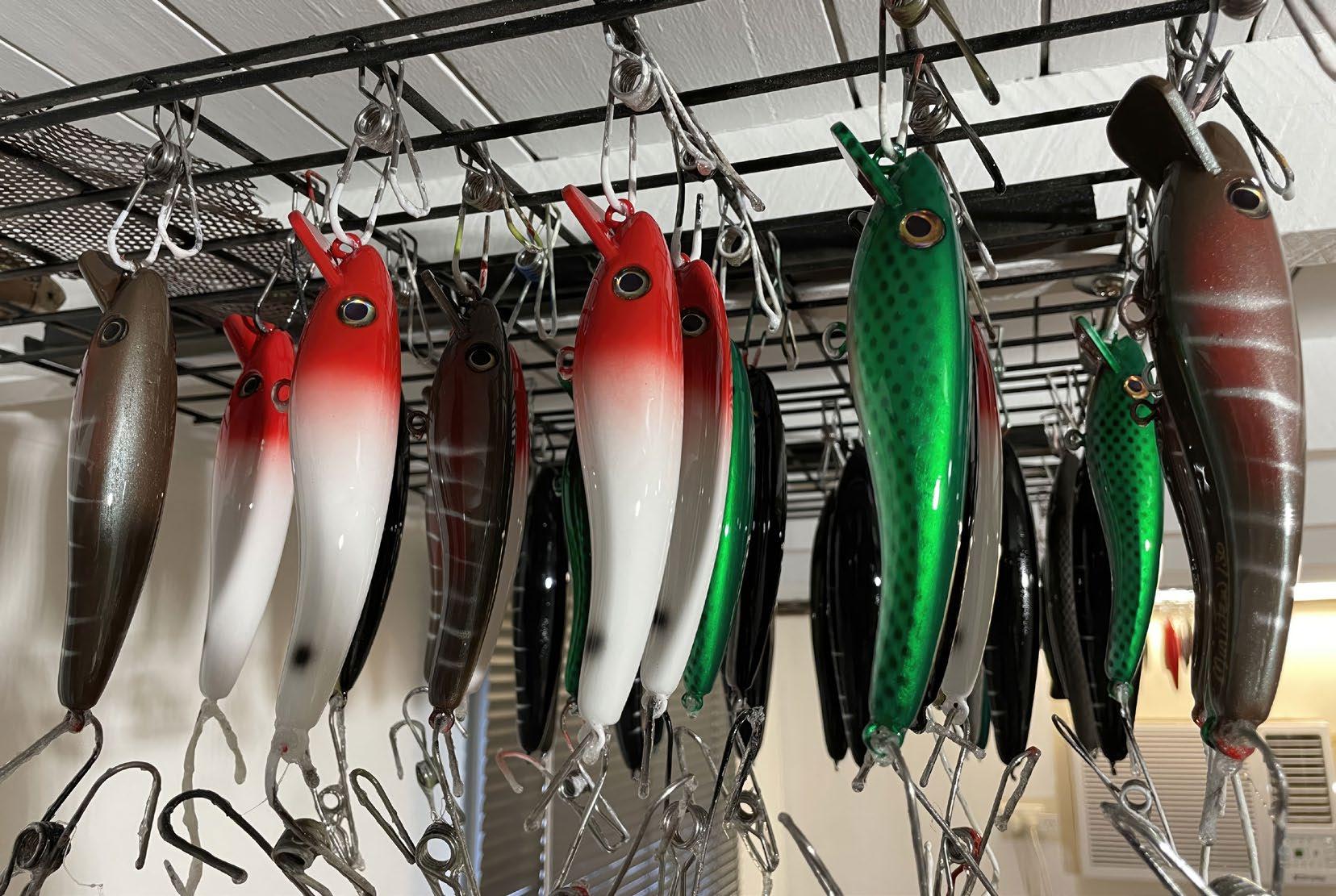
An early batch of 130 Jew lures.
SM: Who are some high-profile anglers that use your lures, and do they give you feedback?
GB: High-profile Anglers? No one. But I do have some “everyday anglers” giving me feedback, which I think is better than professionals. They like throwing a lure out the back of the boat and want to catch a fish. They’re the type of people that are great targets because the lures are doing all the work, not the fishermen.
And the feedback they’ve given me has been great. From different colours, depending on what they are chasing. I sent a couple of prototypes to a friend and they just didn’t swim, so it was back to the drawing board for that design. I’ve just got that one right now, so it will be ready to hit the market soon.
I’ve also had people tell me that they are catching different species on lures than I was expecting. For example, I designed a lure specifically for jew fish but it’s caught some really good barra up in the Territory.
And the Ripper 130 has ended up being an all-rounder. It’s caught tuna, three species of mackerel, barra, trevally; everything really. We took that one out on a charter boat and the operator was blown away. He’d never seen a hard body, let alone a timber lure swim that straight at that speed. So now I’m looking at making bigger ones of that design.
SM: Roughly how many models are there in your current lure line-up? Does this change all the time? What are a couple of your lures that you’re especially pleased with, and why?
GB: I’ve got about six lure designs in different sizes currently in the range. The aim is to triple that by the end of the year. I’ve got a lot of designs swimming around in my head, waiting to come out. The aim is to have the range complete by the end of 2024.
SM: How much work is there from getting the first flash of inspiration for a new lure style to actually getting it out there and onto the market?
GB: Countless hours! <laughing> Along with a little bit of swearing and a very patient wife. There is quite a bit of process to go through. First, it’s drawing the lure and getting the design right. Then the bib design and the angle which gets it to swim at the right depth and gives it the right action. We actually had a batch that just swam sideways. So frustrating and painstaking to get these elements right. Then it’s also the speed you want the lure to move and the right timber to give the action you want. Like the jew lures where we had three different timbers and then only one of them worked. Same design, same size, same everything, except for the timber. But you have to try these things.
There is no rule book and no one’s going to tell you these things. Which probably is what’s the hardest thing about lure making, which I think is exactly that, isn’t it? Yeah. Is it, there’s no rule book, you just have to pull it out of your head and give it a try.

Product testing the Ripper 130 on a charter where the captain couldn’t believe how straight it swam at speed.
Glenn and his very patient wife Natasha product testing the latest batch of lures.
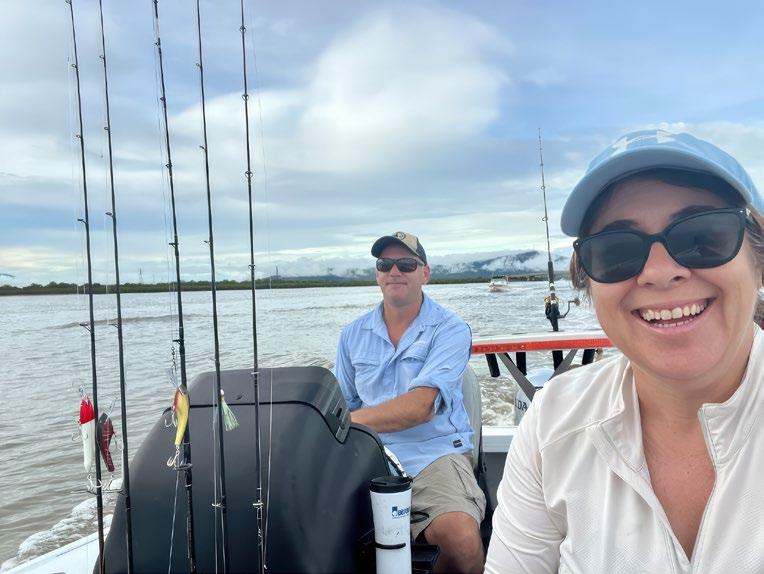
SM: Where do you see yourself in five years from now, in terms of lure making?
GB: My five-year plan is to be the biggest volume manufacturer of timber fishing lures in Australia. I want to have a sustainability path, so that includes the planting and farming of the timbers we need. Then start to look at some other markets outside of Australia.
SM: What advice would you offer to any young (or not-so-young) person out there with the dream of perhaps one day becoming a lure maker themselves?
GB: Go for it. Have a crack. If you enjoy fishing and have a design in your head, then draw it, carve it, do whatever it is you do. But just have a go. You can’t get it wrong. You’re only going to learn and nobody is going to judge you harder than yourself, so have a crack.
SM: How can people find and buy your lures? Are they in any shops or websites? Do you sell direct, and if so, how do people best contact you?
GB: You can connect with us via social media @WalkaboutProducts, online at www.walkaboutproducts.com.au and we a few independent retail stores in north Queensland at this stage.
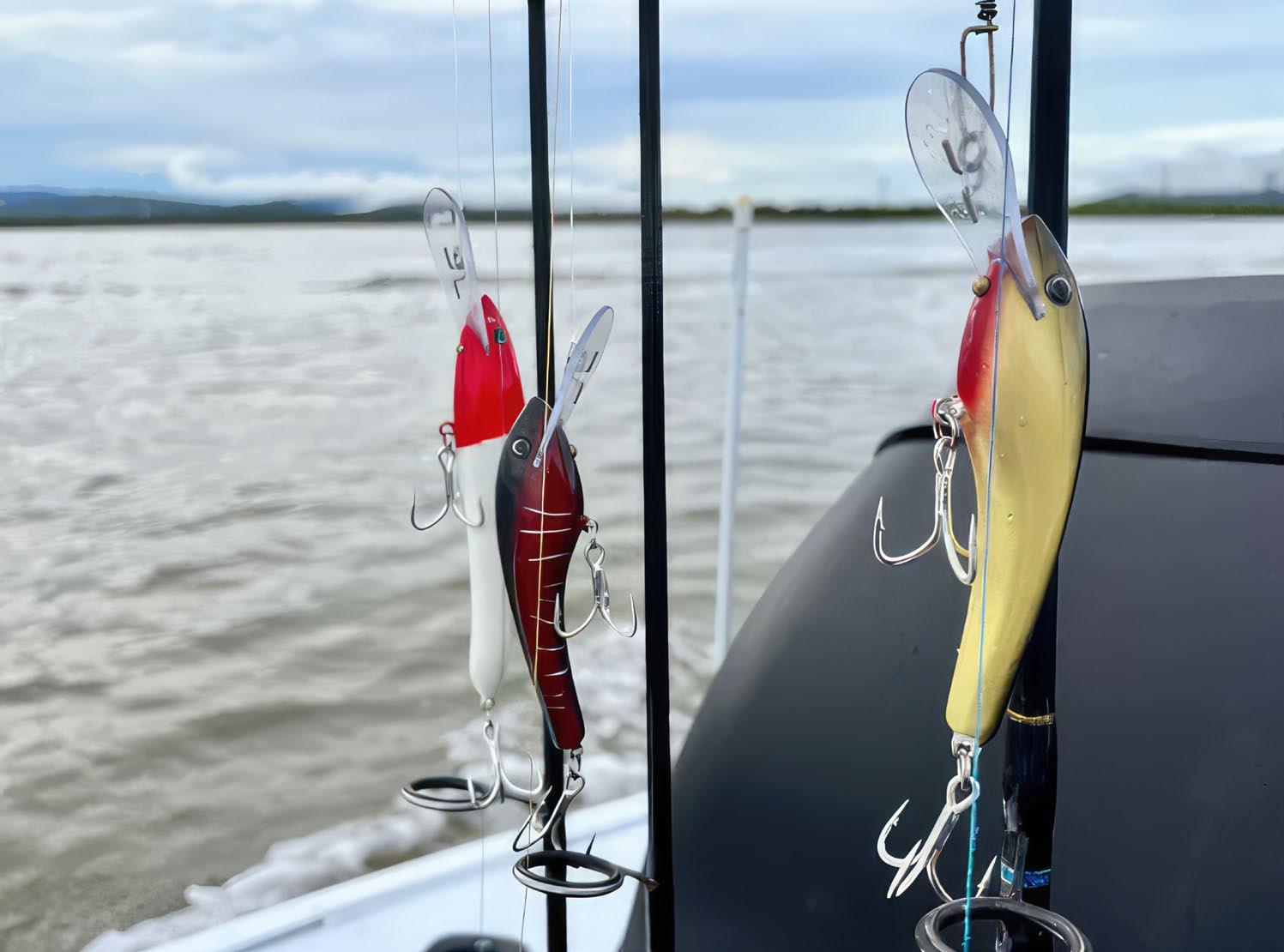
Getting ready for some product testing
SM: Finally, are there any other comments or observations you’d like to add?
GB: We are really focused on creating a fully sustainable product and the circular economy.
That includes continuing to manufacture in Australia, minimising plastics in our product and packaging and what happens to our by-products. For example, a local company uses our saw dust to create mulch.
I also want to give a HUGE thankyou to everyone who has supported us. Whether it’s following the journey as part of our social media channels or purchasing a product and providing us with feedback on what we are doing right or what needs to be changed. I really appreciate you giving us a crack.
All Walkabout Products lures are uniquely designed by founder, Glenn Buttler for how he likes to see lures move in the water. Manufactured in Townsville, North Qld, from sustainably sourced local timbers, our range consists of the following models:
Barra Bait 90
Classic 100 Popper 135
Ripper 135
Ripper 160 (this is brand new and just passed testing)
Walkabout Jew 130
Walkabout Jew 170
For more information and to see the full range of Walkabout Products, visit their shop here:

For your chance to own this set of
Walkabout Products lures, visit the Spooled comp page here:


MOST PEOPLE KNOW DAMON AS A KEEN ANGLER AND FISHING WRITER, BUT THAT IS JUST HIS SIDE GIG. THIS BRIEF INTRODUCTION IS TO GIVE YOU AN IDEA OF WHAT HE DOES TO REALLY FUND HIS FISHING TRIPS.

As a child, wildlife always fascinated me. My parents would take me to the Queen Victoria Museum in Launceston in Tasmania, where I would spend hours wandering, looking in amazement at the Wildlife Taxidermy. As a keen young angler, I always had a dream of one day mounting my own trophy fish. I also was a very keen young artist and was lucky enough to win art awards and scholarships through school and college. I used to draw fish a lot at school and in my spare time, which certainly helped me with the taxidermy side of things later.

At the age of 16, I began working part-time at Terry Charltons Sports Store, a local tackle shop. Eventually, obtaining a full-time position a few years down the line. At the same time, I started a taxidermy course at the Museum in 2000. I really enjoyed the fish taxidermy and started doing some of my fish at home. A few of my customers at the tackle store liked my work and asked if I could do their trophy fish for them. So, I started working in my little garden shed of a night to do a few fish and make a bit of extra money while working with a low income at the Tackle Shop. 10 years later I purchased my own tackle store at George Town in Tasmania. Over the next 10 years, I had to stop my fish mounts because of the time involved in running a business. In 2014, the rise of the internet sales era meant a lack of business, so I made the tough decision to close the store. Looking for a change, I took up a new occupation as a fitness instructor, which I had always been passionate about. Anyway, two years back, my son Jack caught a beautiful sea trout from the Tamar River and asked if I could do a skin mount of it for him. I had lost all my equipment over the 10 years break from taxidermy, so I had to re-purchase everything from scratch. I finally completed his sea trout and posted it up on my Facebook page. I got a huge response from friends, and many asked me to start my small fish taxidermy business back up again. I decided to do so and Tasmanian Fish Artistry was born.
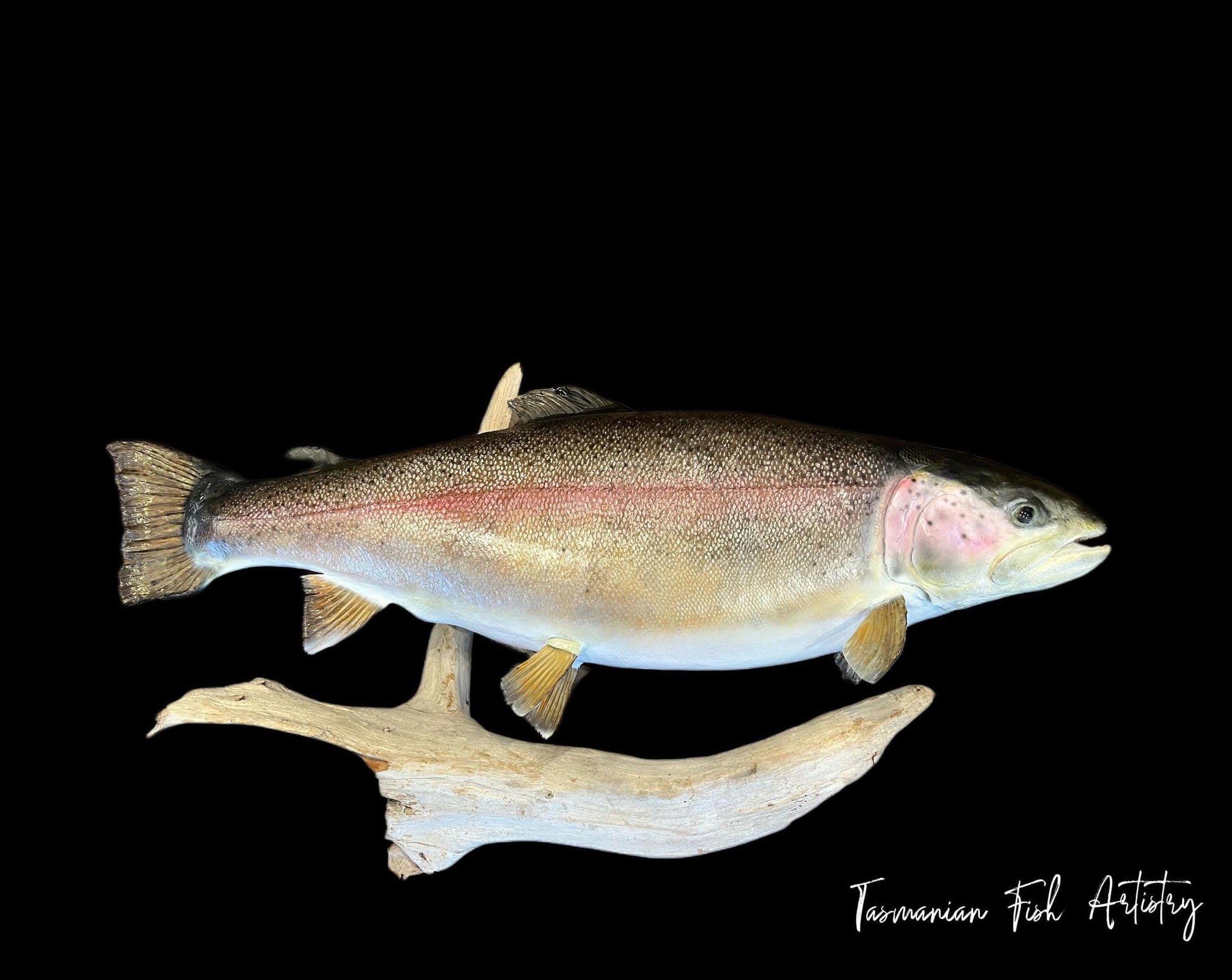
The producer of this magazine asked if I would do a small column each issue, so this is a bit of an introduction to start off. Hope you enjoy it.


Australia’s best Spinnerbait, made by anglers, for anglers!





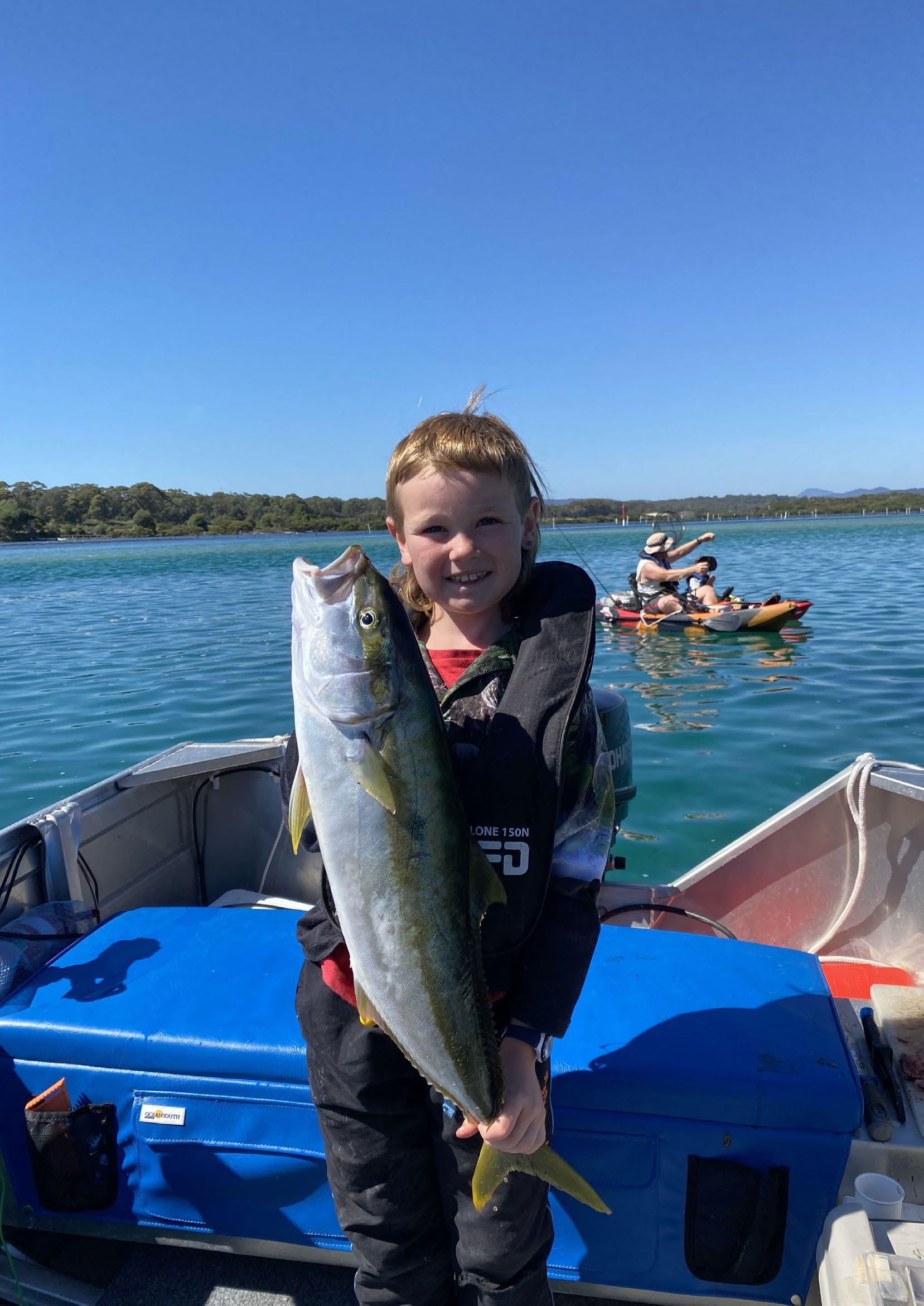

Becoming an active member of a fishing club will assist you in furthering your fishing success and opportunities. All clubs have an active syllabus where individuals can compete, or just enjoy a range of target species and varying locations.
Whilst many have simply taken to the internet to educate themselves, clubs provide a far more personal experience with hands on fellow members that for the most part are keen to share their successful, and maybe even not-so successful angling technique.
Most clubs will encourage you to enjoy a range of outings in different locations with varying target species. Some of my early Melbourne based experiences had a syllabus that included three surf, estuary, freshwater and saltwater and being bayside, included three snapper competitions each year. We also used to promote an experienced guest speaker, or club member, to give a talk/demonstration on methods for success in each location.
Clubs also provide comradery with like-minded fisho’s in both active and social experiences. With good communication you can cover a lot more ground with a group of anglers working together for common success, however they also provide some terrific social events such as presentation nights, dinners, barbeques and Christmas parties.
Fishing is a terrific activity for the kids, however they get bored easily if they don’t achieve success. Most angling clubs promote specific activities for kids to be engaged, learn, socialise and compete if so desired. It seriously makes us all better fisho’s, as well as better humans!
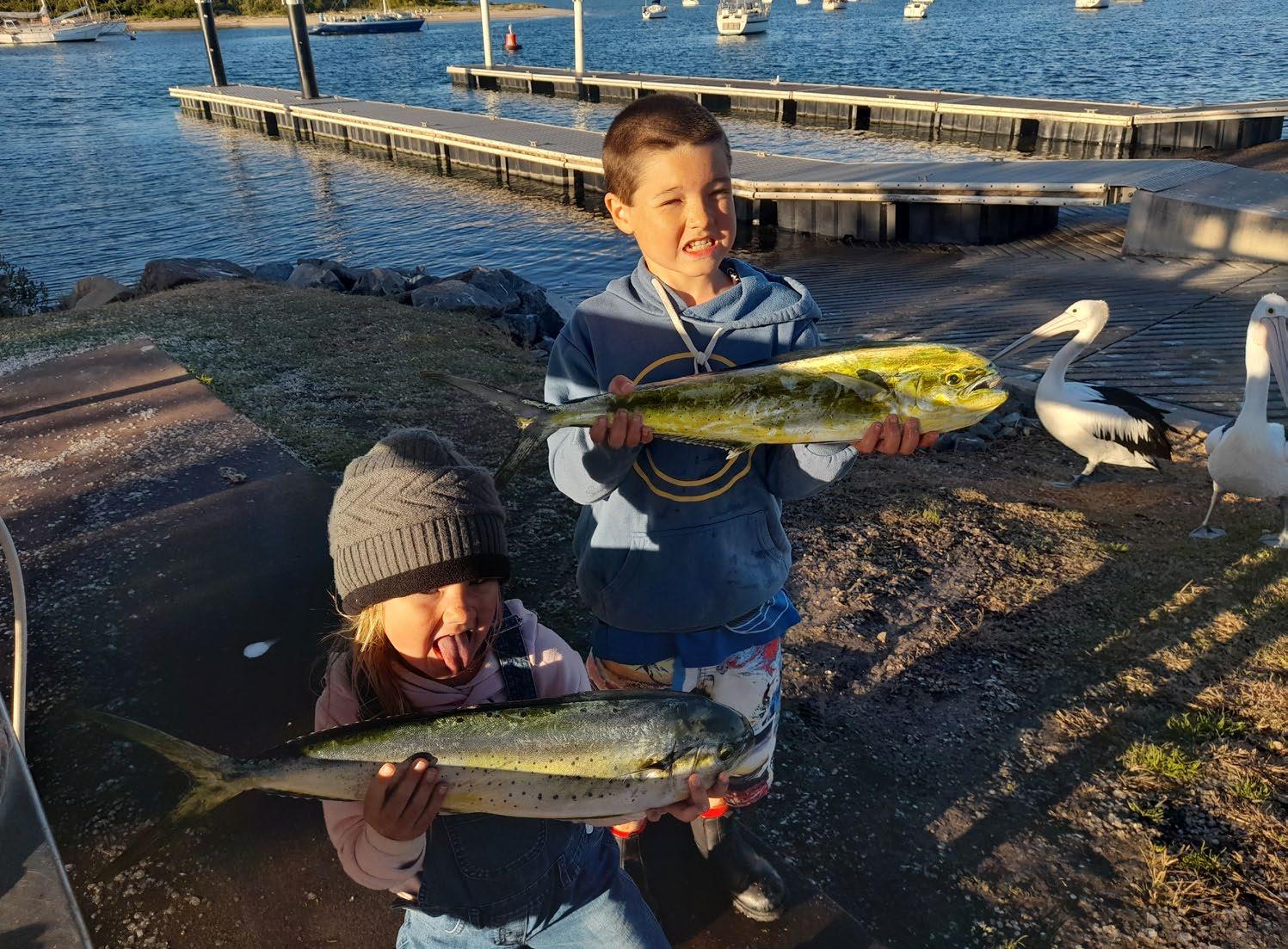
Fishing clubs offer a variety of activities to keep the little ones interested.
One such club that is bucking the trend and enjoying enormous success is the Merimbula Big Game and Lakes Angling Club. Here’s a rundown...
The Merimbula Big Game and Lakes Angling Club (MBGLAC) was formed in 1936. The same year as the Bermagui Big Game Angling Club and Zane Grey’s well documented visits to the south coast of NSW took place.
MBGLAC is a family orientated fishing club with about 200 members, including Small Fry (up to and including 10 years as of 1st July) and is active in big game, estuary, beach and bottom bouncing. We prioritise the education of our Juniors (up to and including 15 years as of 1st July) and Small Fry in the ethics of fishing/angling, sustainability and catch and release methods.
The MBGLAC was and still is a broad church of fishers, juniors, families, males and females, all chasing the wide diversity of fish available to the club in its local waters. The club members actively seek annual trophies for varied species such as local bream, flathead, marlin, shark, and tuna. These fish are attracted to the club’s waters thanks to the great East Australian Current.
A successful club will offer a wide range of diversity and education for members of all ages and abilities.



Since inception, the competitive aspects of fishing occupy the minds of its administration. For the game fisher, this is made a little easier by relying on the rules and regulations laid down by the Australian Game Fishing Association. For the bottom bouncing members, practices and rules are ever evolving, as administrators seek heightened levels of conservation through catch and release.
The club now actively promotes catch and release for all species, both game fishing and bottom bouncing, utilising game fishing tag and release and brag mat photographs prior to release. Whilst trophy fish can form part of a bag, most members now choose to catch and release all bar their immediate needs. The eligible species list for as catch and release not only includes game species but also a variety of estuarine targets such as bream, dusky flathead and estuary perch.
During the year, MBGLAC conducts a number of major fishing events. The Merimbula March Marlin, The Open Yellowfin & Southern Bluefin Tuna and Broardbill game fishing tournament in June, the Gala Fishing Weekend and annual “Monster Fresh Fish” auction, the Tri-Estuary Challenge, the Dusky Challenge and the Snapper Classic.
Dates and details of these are listed on the MBGLAC website and can be found here.
The Club has always had a strong focus on its community. Both the residents of the area and, equally important, the club actively promote visitors to enjoy the facilities and the club’s hospitality. On any Friday night over the Xmas and Easter holiday periods, the club is abuzz with regular and new visitors looking for a magnificent sunset on the balcony, and enjoying a coldie whilst receiving generous fishing tips of how, where, and when to chase their quarry.
MBGLAC is affiliated with the Game Fishing Association of Australia (GFAA) which boasts being the longest established national fishing association in the world. It has been and remains, a model and example for game fishing associations around the world. As such, the GFAA is affiliated with the International Game Fish Association (lGFA) and plays an active part in the leadership of the sport of game fishing on a world level.
This allows our members the ability to fish under a well-formed structure and set of rules with eligibility for Club, State, National and International records.
The club’s contribution includes work over many years to provide sustainable facilities for the use of the entire community. Facilities include our waterside clubrooms, built by members during the 1980s in Spencer Park, and the fish cleaning pontoon located at the entrance to Merimbula Lake for the use of all anglers. We have constructed a new floating pontoon replacing the club’s wooden jetty structure that was originally built by members during the 1960s. Our Clubrooms also now house our local Marine Rescue operation.
Environmental initiatives undertaken include lobbying for the installation of our offshore artificial reef in 2018 and obtaining a grant to undertake work to cull urchins and improve the environment around the iconic Merimbula Warf for the benefit of all who use this facility.
Located in our Clubrooms is the “Lakeview Hotel Trophy Board” listing all the fish for the Club’s fishing year being 1st June to 31st May that have been “measured” on a DPI brag mat, the length photographed from tip of head to tip of tail, exactly as fish lengths are measured to suit DPI fish length rules. By checking the Lakeview Trophy board on this website, you can see how your fish compare to those submitted by other members. From this board also, the annual club trophies are determined.
Maree Walker receiving the Tom Roche Trophy for GFAA National Junior Tournament State Champion in the Small Fry - Female class.
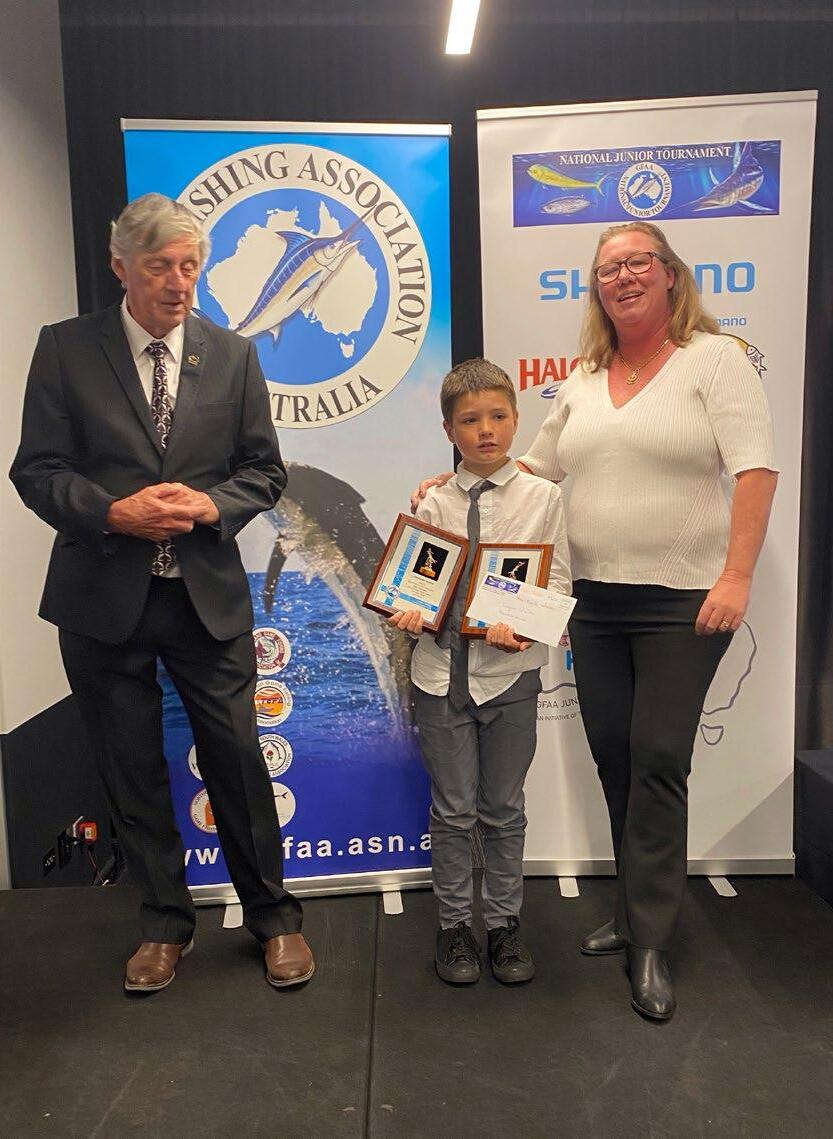


Solo game fisher Tyrone O’Connor, on yet another feisty stripped marlin. He was also awarded the Geoffrey Woolley Trophy for Most Meritorious Tag and Release achievement by a GFAA Adult Angler in Australian waters for his success, including a Bill fish Grand Slam of tag and release of a black, blue and striped marlin all in one day – alone!
Activities during the year include major events such as the Club’s annual Members Presentation Dinner, the annual Seafood dinner night, the annual fishing “Grudge Match” against Pambula, Eden and Wolumla Fishing Clubs, the family recreation and fishing trip away involving the Mex Williams Memorial Fishing Competition, a family Christmas Party and guest speakers to keep us informed. We also conduct DPI Fisheries NSW Fish Care “Learn to Fish” courses and a Shimano Kids Fish Fest. Again, these are listed on our site.
Tyrone O’Connor receiving the Sir Garrick Agnew Trophy for the angler who tagged the most billfish in Australian waters.
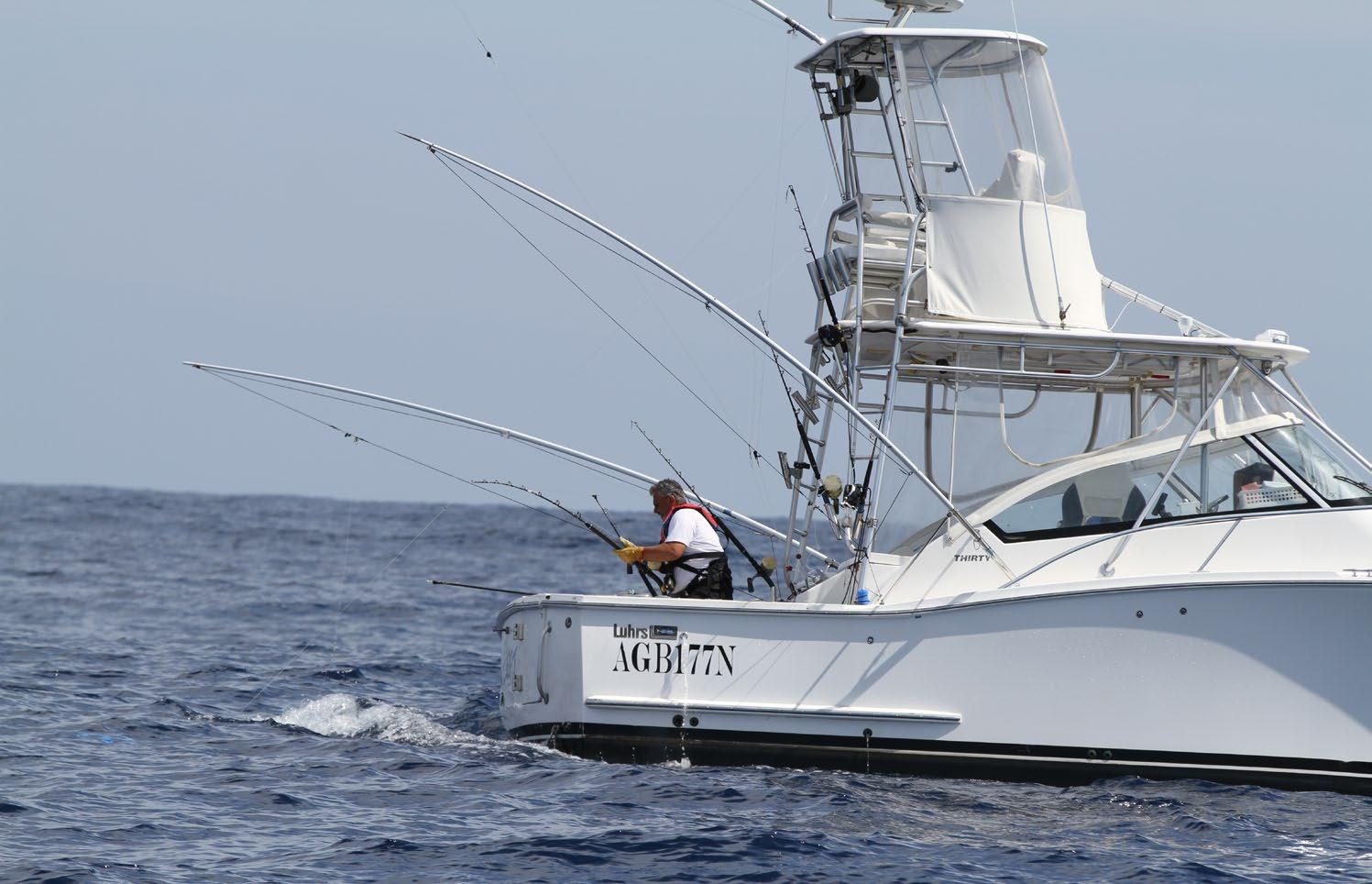
The Junior Fishing Competition and Workshops run by volunteers from the Merimbula Big Game and Lakes Angling Club over the Winter School Holidays were an amazing success. 232 juniors received a free show bag packed with $15 worth of fishing gear. Two workshops with 54 participants were held at Spencer Park, covering species identification, fishing regulations, knot tying, casting, rod rigging and much more. 50 lucky competition winners shared a prize pool of $4000 worth of fishing rods, tackle, tackle boxes and vouchers for Boss and Tackle World. Thank you to clubs Sponsors DPI, Boss, Tackle World and Flooring Xtra.
The bar is open from 6.30pm every Friday night and visitors are most welcome to come and enjoy the ambience.
Every Friday night, there is an up-to-date fishing report. Why not come along and find out where the fish are biting and what has been caught through the week?
If you have any questions about the club or its activities, just ask one of the committee or club members, that are present on a Friday night or contact us by tapping here.
See you at the Club.
Merimbula Big Game & Lakes Angling Club
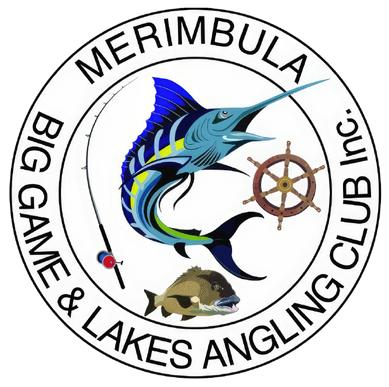

Logan is 10 years old and has been a member of MBGLAC for four years. He lives and breathes fishing, in particular the sport of game fishing is his passion. Logan puts all his spare time into perfecting his craft and is always pushing to catch the biggest fish, while still encouraging friends and family to be involved and fish in the sport he loves so dearly.
Logan is the youngest member of MBGLAC in its 83 year history to be crowned club champion at 10 years old. He has won the small fry champion three years in a row and currently holds four club records. He has led the club in capture points for the last two years.
Logan’s success has not only been in club land, he is a NSW and Australian record holder. He currently holds 21 NSW records across senior, junior, and small fry male categories. Species include southern bluefin tuna, bonito tuna, Australian salmon, silver trevally and mahi mahi. Plus, a range of NSW trophies over the last two years, one being the George Creamer “Sea Devil” Memorial Trophy for the 21-22 and 22-23 seasons.
He currently holds six Australian records in the small fry category, species include bonito tuna, Australian salmon, silver trevally and mahi mahi.
He won the Peter Bennett Trophy for Most Meritorious Tag & Release Achievement by a GFAA Junior in Australian Waters for 22-23, and he is the current GFAA junior tournament champion for both capture and tag and release for 22-23 game fishing season, taking home.
Logan holds the record for the most fish logged in the GFA junior tournament at 350 plus for the 22-23 season.
Along with the swag of trophies and records, Logan has also had three recapture fish, two Australian salmon and a kingfish in his short game fishing career.
A shining light in our sport, Logan is an outstanding role model for our club and state. He has a bright future ahead in game fishing with the support of his family and club the sky’s the limit for the incredible young man. He is an inspiration to his friends and family, who are incredibly proud of him and his achievements.

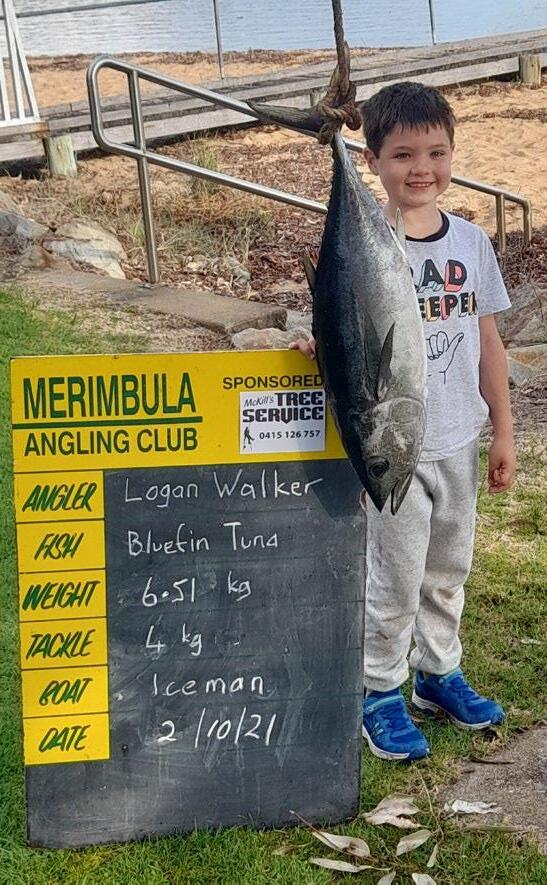
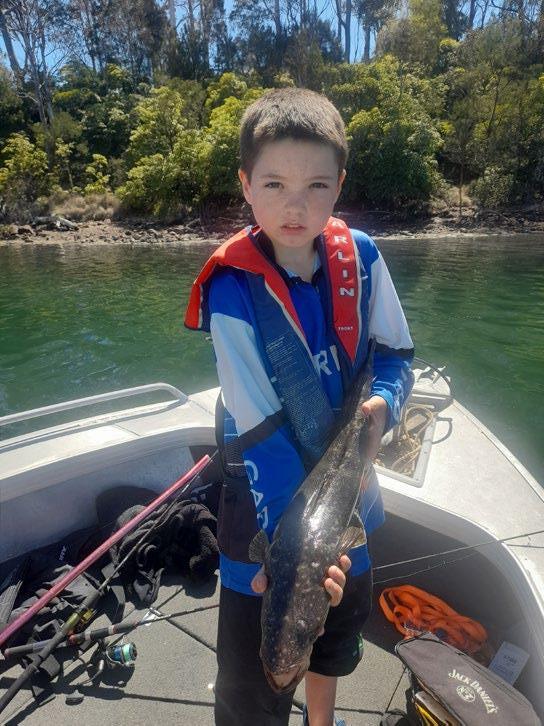
SPOOLED LOOKS AT WHAT’S NEW IN THE MARKET. FOR MORE INFORMATION ON ANY OF THE PRODUCTS, SIMPLY TAP THE BUTTON SHOWN.



Imitate the most prolific inshore forage fish with the ZMan Mulletron!
The ZMan Mulletron is a realistic mullet profile that appeals to a wide variety of fresh and saltwater species, with its range of proven colour options and a rounded, wedgeshaped tail that activates a realistic swimming action at all retrieve speeds. From faster retrieves for aggressive predators, to those super slow retrieves that are required to get the bite when the fish are sluggish, or the bite shuts down, the Mulletron makes them eat. Other true-to-life body design features include natural gill plates, eyes, and fin detail.
ZMan’s 10X Tough ElaZtech construction makes Mulletron naturally buoyant, allowing it to be rigged for fishing from the surface to the depths, while back and belly hook pockets simplify weedless rigging and perfect jighead alignment. Available in versatile 3.3” and 4” poddy mullet sizes, this realistic presentation will be a favourite for mullet loving predators such as barramundi, mangrove jack, flathead, mulloway and more. Fish on!

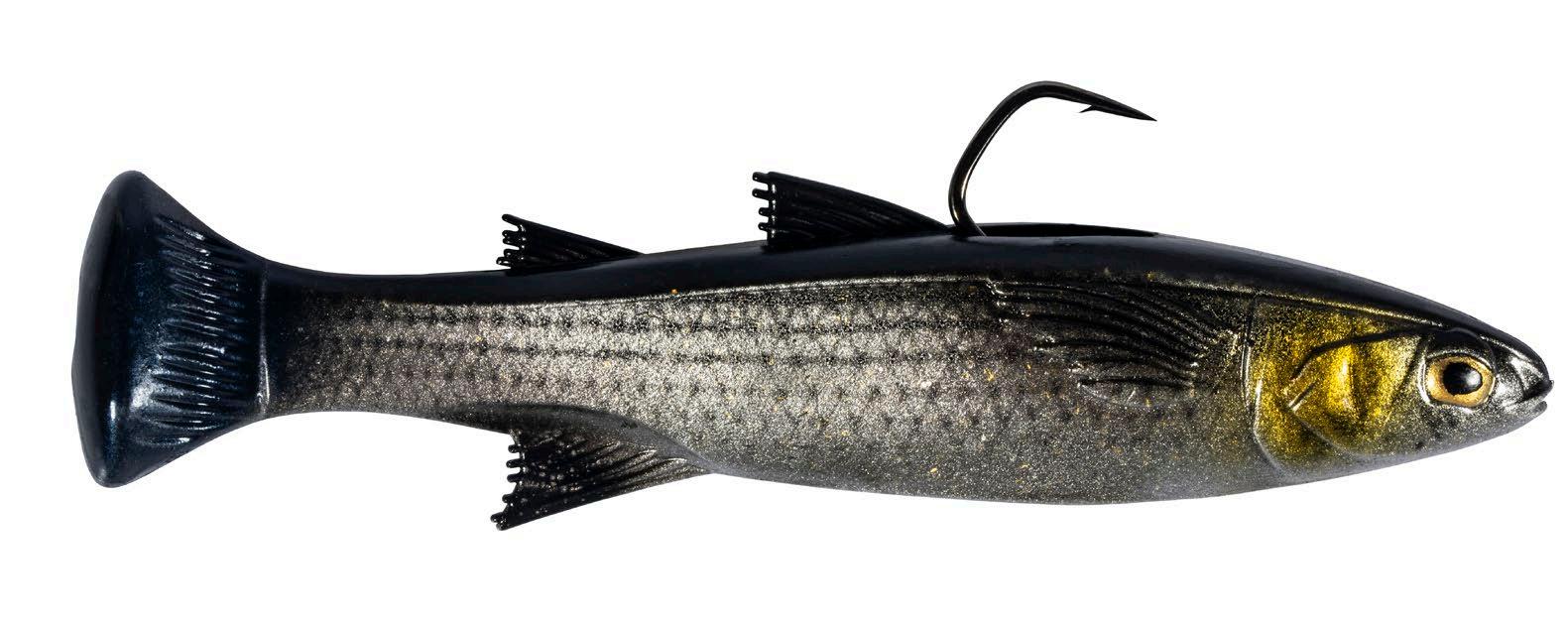
Hands down the most realistic mullet profile we’ve seen!
With an ICAST award for best soft plastic you know that the ZMan Mulletron LT is going to turn heads and catch fish. This innovative top hook, linethrough designed, true-to-life mullet profile features 10X Tough ElaZtech construction, photo printed realism and a wedge-shaped tail that presents a fluid, natural swimming motion at a wide range of retrieve speeds.

Available in 4.5” and 6” sizes, in 6 dynamite colours, this hyper-realistic look is combined with a line-through design that allows the plastic to slide up the line after the hook set, reducing leverage from the fish and enabling the custom, heavy duty sickle hook to remain securely pinned in the fish, even during the most aggressive head shakes, jumps, and tail walks.
The 4.5” Mulletron LT is fitted with a heavy-duty, black nickel needlepoint 3/0 hook and features a 1/4oz internal weight and 3/4oz overall casting weight. The larger 6” model is equipped with the same style of heavy-duty hook in a 5/0 size, with a 3/4oz internal weight and overall casting weight of 1 3/4oz.
A moderate and perfectly balanced sink rate, thanks to the internal weighted harness and buoyant ElaZtech superplastic, allows the Mulletron LT to maintain an upright posture on the slowest retrieves, on the fall, and even at rest on the bottom, to attract fish and trigger strikes.
Mullet are one of the most popular prey fish in both our fresh and saltwater systems, with captures through the R&D process including, barramundi, mangrove jack, Murray cod, mulloway, flathead, trevally and loads more. Fish on!


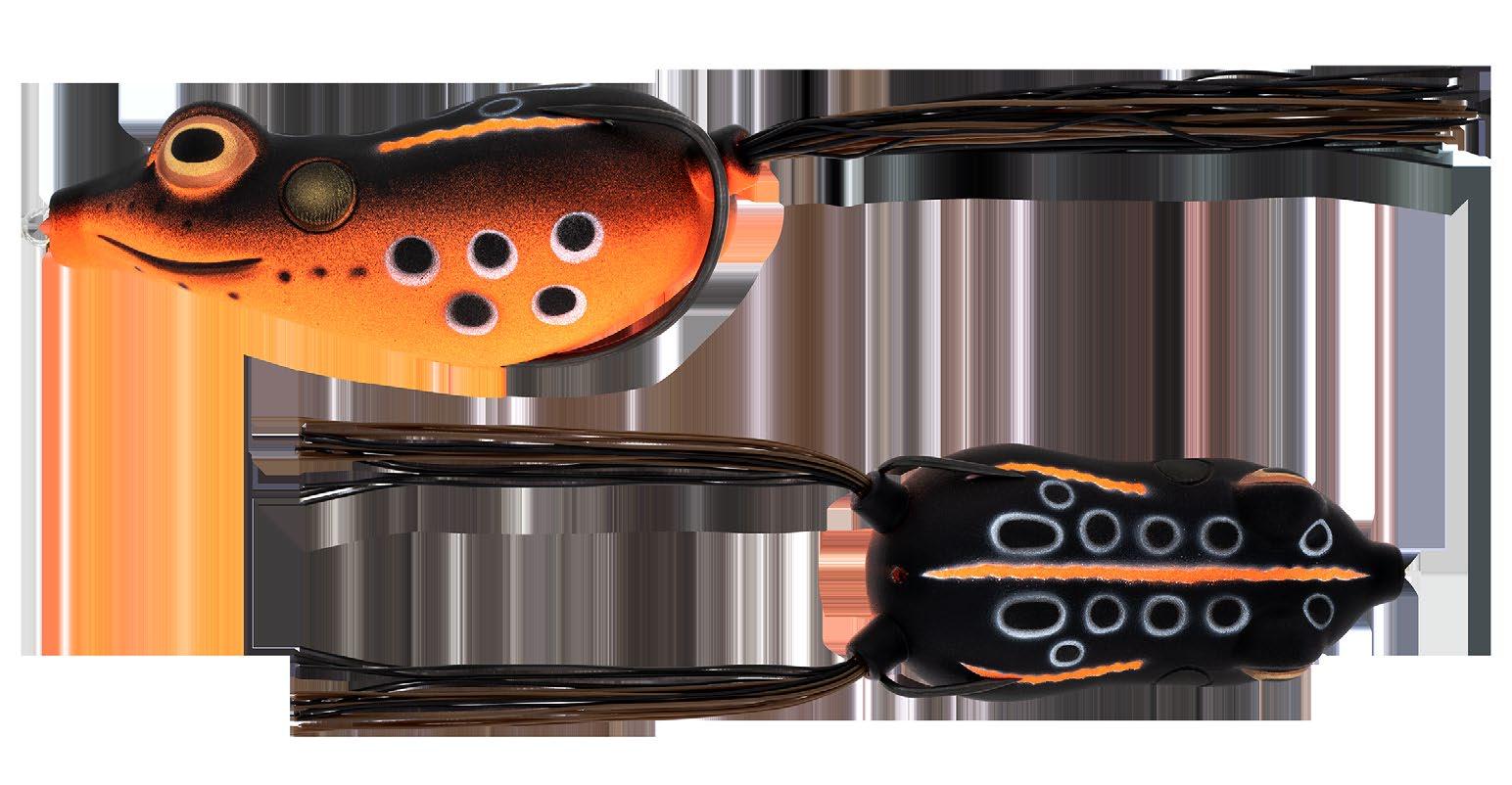
The hole in the water a Murray cod makes when it implodes on a topwater lure is a thrill only those who have witnessed it can appreciate. The new Steez Bull Frog is a mega-sized hollow body frog jointly developed between Daiwa teams in Japan, USA and Australia to cater for chasing trophy sized fish on the surface.
There are few lures that can be placed and fished through water like a hollow body frog, and this is really where this lure comes to life. Walking tight creeks and rivers with nasty overhangs and trash mats piled on the water’s surface is no match.
The large profile and heavy weight of the Steez Bull Frog will allow anglers to gently walk the lure over and around structure, and pausing when it reaches an opening just waiting for that explosion.
The Steez Bull Frog is 100mm in length, weighs 45 grams and is available in four colours. Fitted with a high-quality custom-made double frog hook which is more than capable of handling metre plus trophy cod there is no lure more fun to fish than a frog, and there’s none with the presence of the new Steez Bull Frog.

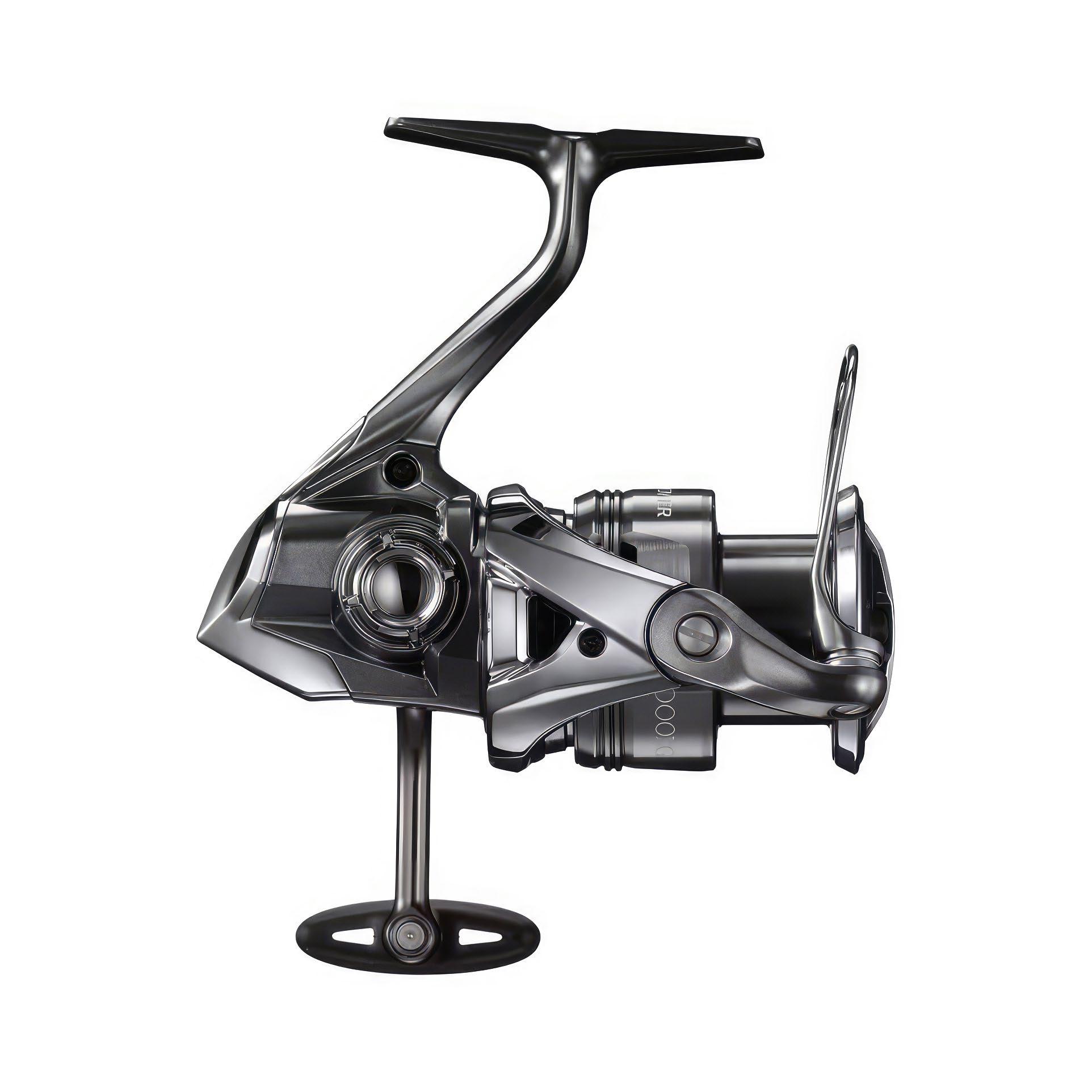
TWINPOWER FE continues to expand the possibilities of spinning reels and has achieved a rock-solid evolution. From the first model to the current model, we have consistently pursued durability and functionality in actual fishing without over-decorating. This unchanging concept provides a sense of security to the core anglers who frequents the field.
TWINPOWER FE has a strong connection with anglers, becoming part of the experience and engraved in their hearts and minds. TWINPOWER FE features the same cutting-edge technology found in STELLA: INFINITYXROSS, INFINITYDRIVE, INFINITYLOOP, DURACROSS, and ANTITWISTFIN. Pursuing functionality down to every single detail, it becomes an honest companion to anglers.

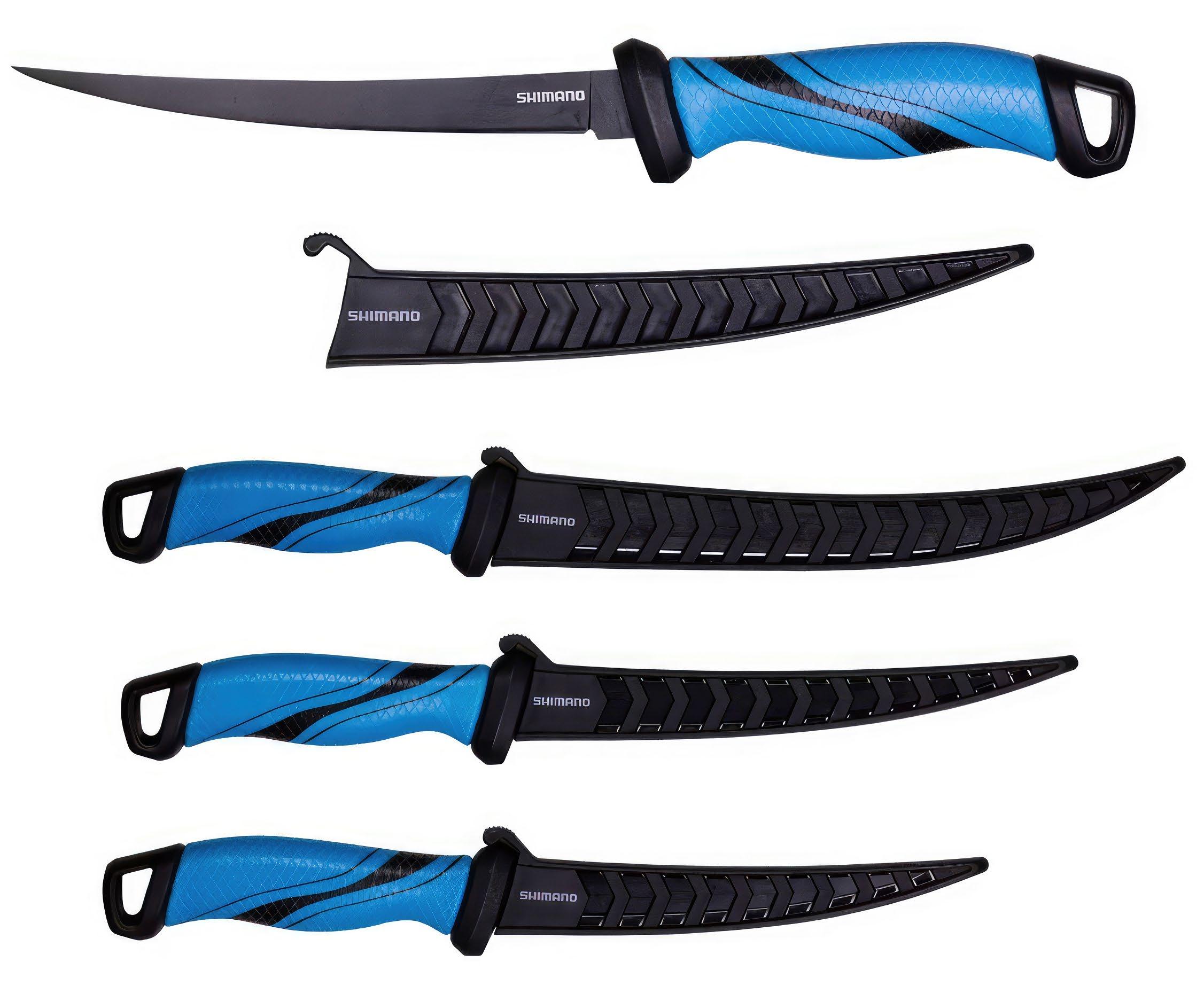
Meticulously crafted, these knives feature a 5CR15 stainless steel blade with a Teflon coating for rust resistance. The vented sheath safeguards the sharp edge from moisture. The soft grip, scale pattern handle, designed to prevent contamination, ensures a secure hold, even in wet conditions. With sizes of six, seven and nine inches, there’s craftsmanship, innovation, and excellence in every cut.

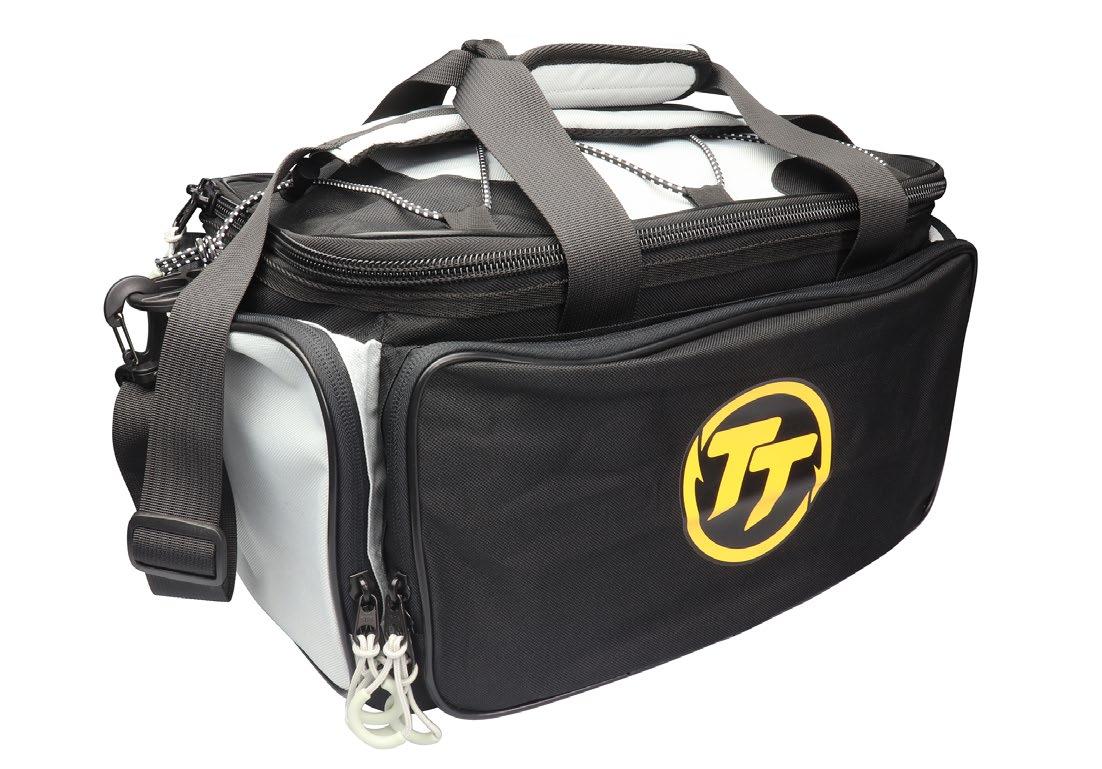

Keep your tackle safe and sorted with the stylish new range of TT Tackle Storage Bags, available in a Standard 22L option and Large 36L model.
These tough tackle bags feature a durable, water-resistant outer material, combined with a rubberised internal lining to protect your gear from the elements. A hard, moulded base provides additional protection while maintaining the structure of the bag, making accessing tackle trays and other gear quick and simple.
Externally the bag is loaded with storage compartments and finished with quality SBS zippers to ensure smooth and easy access to your gear. An additional mesh pocket allows for the drying of wet items, such as fishing gloves or water shoes, while bungee cord on top of the bag provides additional storage and quick access to another tackle tray, rain gear or other items. That’s not the end of the storage options though, with an internal storage pocket in the lid of the bag adding further to its versatility.
Both models feature sturdy side carry handles, along with a comfortable, removable shoulder strap. Keep your gear safe and sorted on your next adventure with a TT Tackle Storage Bag.

The aim was to create a range of high-performance light surf rods to join the TT Fishing stable, and Siva delivers.
Designed for anglers casting lures or baits from the bank, beach, or rocks in search of tailor, mulloway, salmon and other saltwater predators, the Siva range is built on light, responsive and powerful Toray Carbon blanks that feature 3XP technology for increased strength and stopping power in the tip, without sacrificing sensitivity.
The quality build continues throughout the rod with Fuji reel seats and Fuji guides with Alconite rings. This quality build is complemented with a slick and stunning modern aesthetic that stands out from the crowd, and a split butt design, with full length wraps, that reduces weight and increases comfort over extended sessions. A two-piece design makes transport and storage safer and simpler.
The team have spent plenty of time getting the builds and actions right, so that the three models cover Australia’s favourite land-based target species and the conditions encountered when targeting these species. Get one rigged and get out there!


A jerkbait profile with a difference, the ZMan 4” Finesse ShadZ is loaded with strike triggers including a narrow minnow profile body, micro ribbed back, and long, worm-like tail. Being 10X Tough ElaZtech, which is naturally buoyant, super-soft and flexible, the tail dances with the slightest movement imparted by the angler or water movement, attracting fish and triggering strikes. In fact, it is virtually impossible to keep this tail still in the water!
Available in a range of natural colours, including favourites such as Pearl, Shiner, and Watermelon Red, the 4” Finesse ShadZ has accounted for a variety of species, including snapper, flathead, and bream. Adding to its versatility, the bulbous end on the tail creates a tight swimming action when retrieved at speed making this plastic an effective option for targeting tailor, salmon, mackerel, tuna, and other pelagic species.
A belly slot makes rigging simpler, especially when rigging weedless, while also holding scent well, along with the micro ribbing on the back of the plastic. The ZMan 4” Finesse ShadZ rigs well on size 1/0 and 2/0 TT jigheads, making it ideal for a wide selection of species in the fresh and salt. Get that tail dancing and your rod bending!


The Caius 150HGC is an exciting new addition to the affordable price range of low profile baitcasters. The Caius borrows is sleek design from it’s sibling the Curado M, but delivers performance on a budget. With three stainless steel bearings plus one roller bearing, VBS Braking System and Super Free Spool, casting is effortless and uncomplicated. Keeping the same gear ratio of gear ratio of 7.2:1 it will really get those lures flying.

The popular range of ZMan FrogZ has received a boost with the addition of three new colours, Beer Run, Gold Rush, and Calico Candy, just in time for the opening of Queensland barramundi season.
Not just a favourite for saltwater barramundi though, the 4” Hard Leg FrogZ and 4” Pop FrogZ are also impoundment barra favourites and dynamite on Murray cod and other larger surface feeding predators. The new colours will also be available in the smaller ZMan 2.75” Finesse FrogZ, a favourite for barramundi, mangrove jack, bass and other surface feeders that might prefer a more compact presentation.


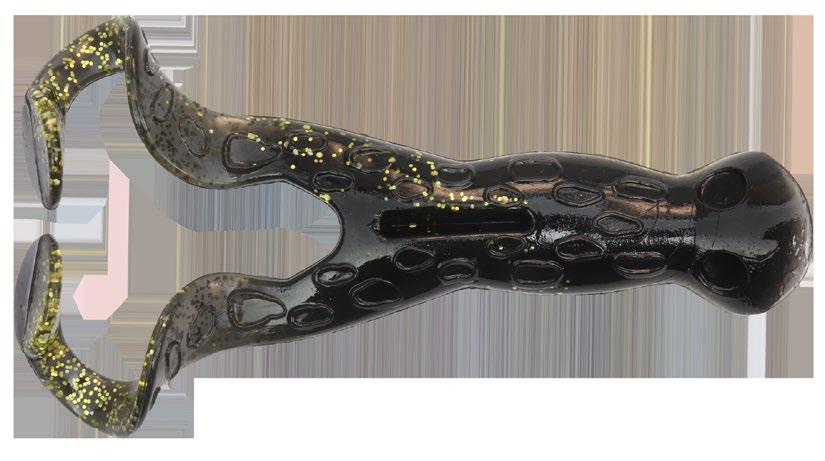
ZMan’s proprietary ElaZtech material has many benefits when it comes to frog profiles, including natural buoyancy to assist with keeping the plastic on top when weedless rigged on a TT ChinlockZ jighead, along with 10X Tough durability for simpler and stronger rigging, with a reduced chance of tearing the plastic on aggressive strikes and stubborn fights. The super-soft and flexible material also encourages maximum movement and action, with the bonus of feeling realistic on the strike and clearing the hook easier for a solid hookset.
When it came to selecting new FrogZ colours we worked closely with fishing guides and keen frog anglers to tick the boxes that mattered to them. The Beer Run colour provides a Pearl top for excellent visibility, with a clear belly and gold glitter for added attraction and strike triggers. Gold Rush on the other hand is all about a solid profile, with its black body and gold glitter belly making it ideal for fishing low light, night applications and dirty water. Finally Calico Candy is a red / orange base to fire up the strike, loaded with fleck and glitter for added realism and a more natural appearance.

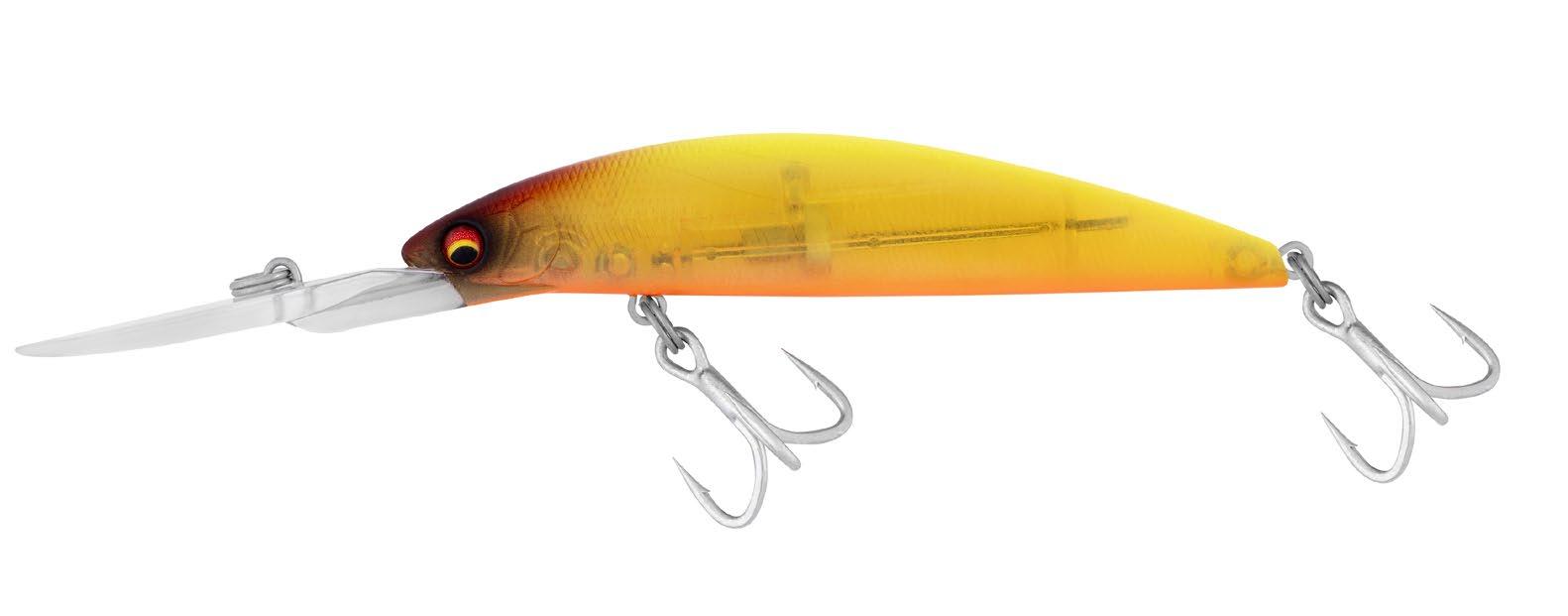
The new Current Master 93-EXDR is the extra deep running version of Daiwa’s popular mid-size jerkbait. Quickly becoming a go-to lure for northern anglers looking for a smaller profile barramundi or mangrove jack lure, the new EXDR model reaches depths of 11ft and enables anglers to take advantage of new technology like forward-facing sonar to target suspending fish in the open areas of our lakes and rivers. This new technique requires lures that dive deeper than traditional methods, and this is where the EXDR model comes in.
Not just a one-trick pony though, this deeper diving model is equally at home where you require a lure to dive steeply down into the strikezone. When fishing undercut banks or snags on a steep edge, you need a lure that can get down into the zone quickly and stay there, suspending perfectly in the face of your tareget species.
Fitted with BKK Viper-41 treble hooks and HD rings the Current Master EXDR is ready to tackle tough predators as soon as you tie it on. Featuring Daiwa’s Maglock weight-transfer system these lures fly long and true, making casting through tight tree lines a breeze. If you’re looking for a new go-to deep running barra lure, look no further than the new Current Master 93-EXDR.


Here’s your chance to WIN some pretty COOL STUFF from Magazine
3 LUCKY ENTRANTS WILL WIN A 5 LURE PACK FROM Colours will
